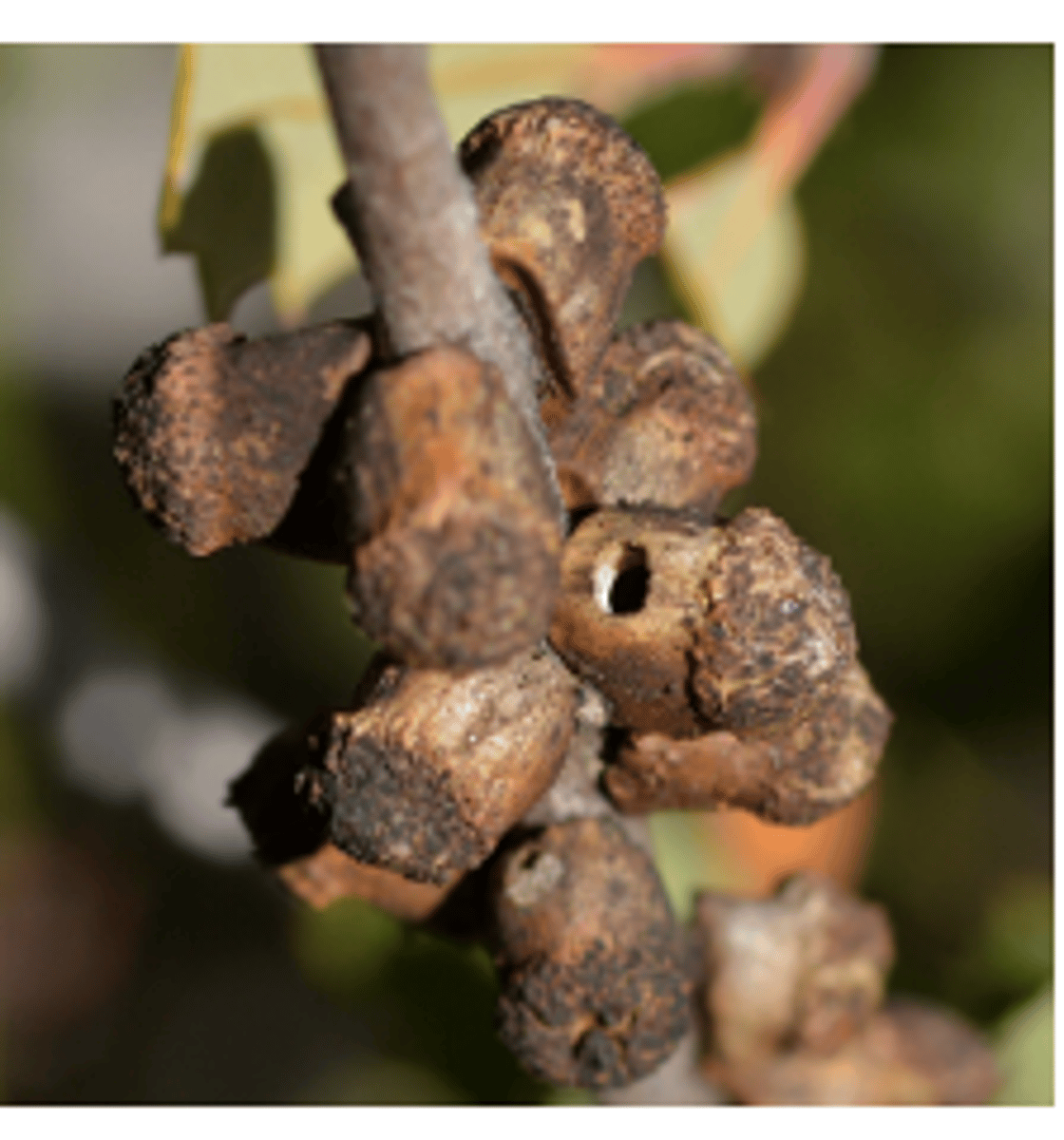Lab 4 Plant Adaptations
1/74
There's no tags or description
Looks like no tags are added yet.
Name | Mastery | Learn | Test | Matching | Spaced |
|---|
No study sessions yet.
75 Terms
Plants
multicellular eukaryotes that inhabit land, freshwater, and marine environments
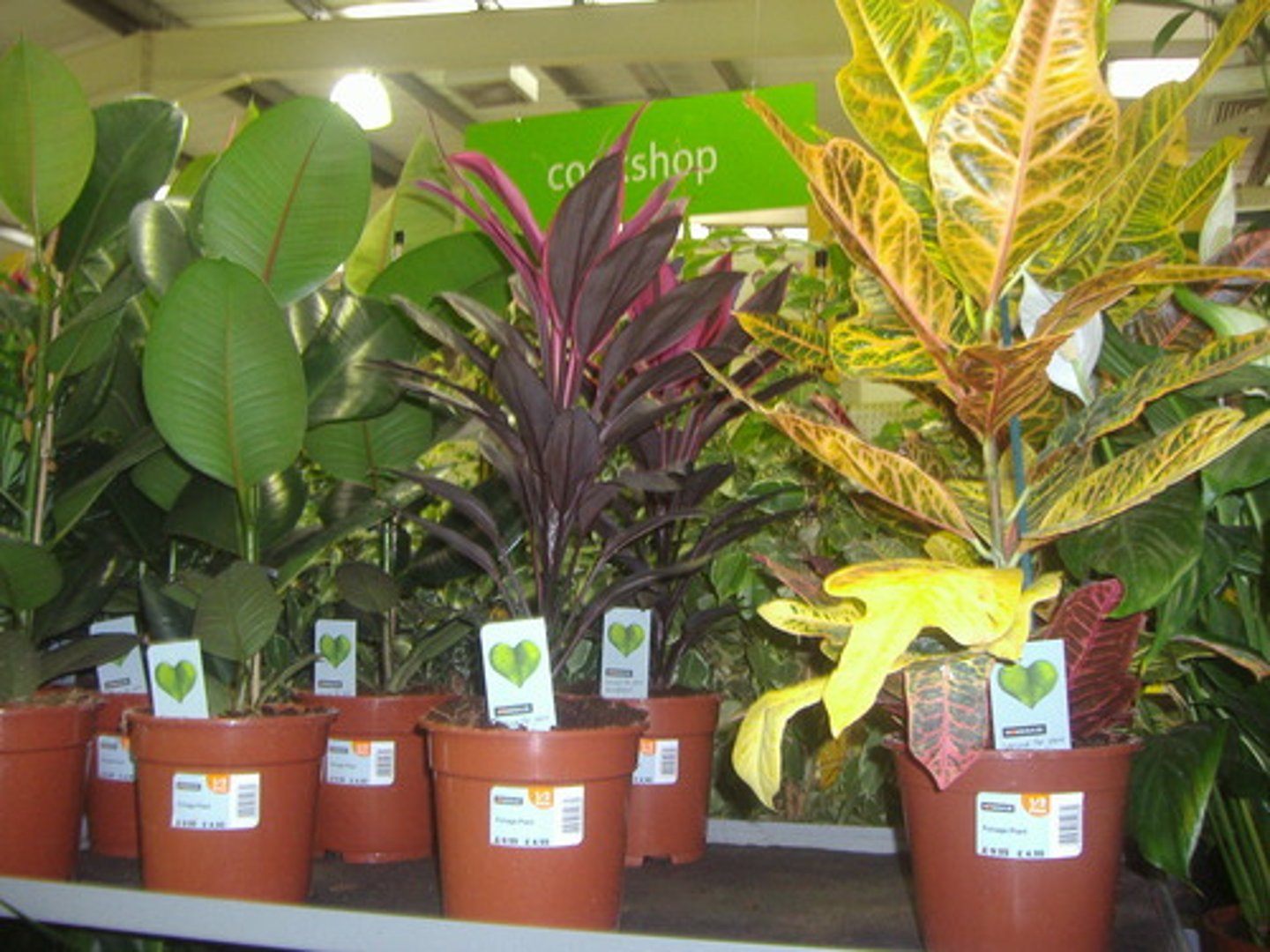
modular growth
repetitive production of units of growth that lead to increased plant size
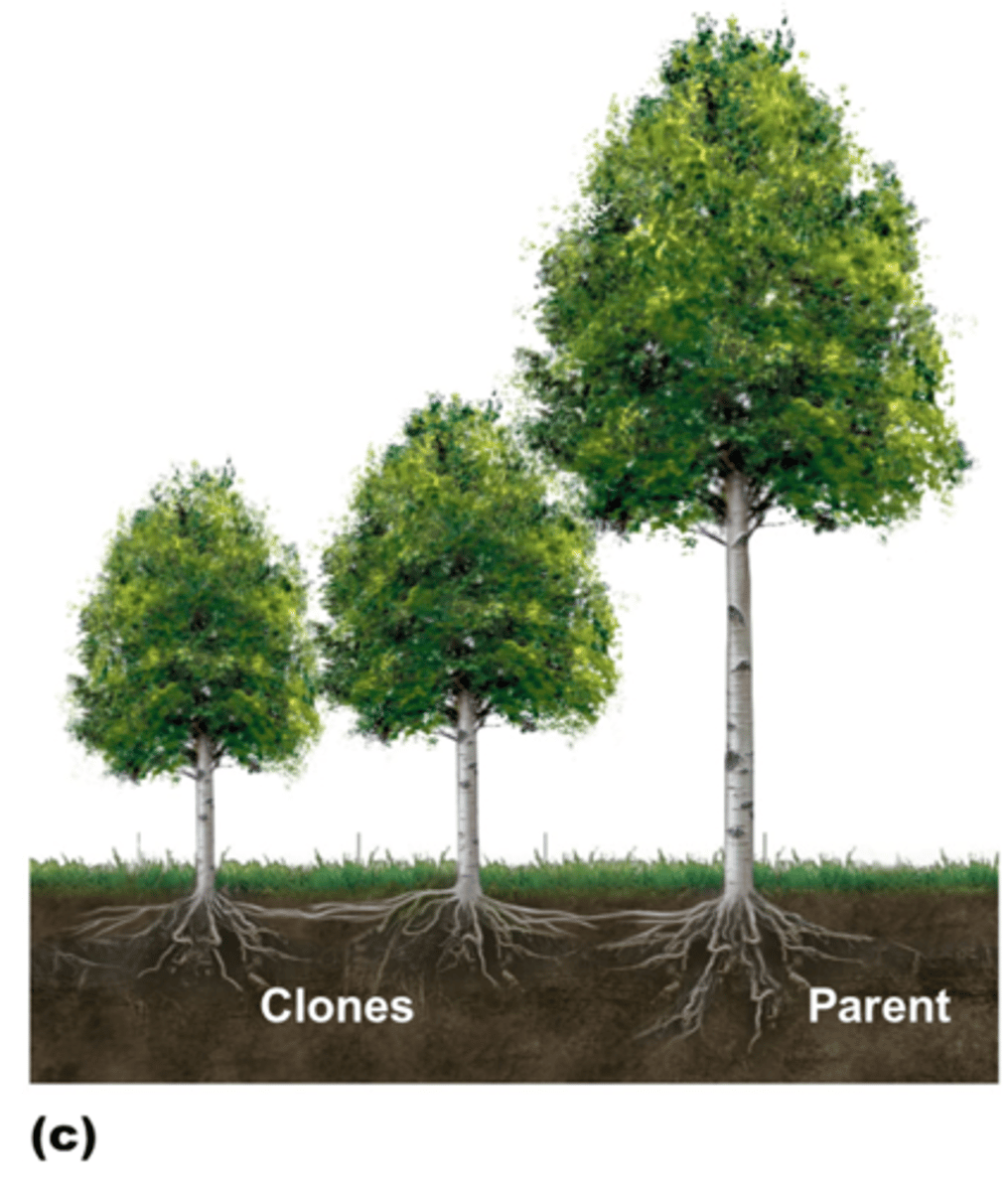
intermediate growth
a plant can grow throughout its life
- has the ability to grow new limbs from cut off parts/sections of plant
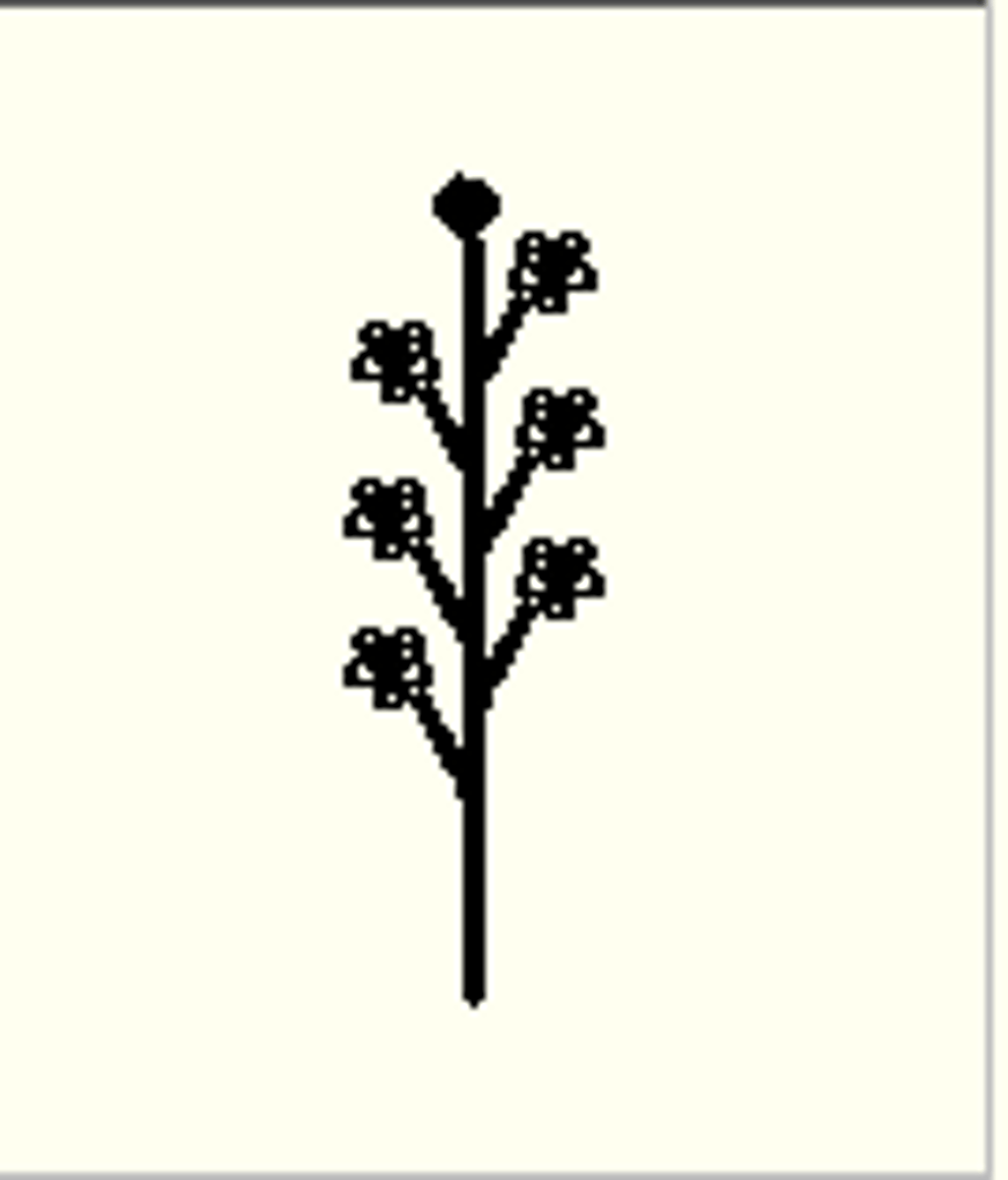
Plants organs
- stem
- leaves
- roots
- flowers
- fruits
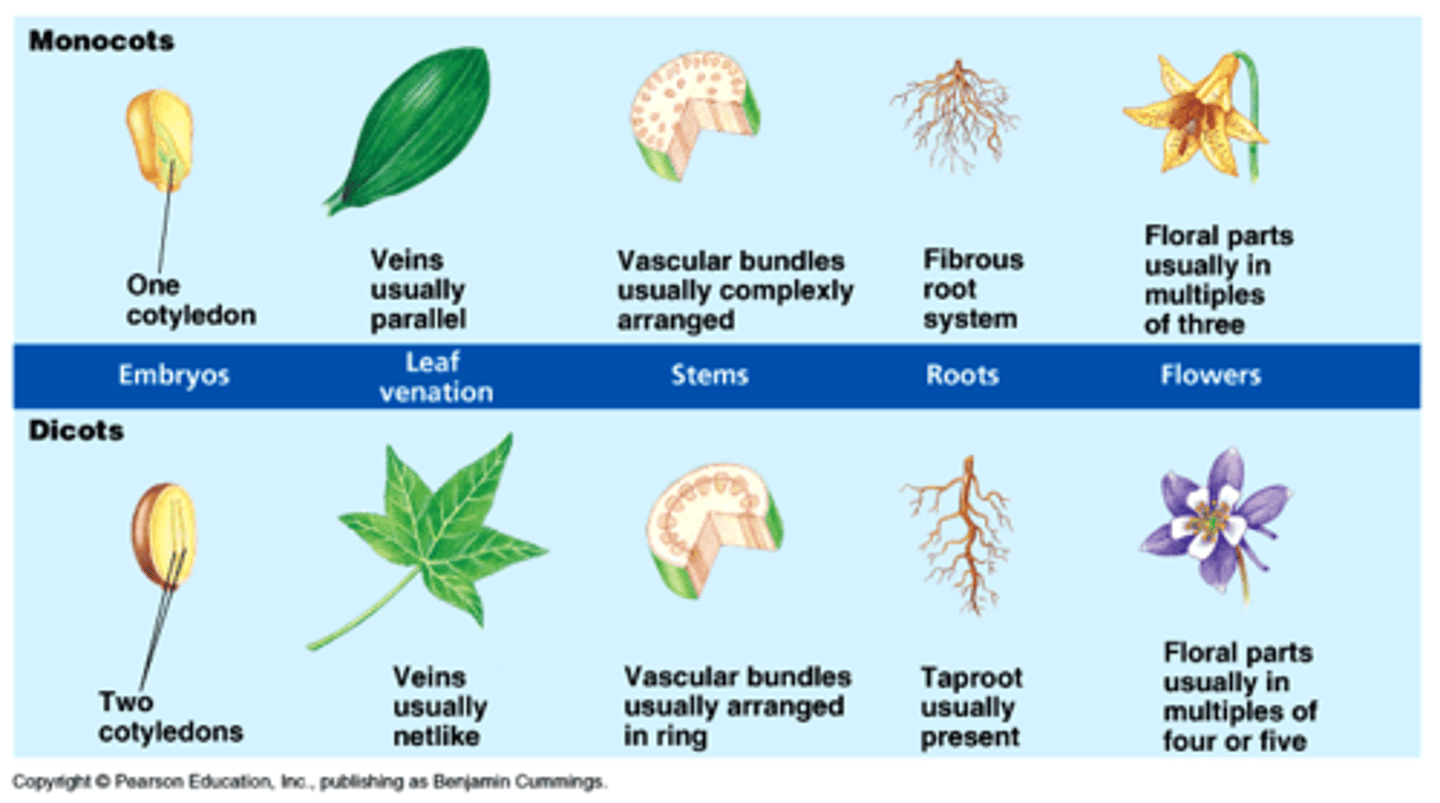
shoots system
anything above the soil line
---------------------------
Responsible for:
- photosynthesis
- respiration
- transpiration
- storage
- suppot
- translocation
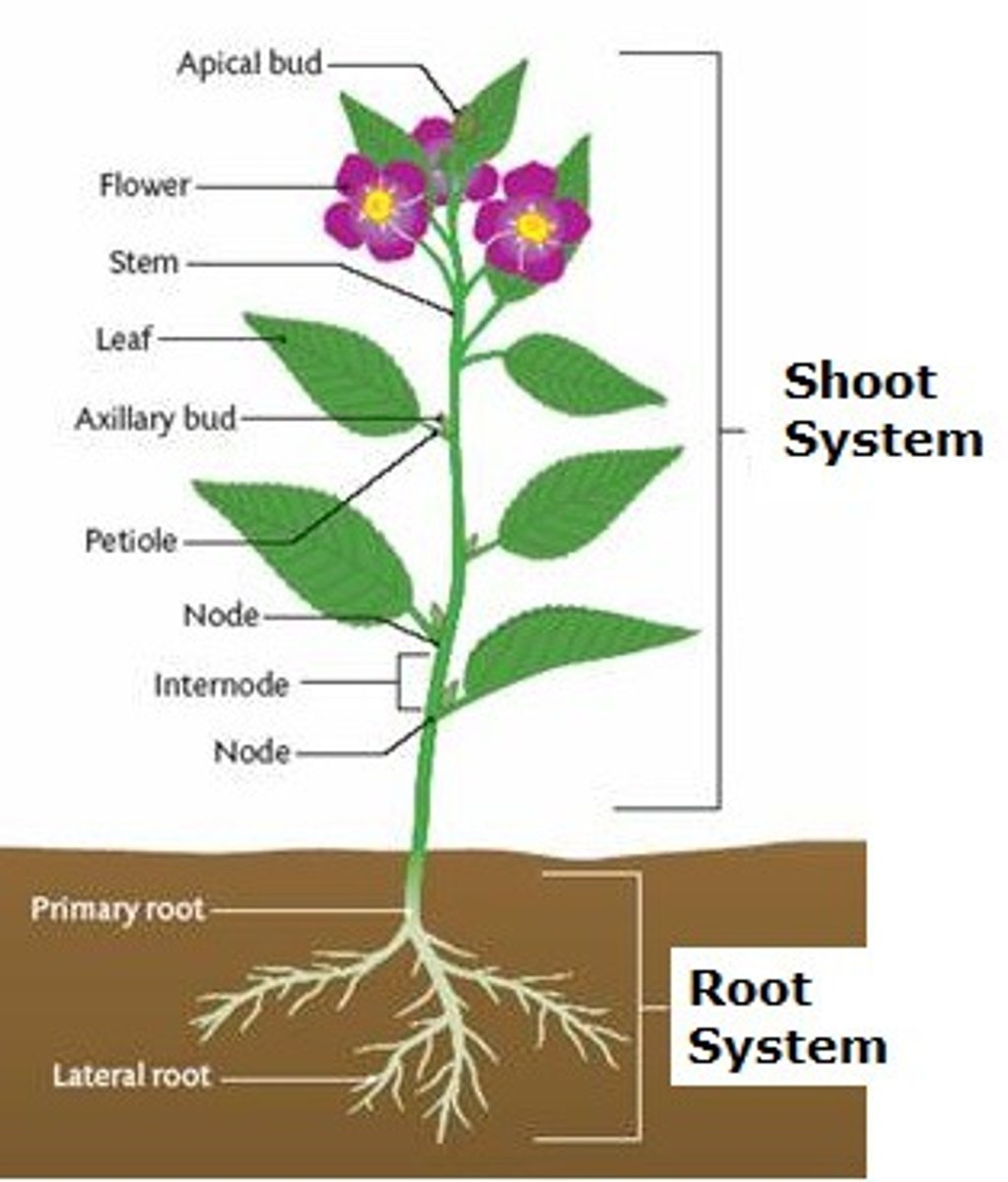
roots system
anything below the soil line
---------------------------
Responsible for:
- anchorage
- absorption
- storage
- respiration
- synthesis of compounds
Node
link regions between a leaf and a stem
- located on the stems axis
---------------------------
leaves come off of nodes
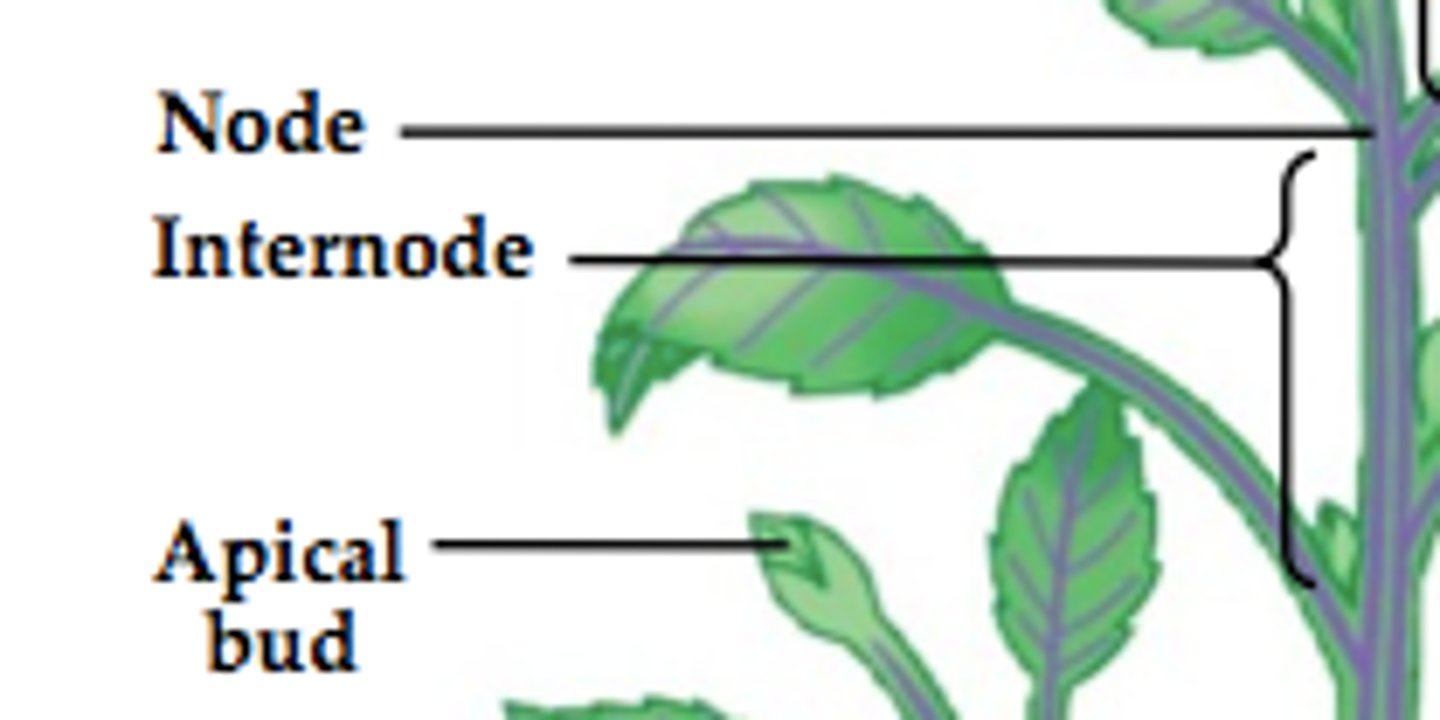
Internodes (stem structure)
regions between nodes
- its what connects the nodes
- located on the stems axis
---------------------------
Internode length is a good way to identify plants
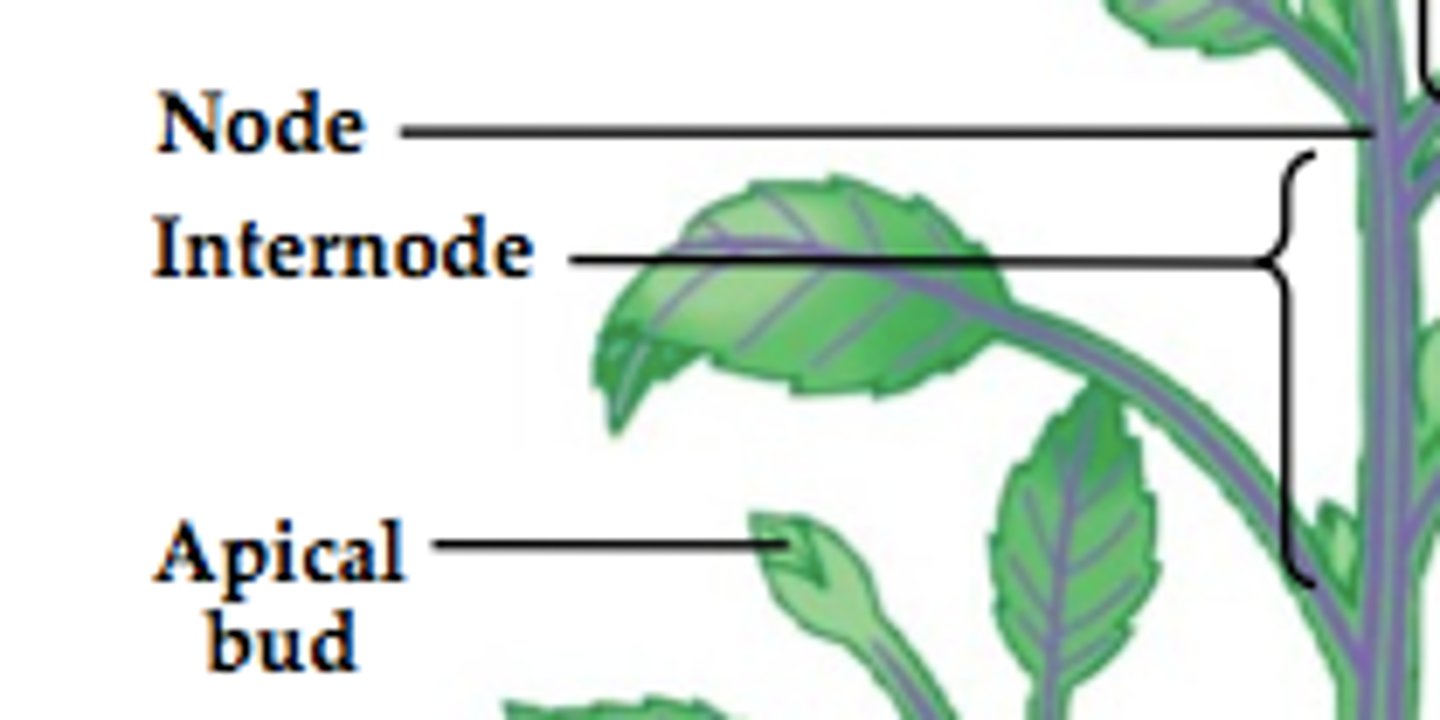
buds
small embryonic shoots that can be actively growing or dormant
- are made of flexible tissue to allow for the formation of immature leaves, stems, and flowers
- are mostly present in sessile plants
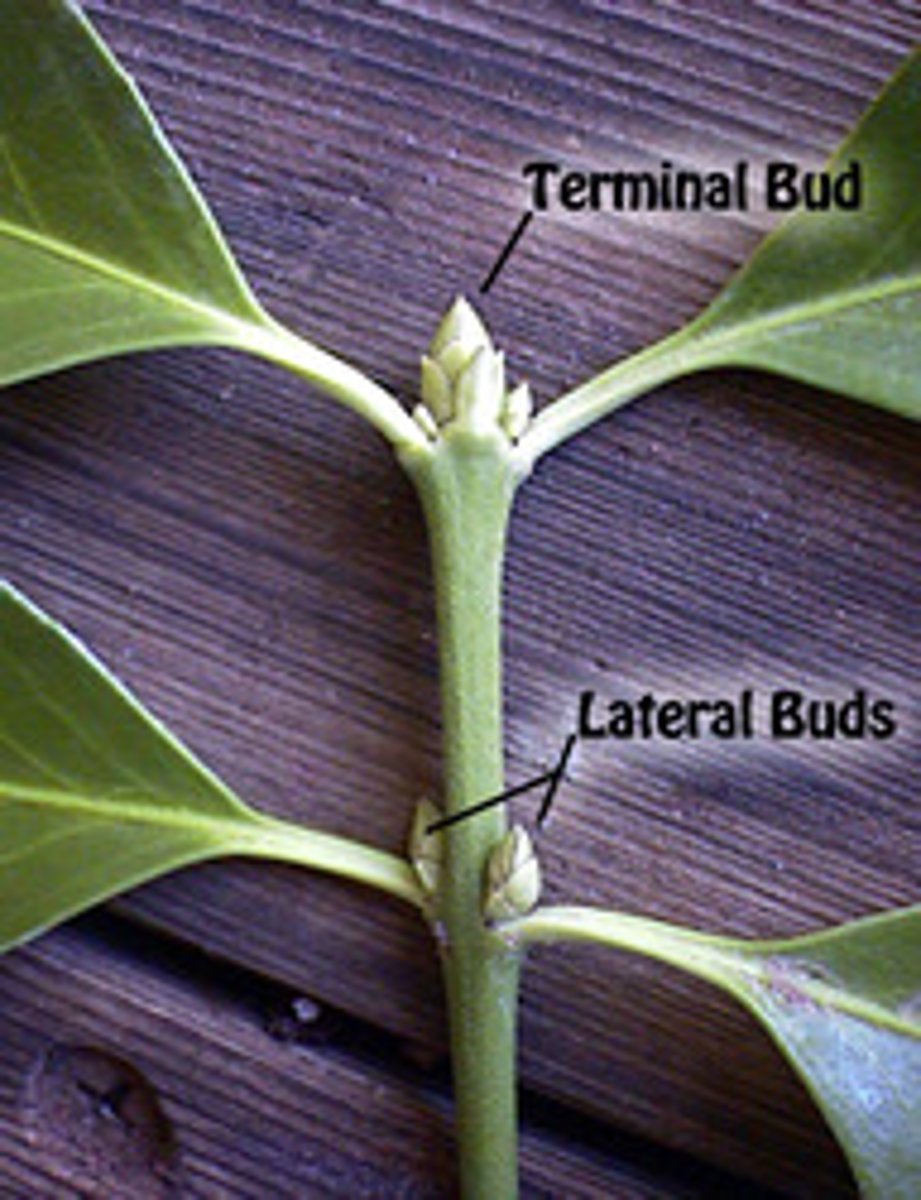
Sessile
nonmoving plants
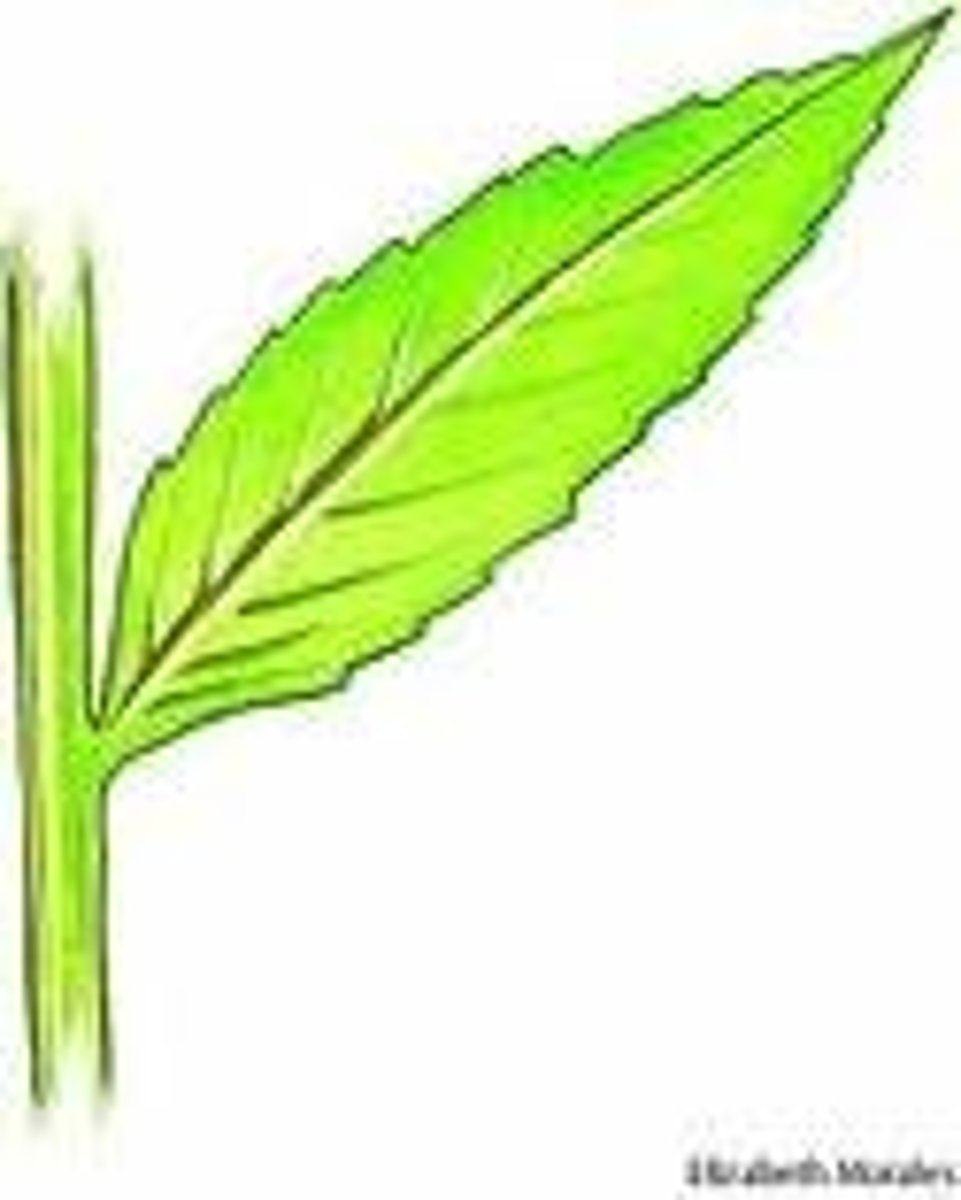
apical (terminal) bud
buds on the tip of stem
- responsible for vertical growth
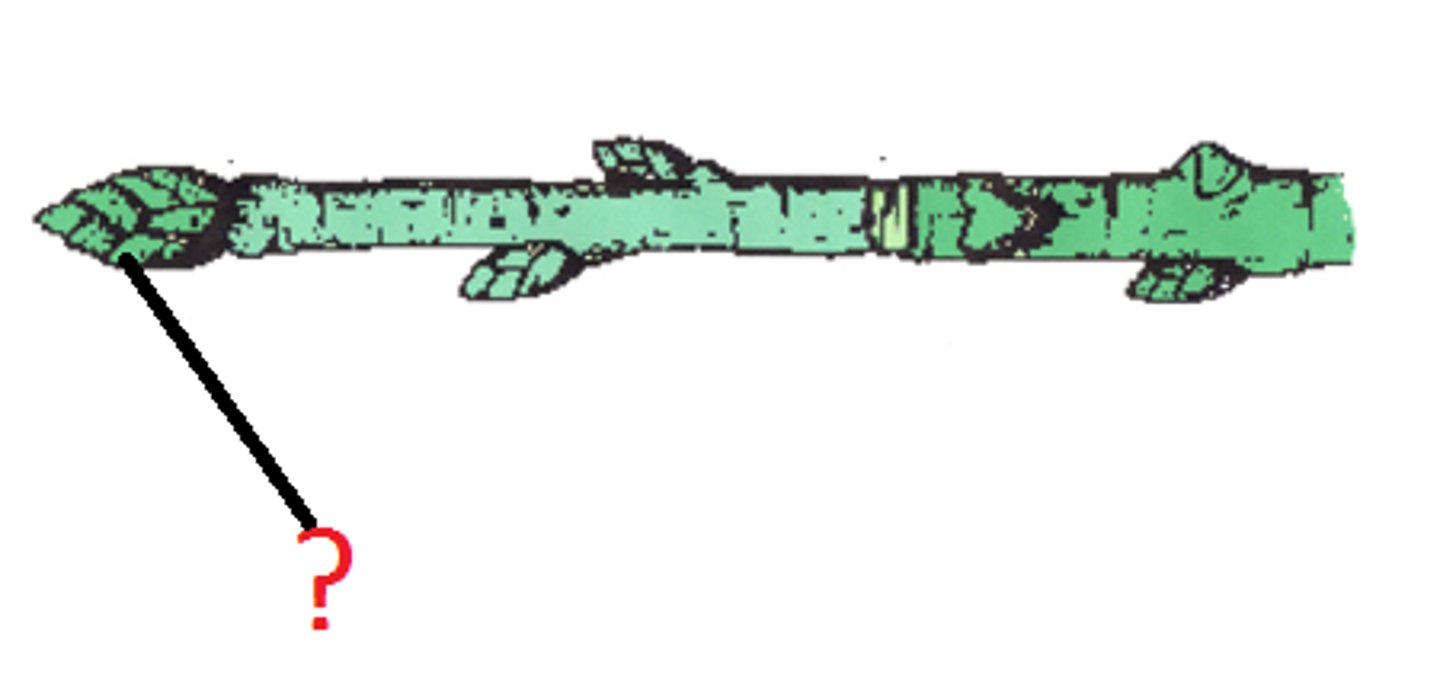
axillary (lateral) bud
bud on side of stem
- responsible for lateral growth
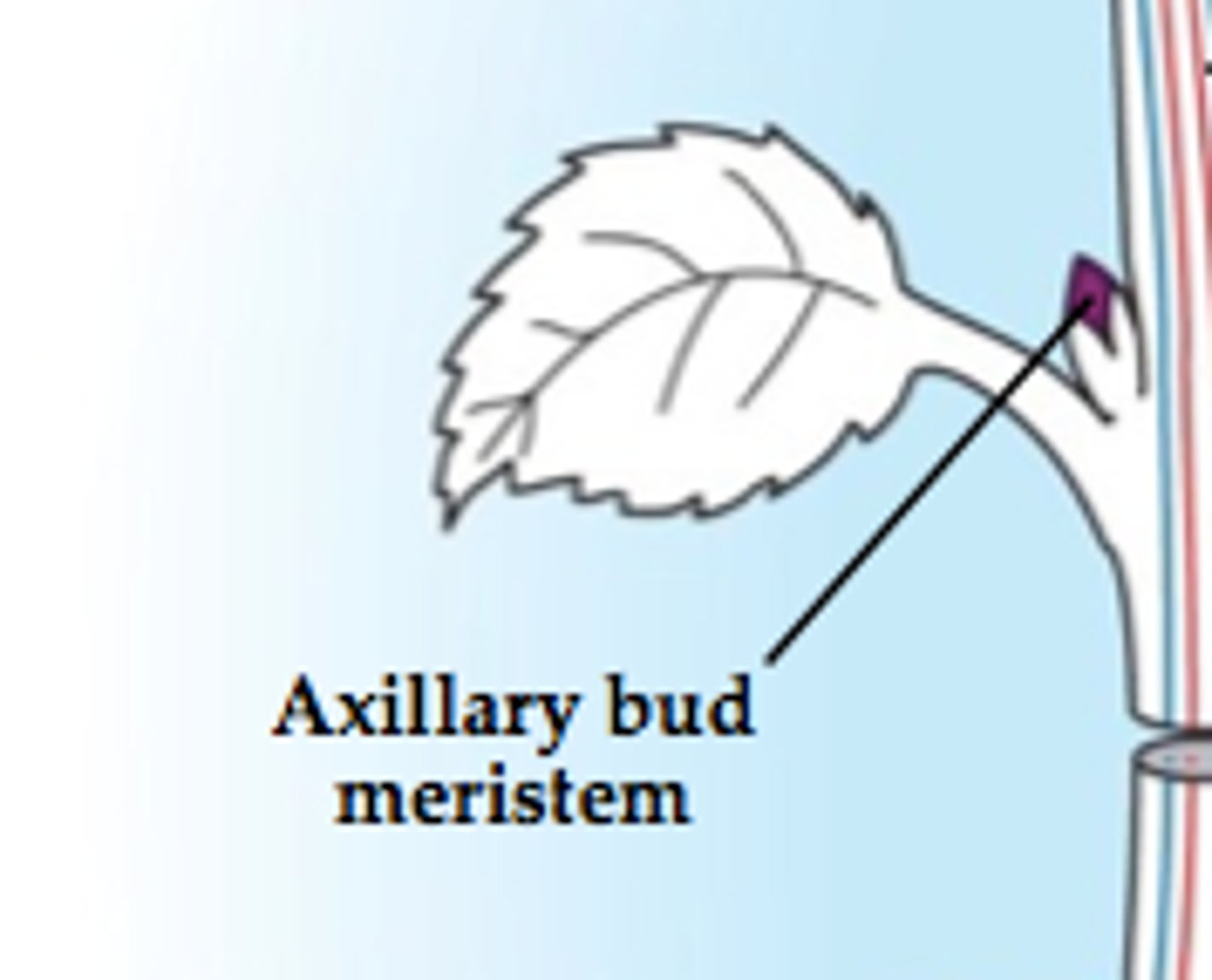
Auxin
plant hormone released from apical buds
- allows for more vertical growth
- suppresses the axillary lateral buds
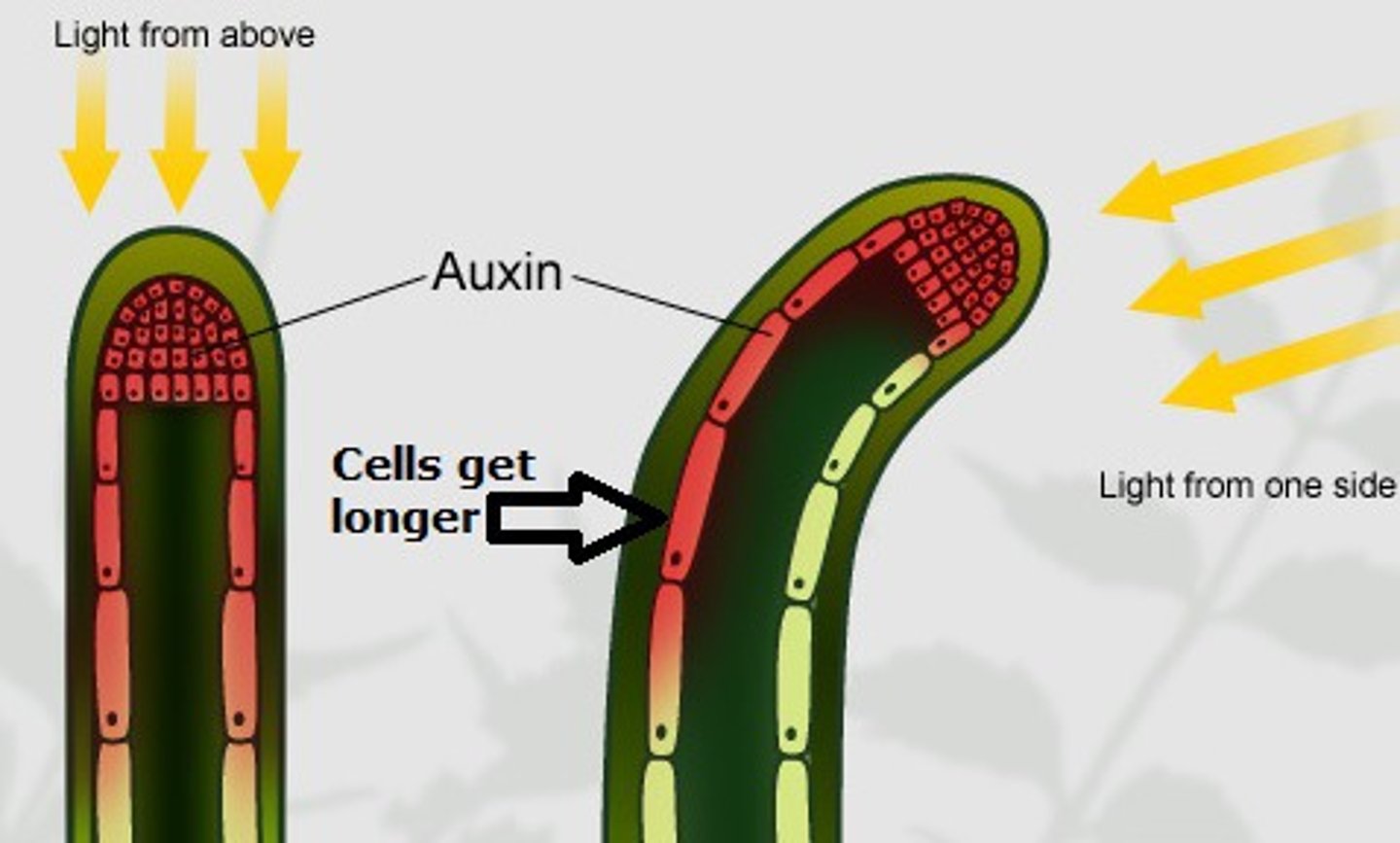
What happens if auxin is removed?
suppression of vertical growth
- more lateral growth is occurred
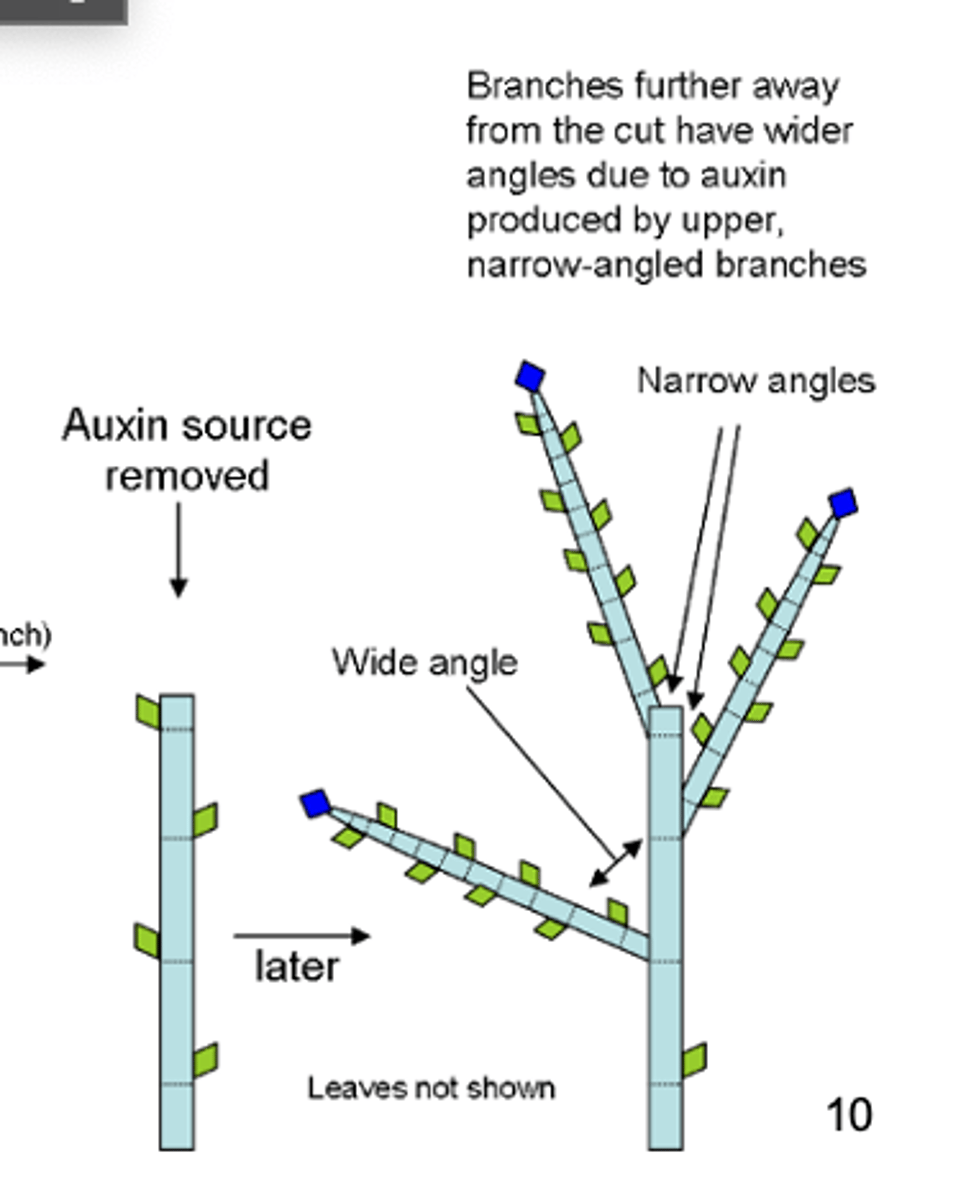
Gymnosperms
seed plants
- produces cones
- can be different for both male and female
---------------------------
DOES NOT PRODUCE FLOWERS
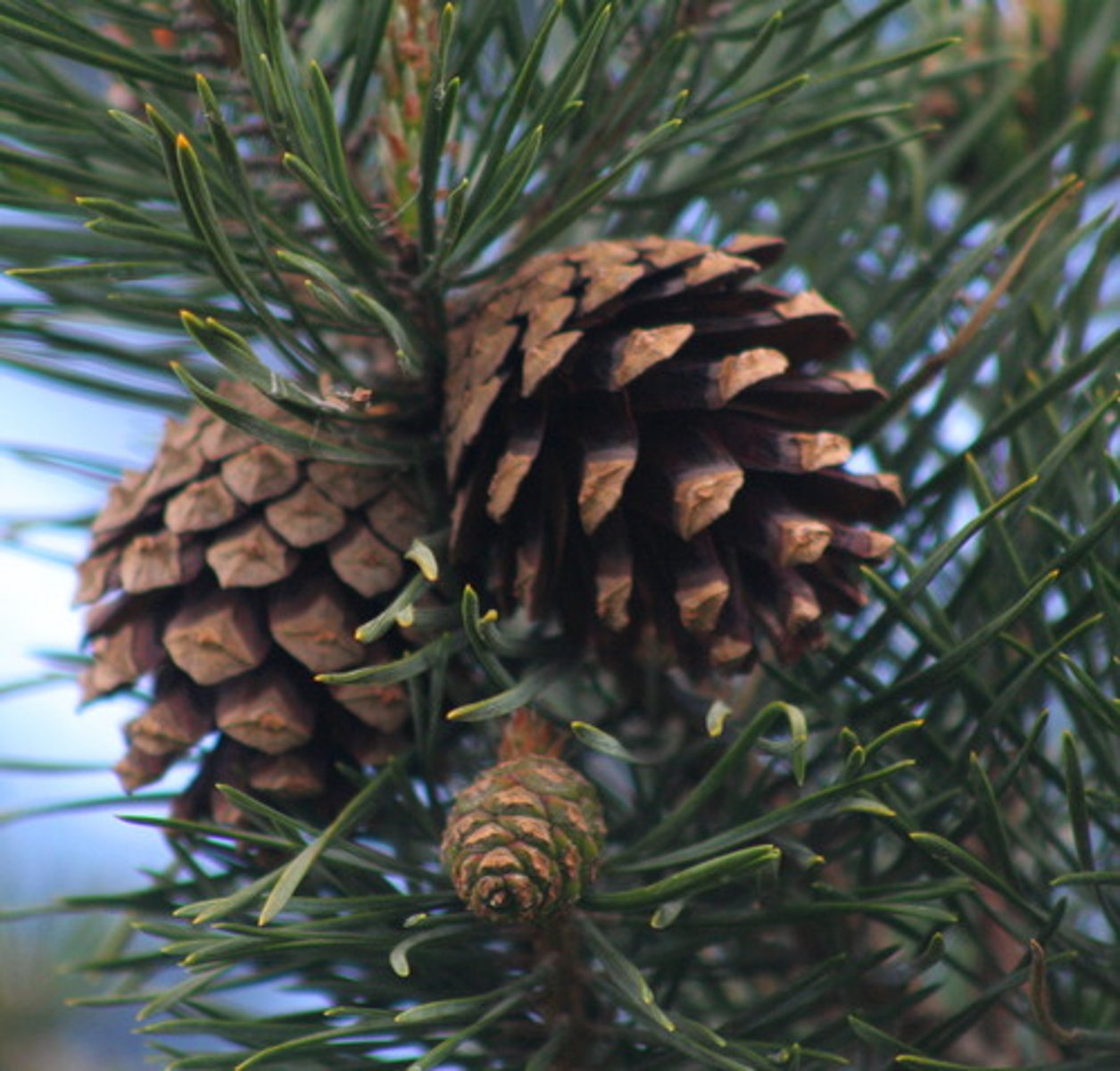
male cones
produce pollen
- are usually lighter
- are usually small
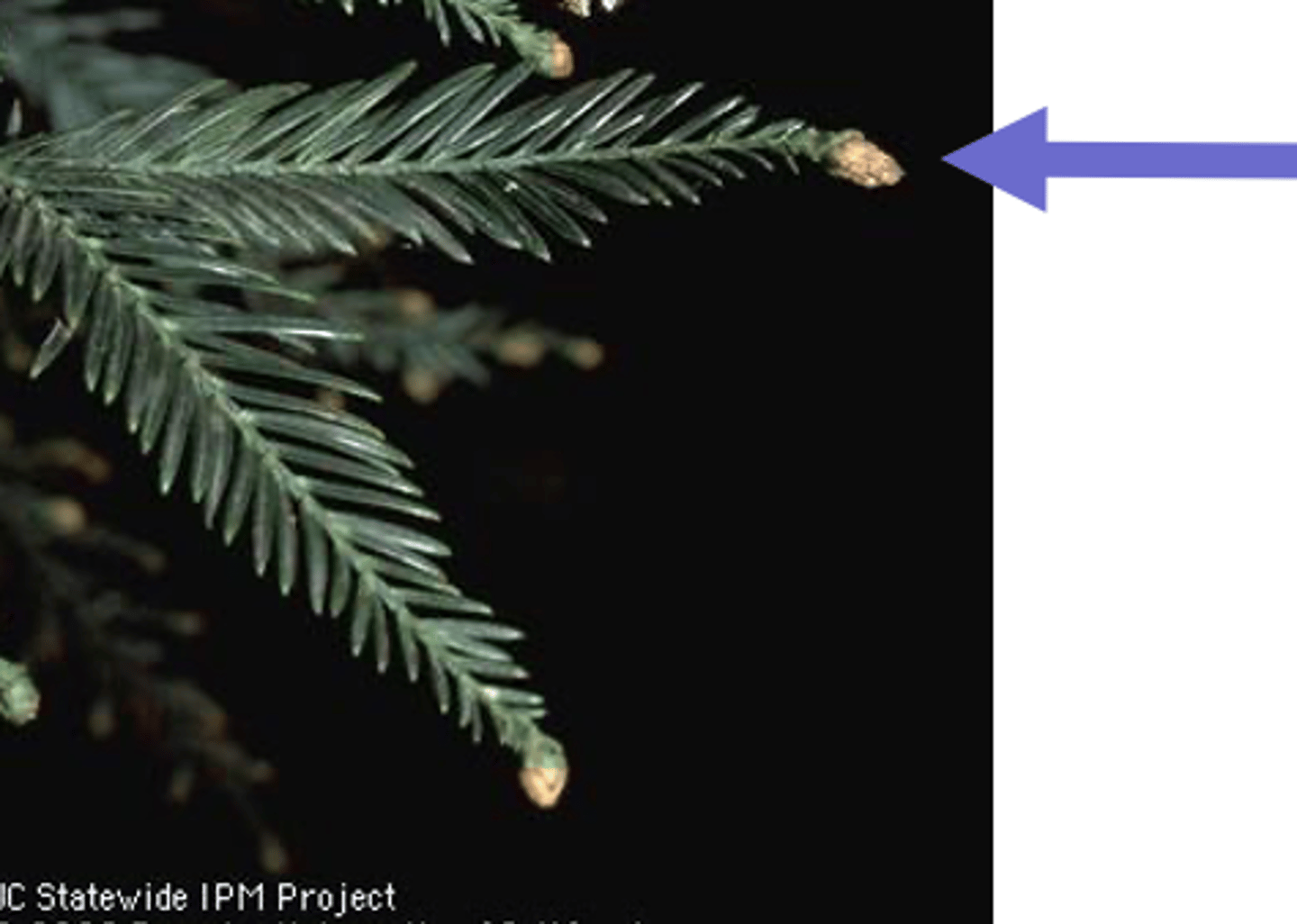
female cones
contains seeds
- has a woody texture
- are larger
- are harder
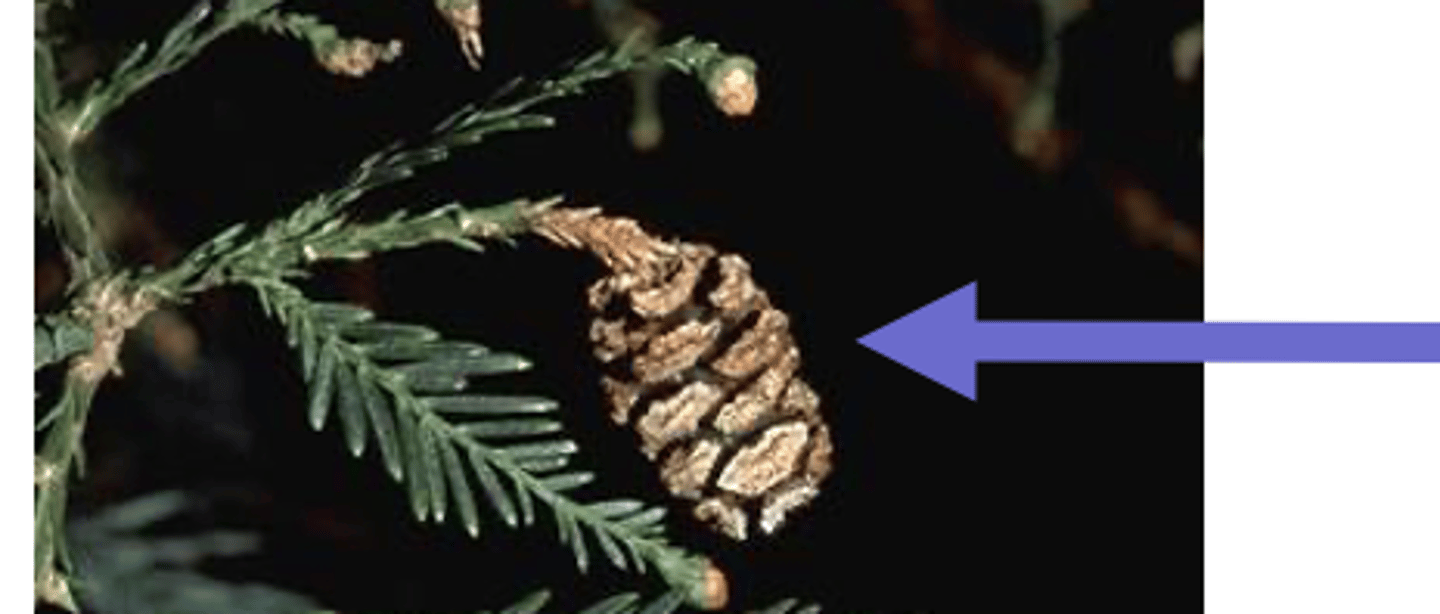
Angiosperms
flowering plants
- produce flowers + fruits
- relies on animal pollinators (to pollinate and attract animals)
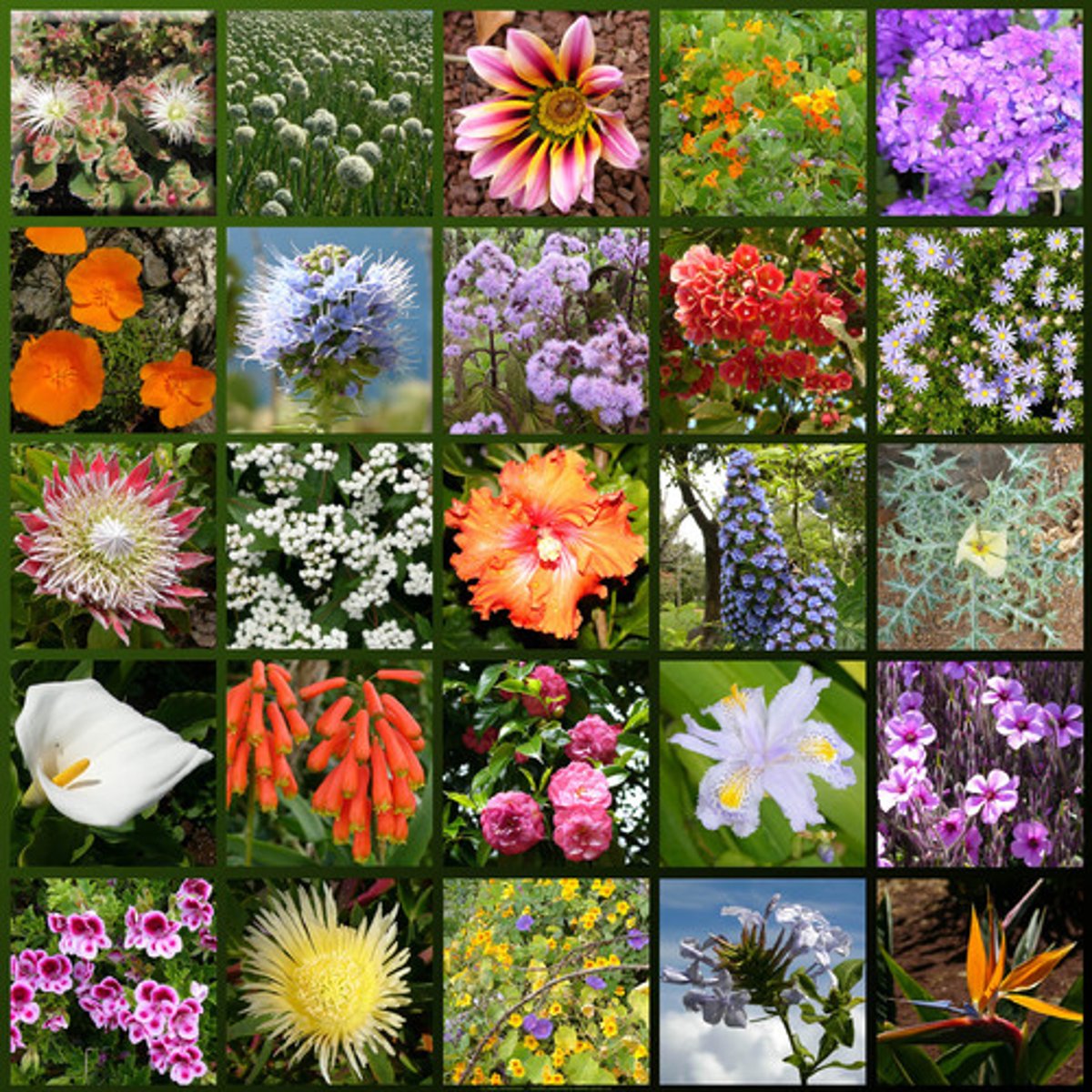
Flower
modified cone-like structure bearing modified leaves
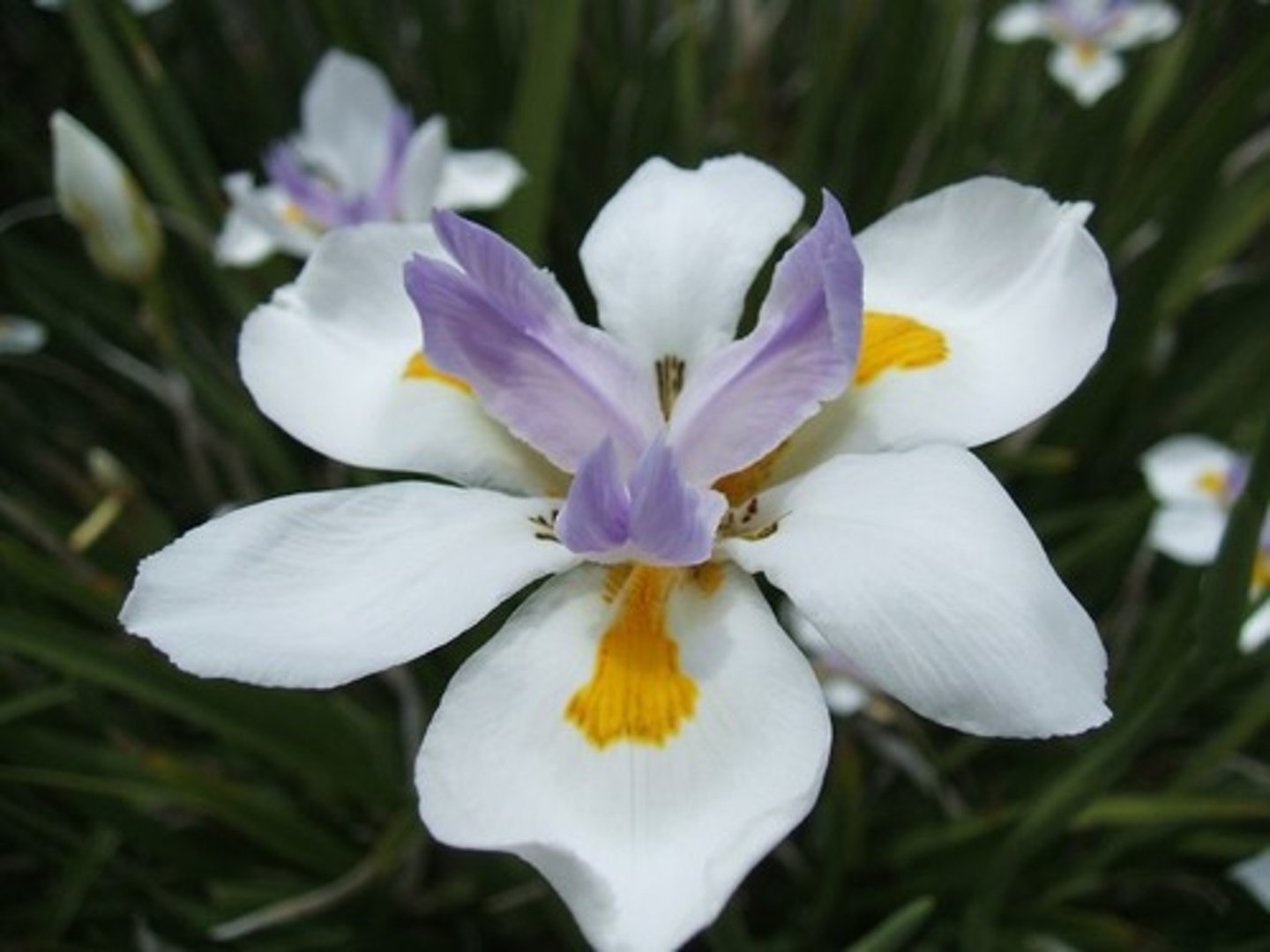
Male reproductive (flowers)
anther and filament form the stamen
---------------------------
- responsible for releasing the pollen
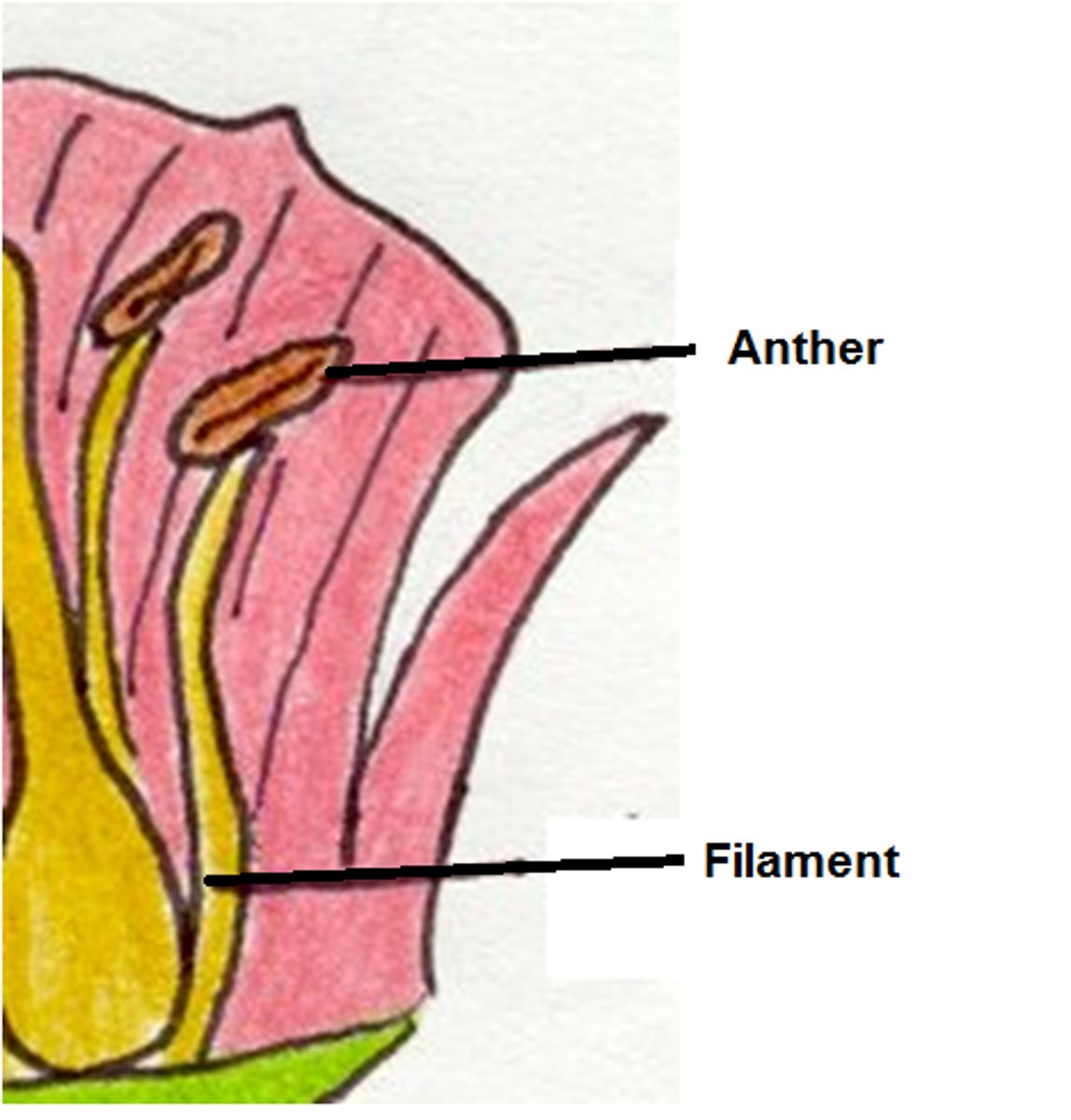
Female reproductive (flowers)
stigma, style and ovule form the pistil
---------------------------
- responsible for producing seeds (in the ovule)
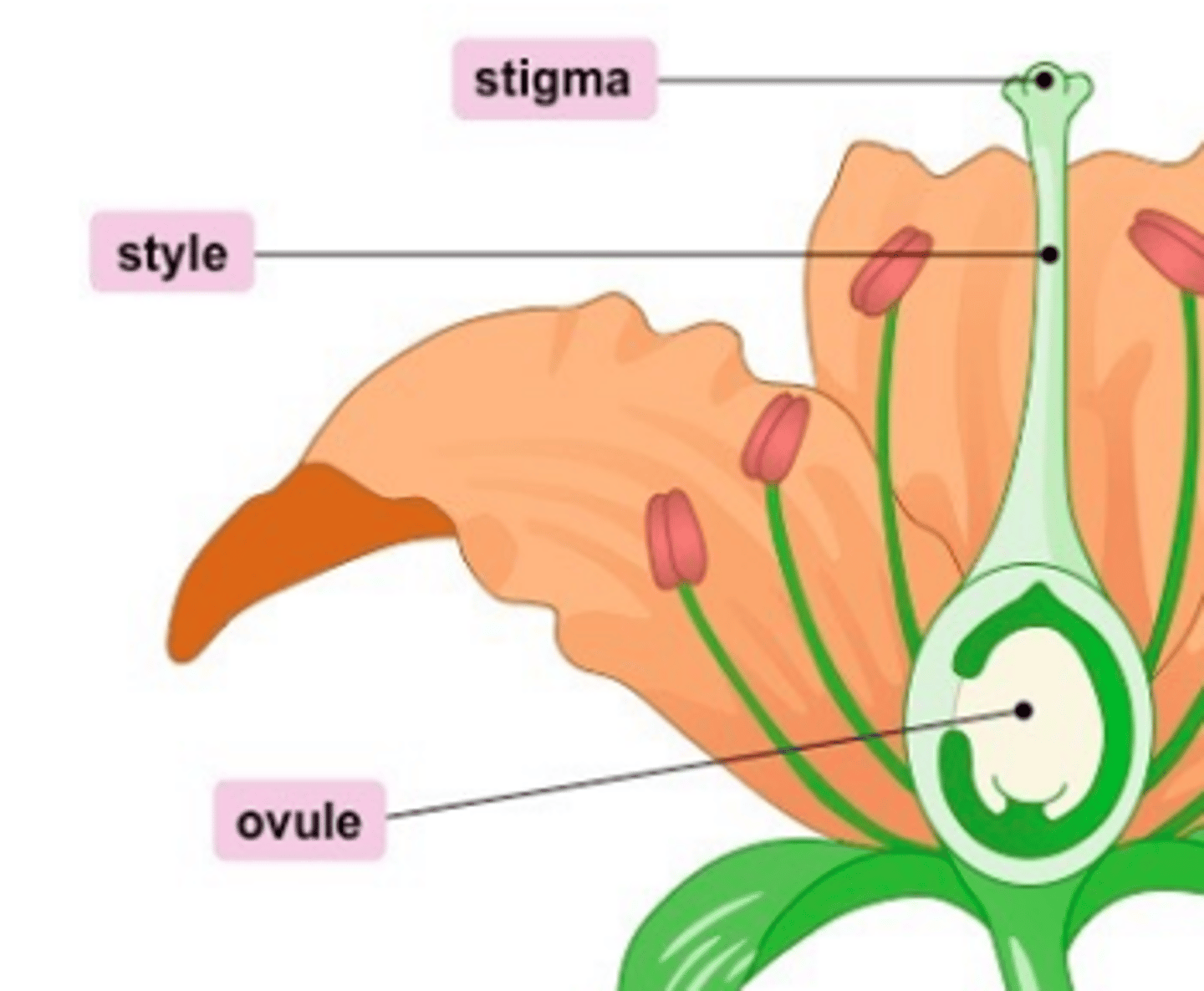
sepal
leaf-like structure that encloses the bud of a flower
- is the support for the petals when in bloom
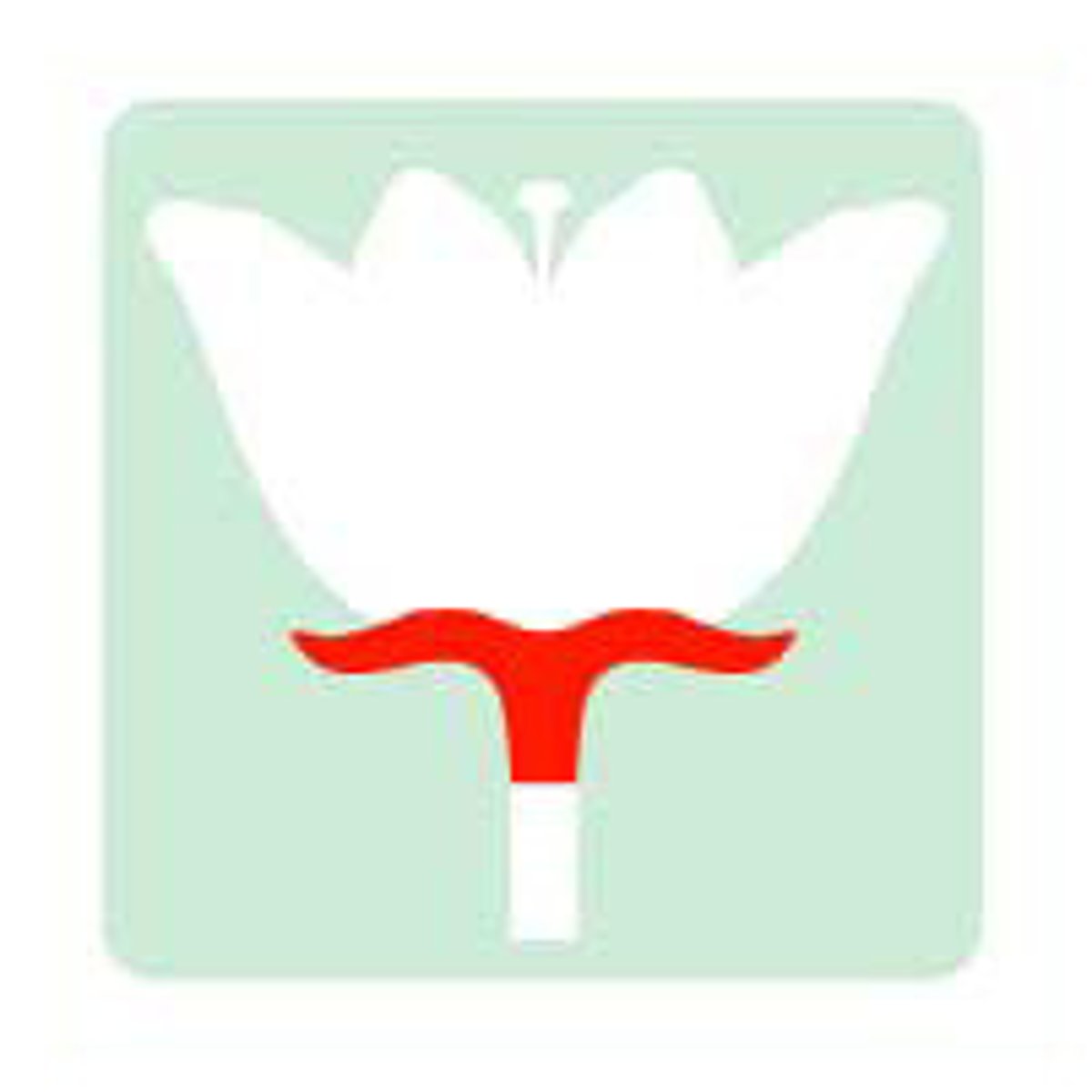
Peduncle
the end of a flower stalk
- supports a solitary flower or an inflorescence
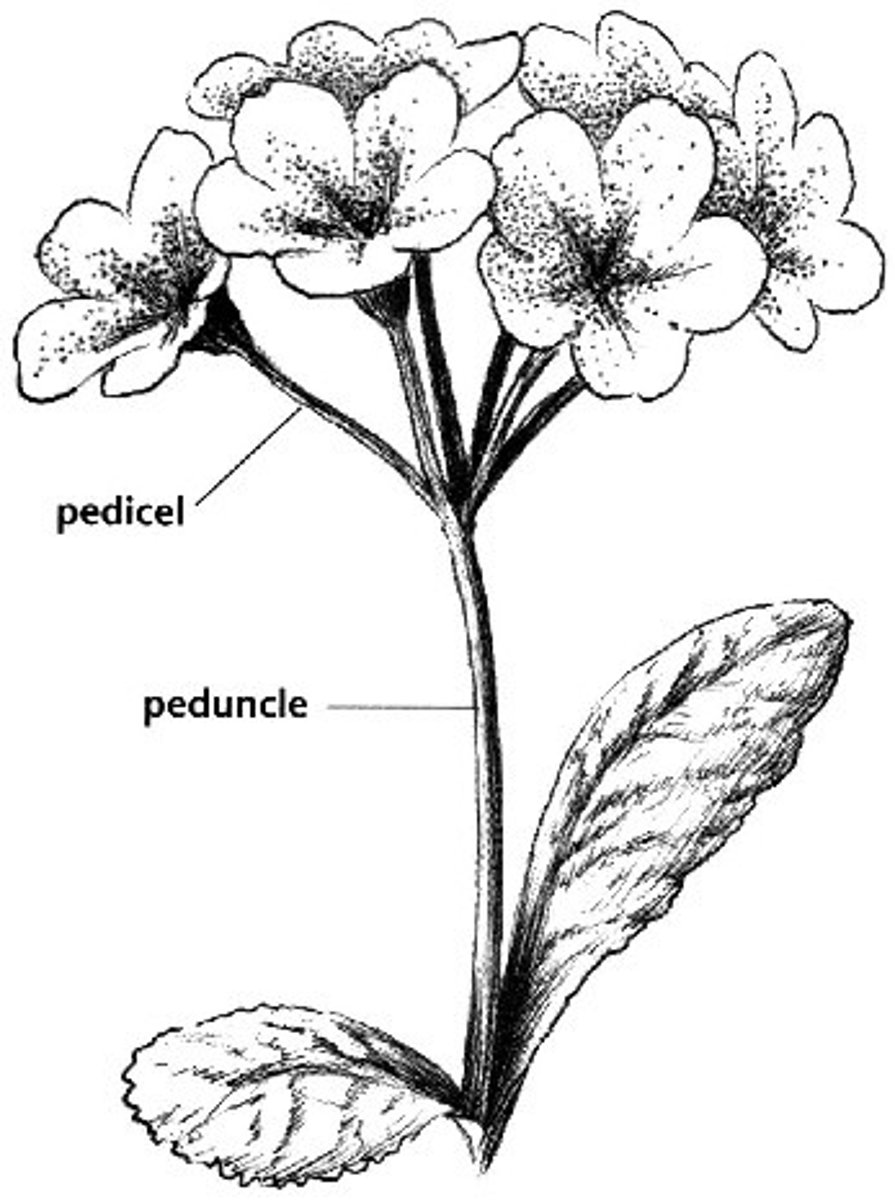
Petal formation
can be free or partly fused into a ring or tube
- is based on symmetry
---------------------------
- radial symmetry
- bilateral symmetry
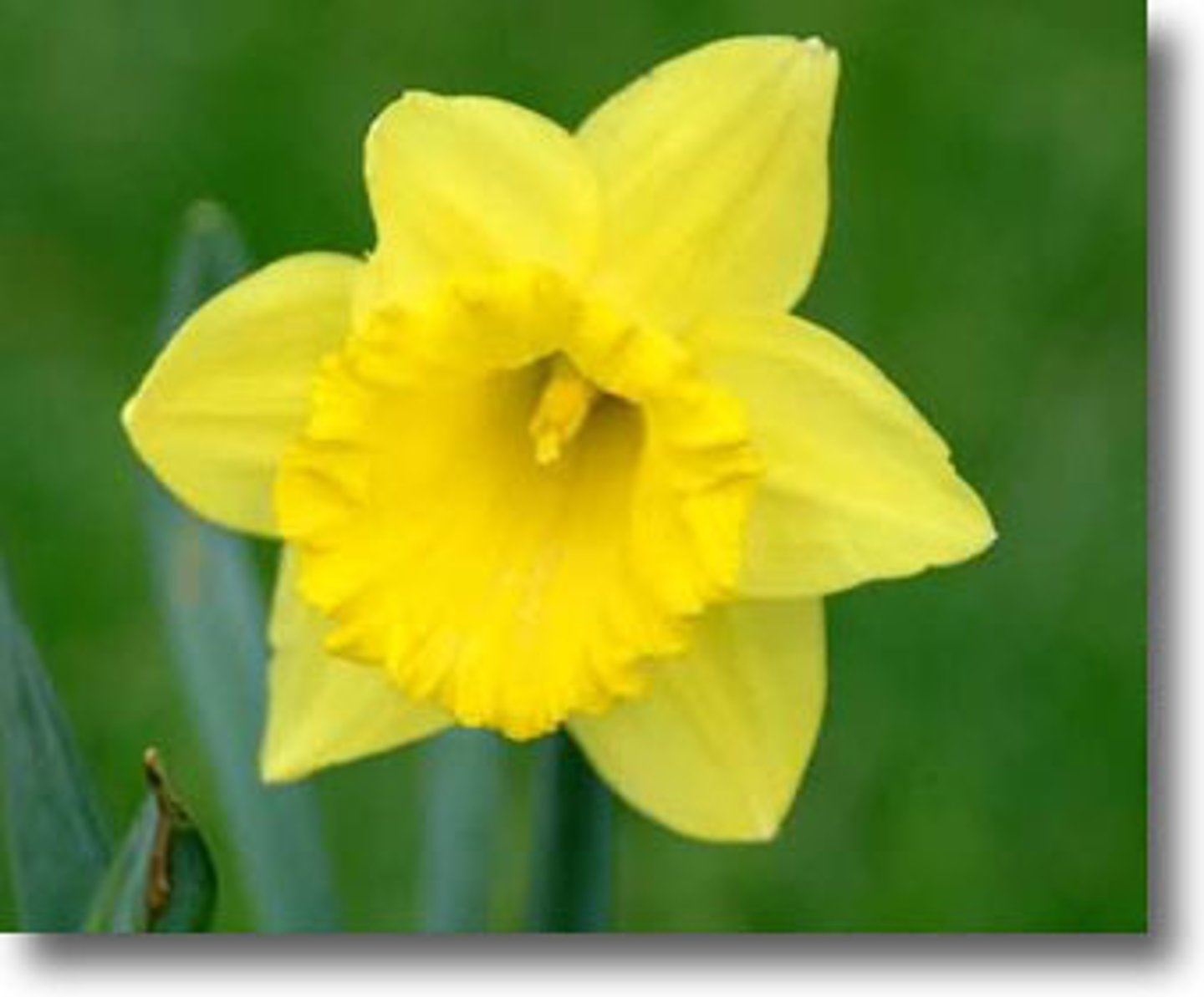
radial symmetry
identical all around a central axis
- petals look the same
- flower is cylindrical or round
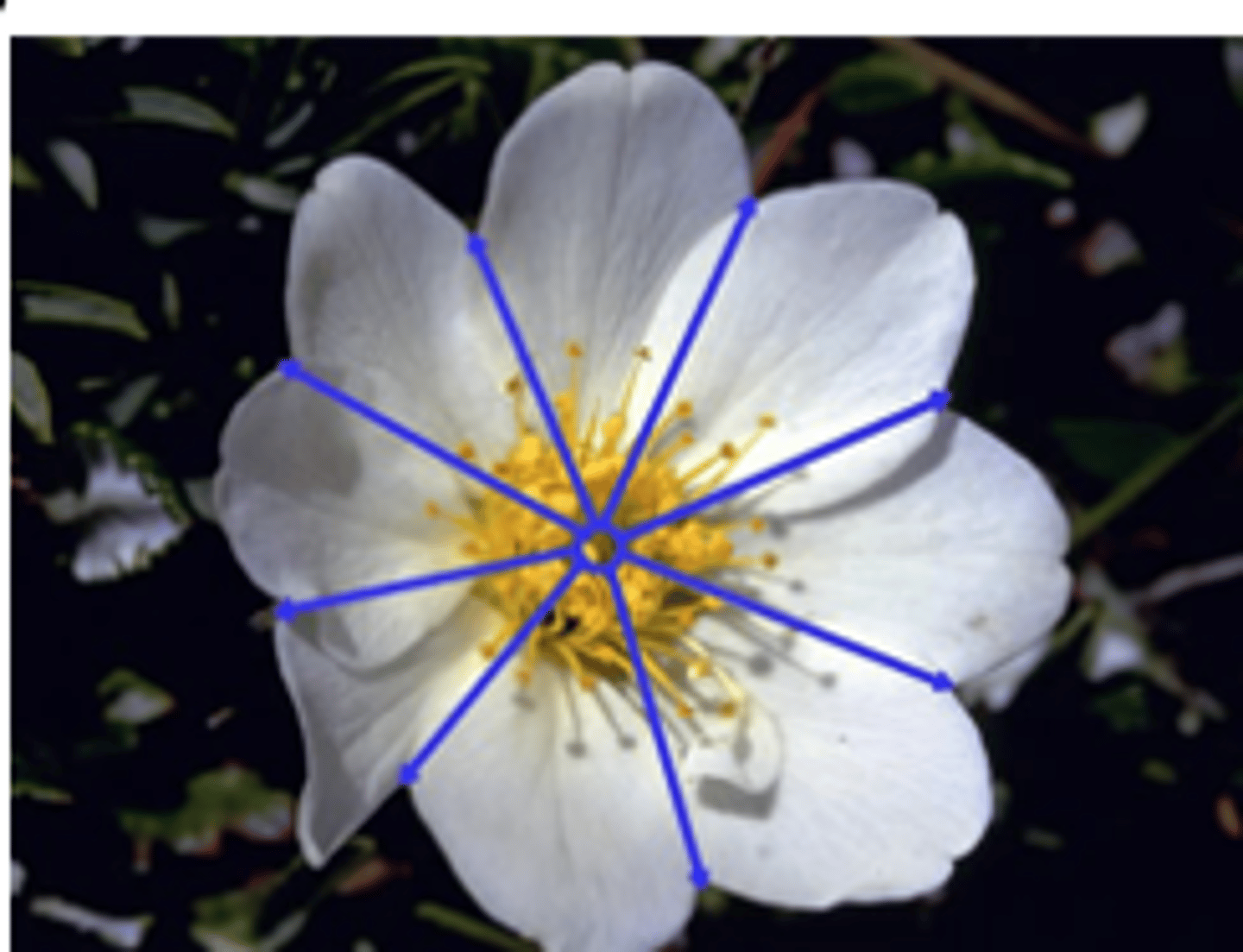
bilateral symmetry
only one plane divides the flower into mirror images
- right side is the same is the left side
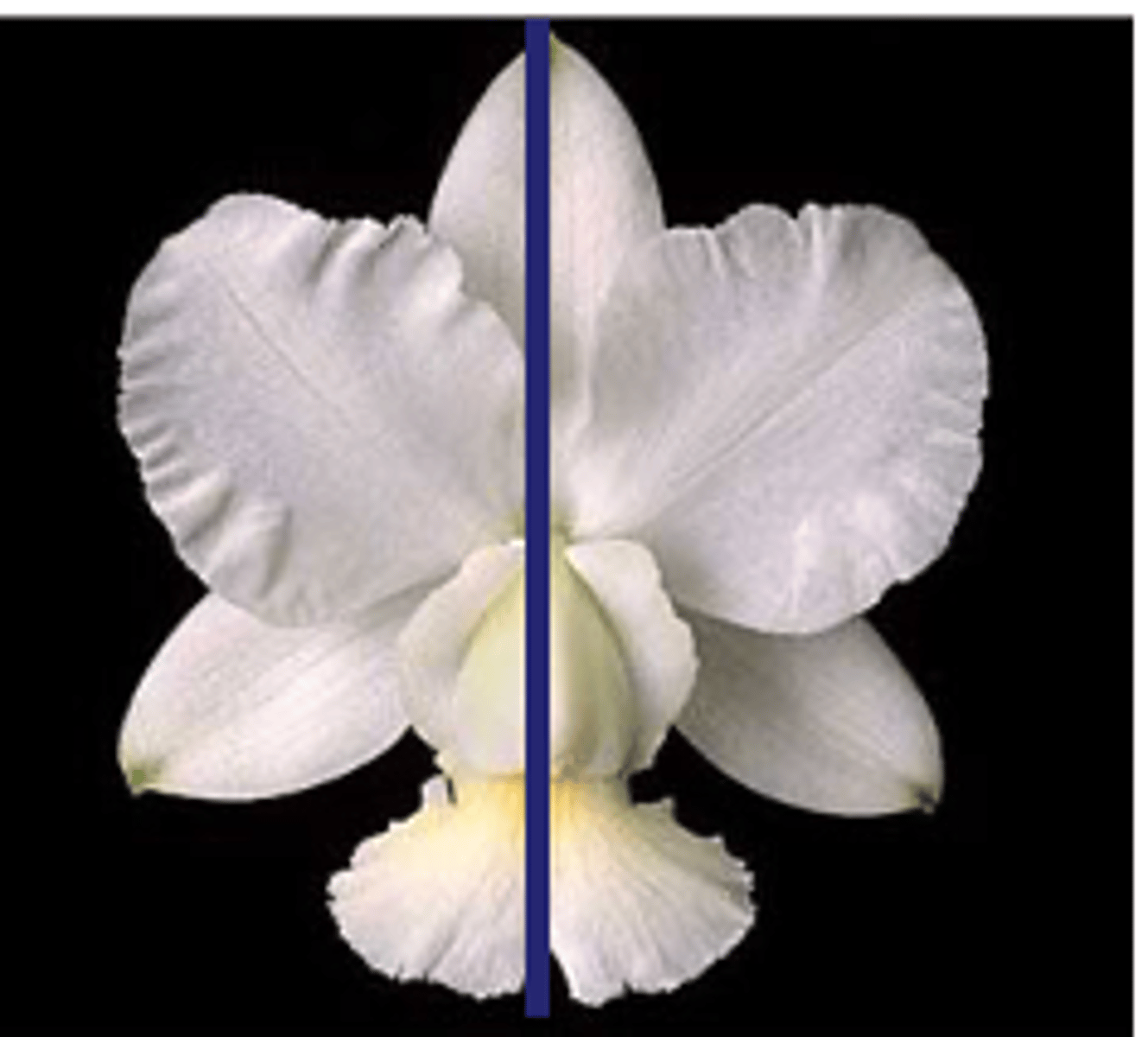
alternate stamen
stamen found between petals
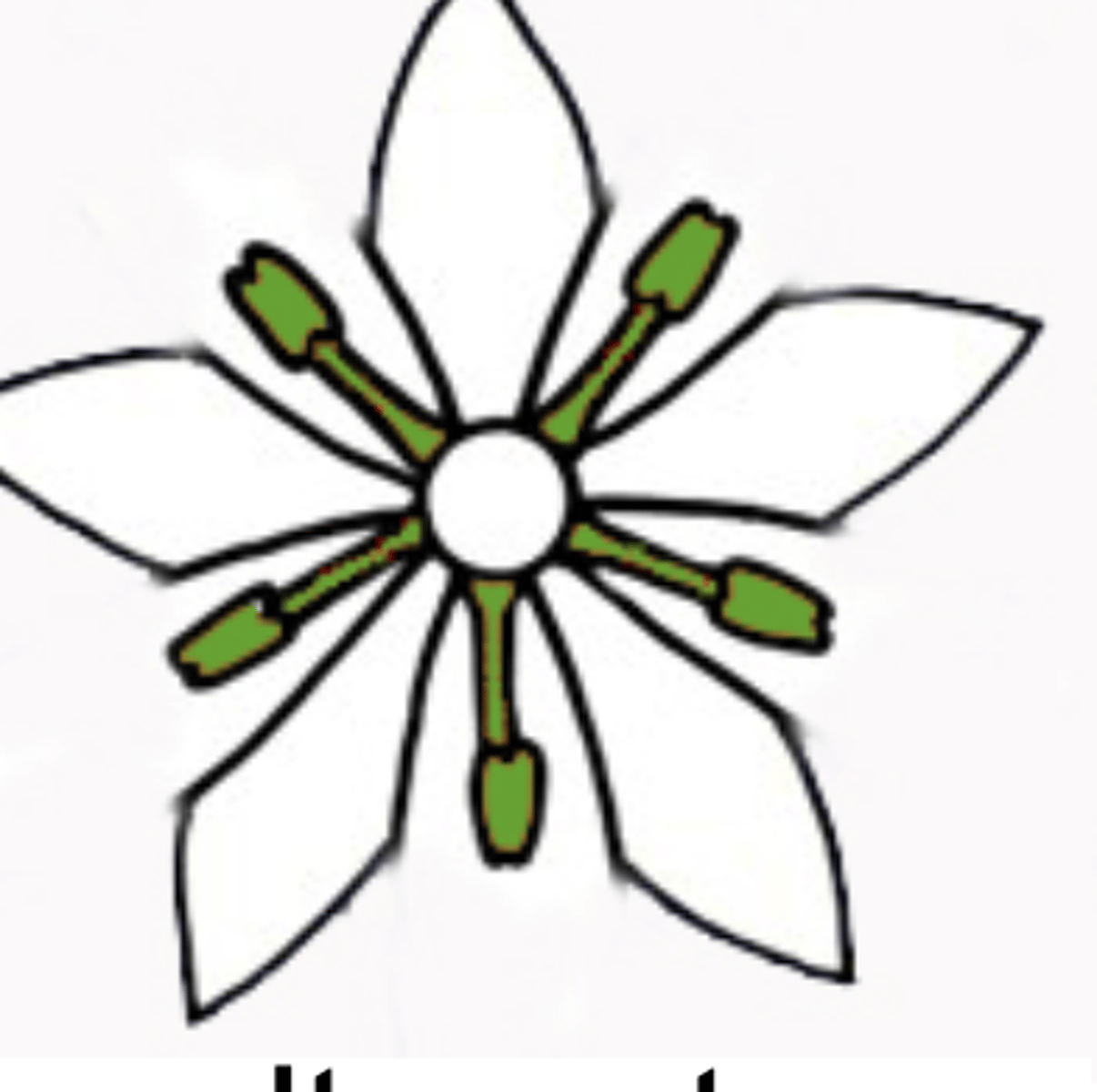
opposite stamen
stamen overlapping petals
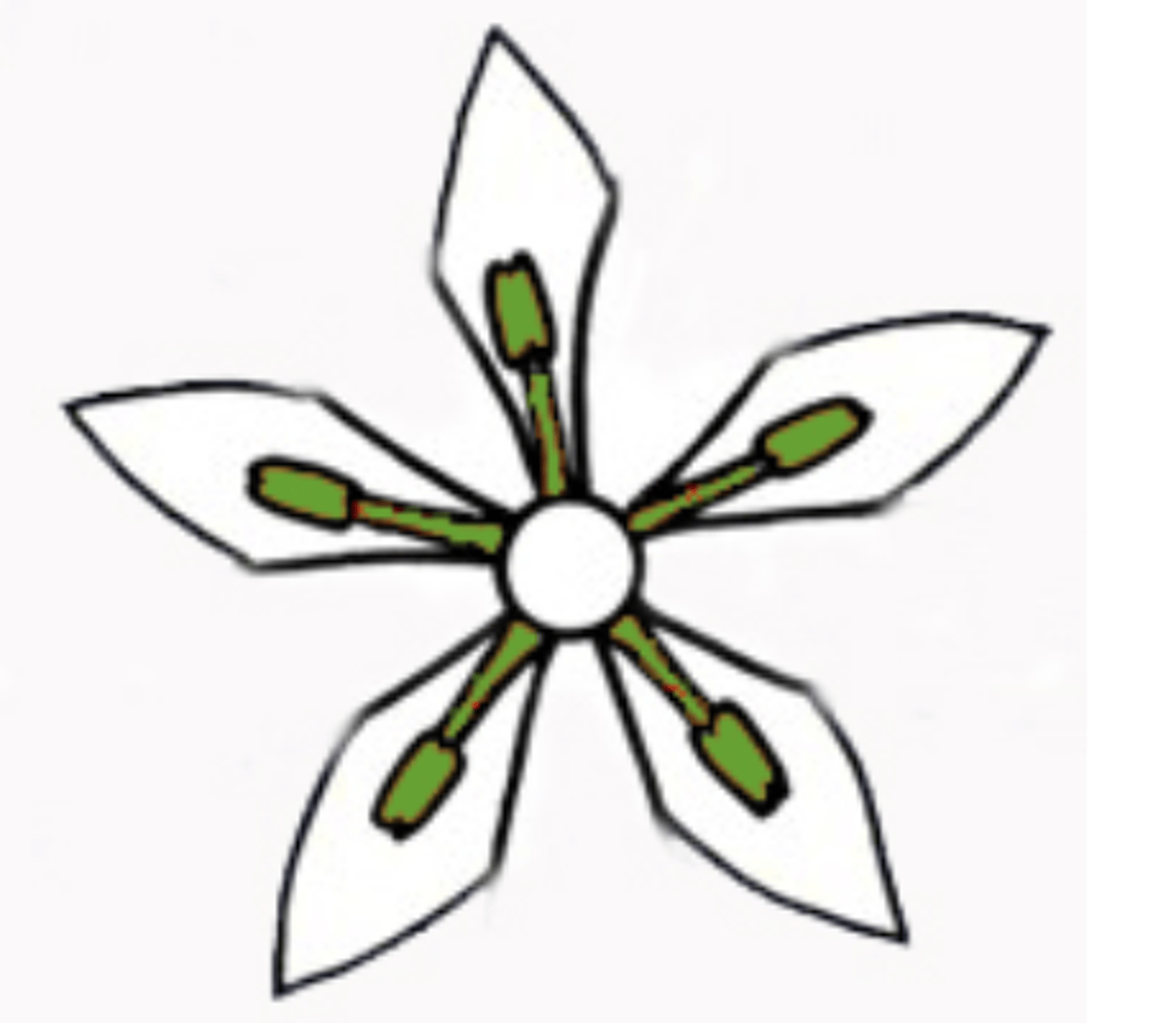
receptacle
is where all reproductive parts of the plant are connected
- sometimes can be hollowed out into various shapes
---------------------------
WHICH REPRODUCTIVE PARTS
- sepals
- petals
- stamens
- pistils
hypanthium (various shapes)
A cup-shaped structure surrounding the ovary
- formed from the fusion of bases of the petals and sepals
---------------------------
HOW TO DESCRIBE POSITION
- bowl like
- cylindrical
- upside-down bell-like
- conical
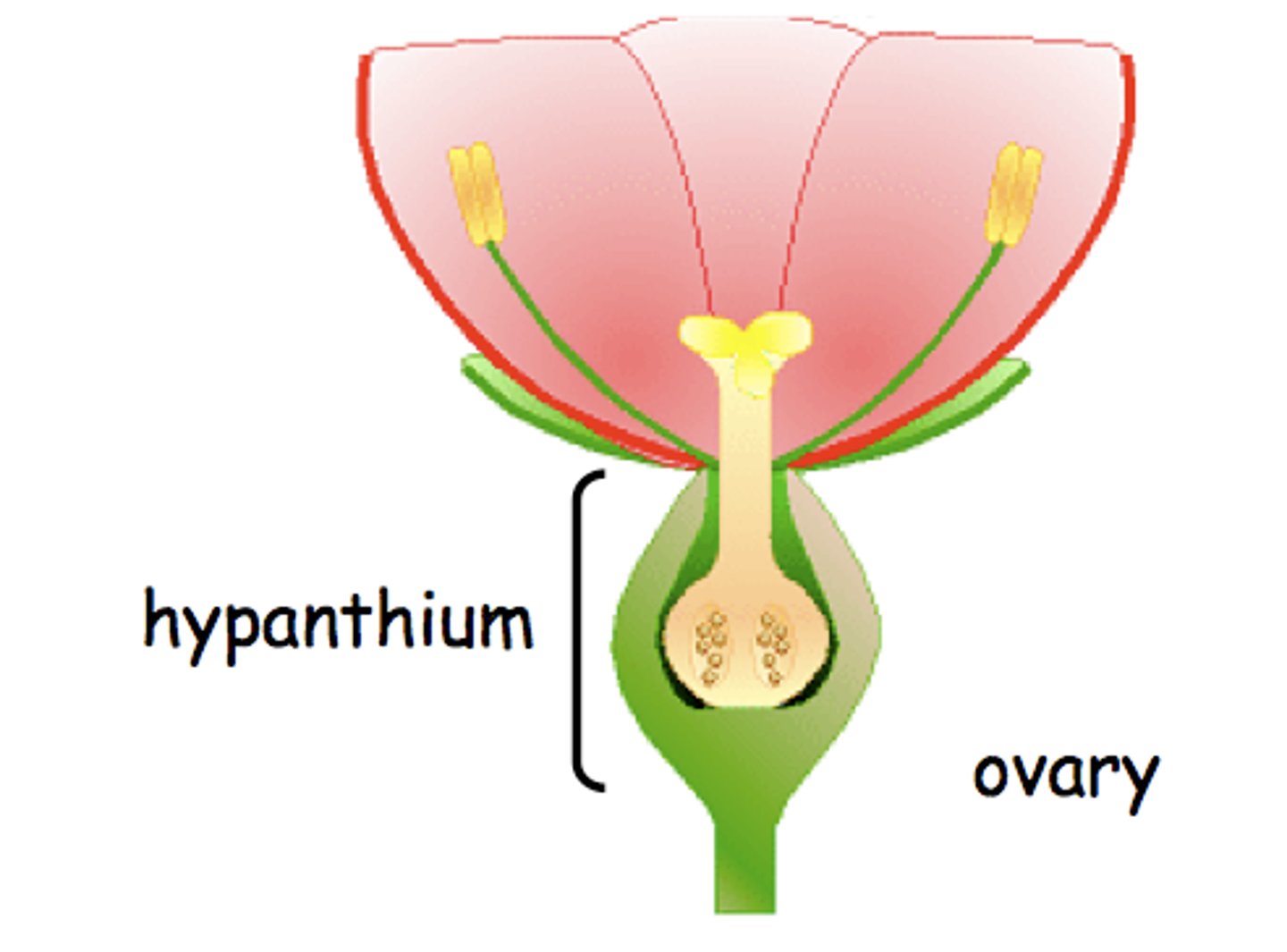
ovary position
superior and inferior
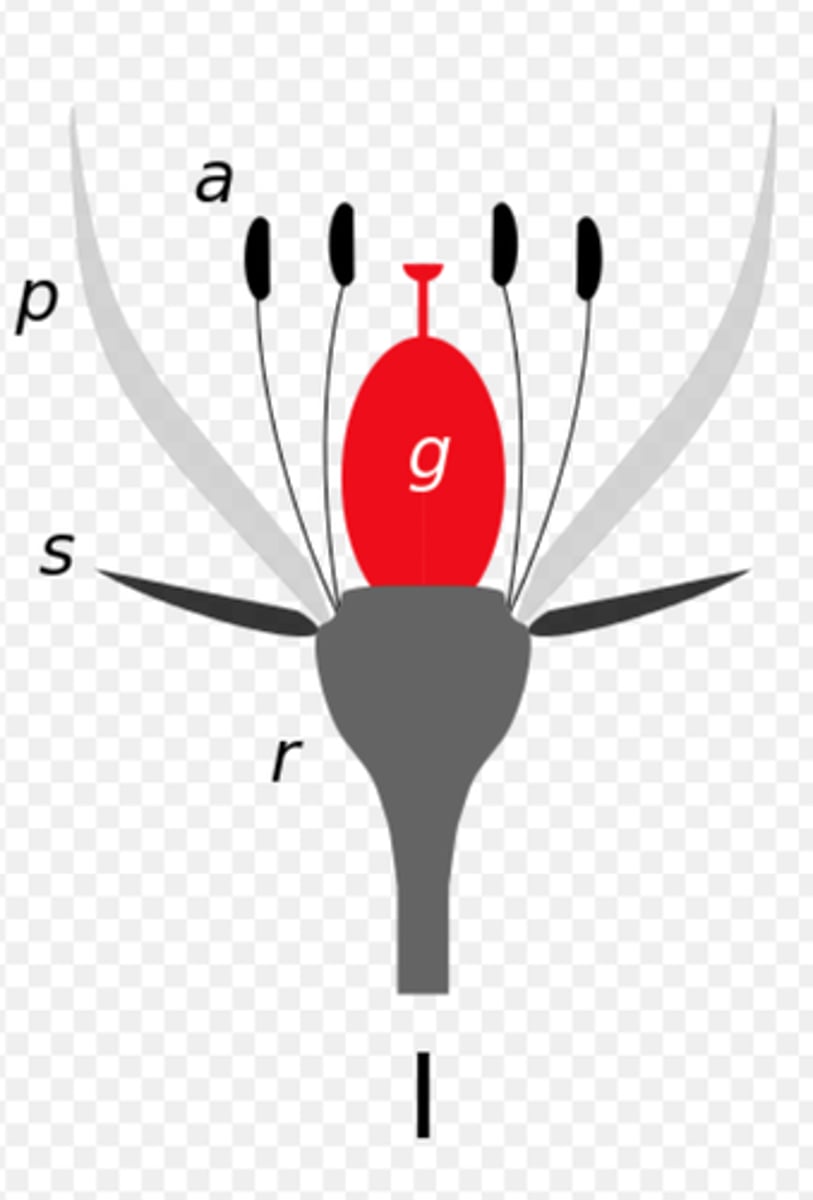
superior (ovary position)
- ovary is visible inside the flower
- ovary sits on the receptacle or in the bottom of the hypanthium
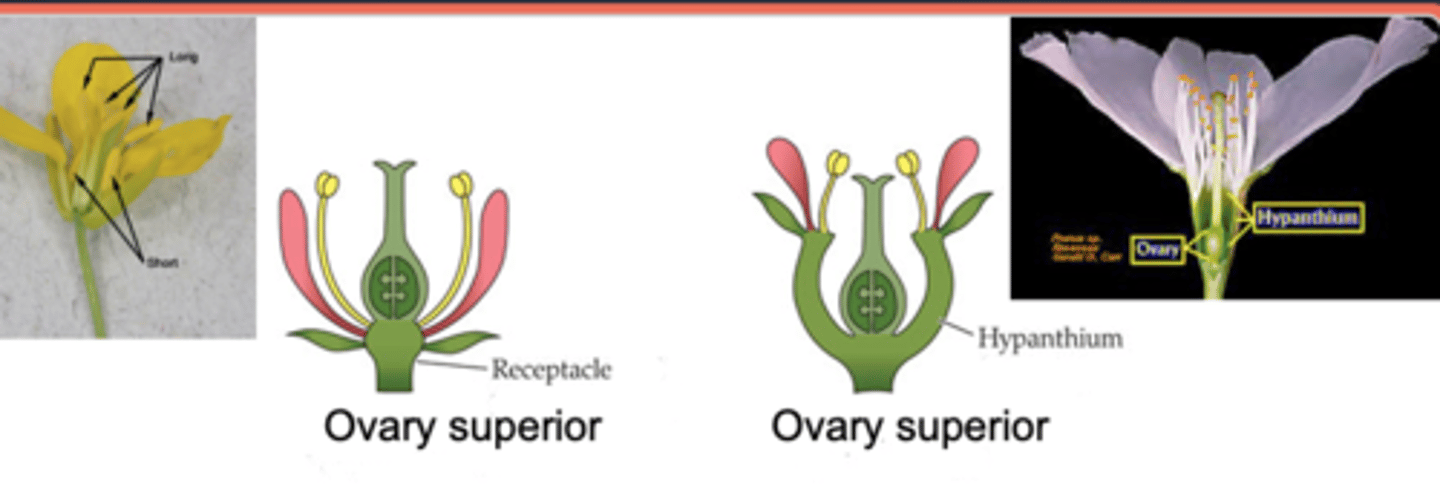
inferior (ovary position)
- ovary is visible as a bulge under the flower
- cannot be seen from inside the flower
- hypanthium is fused to the outer wall of the ovary
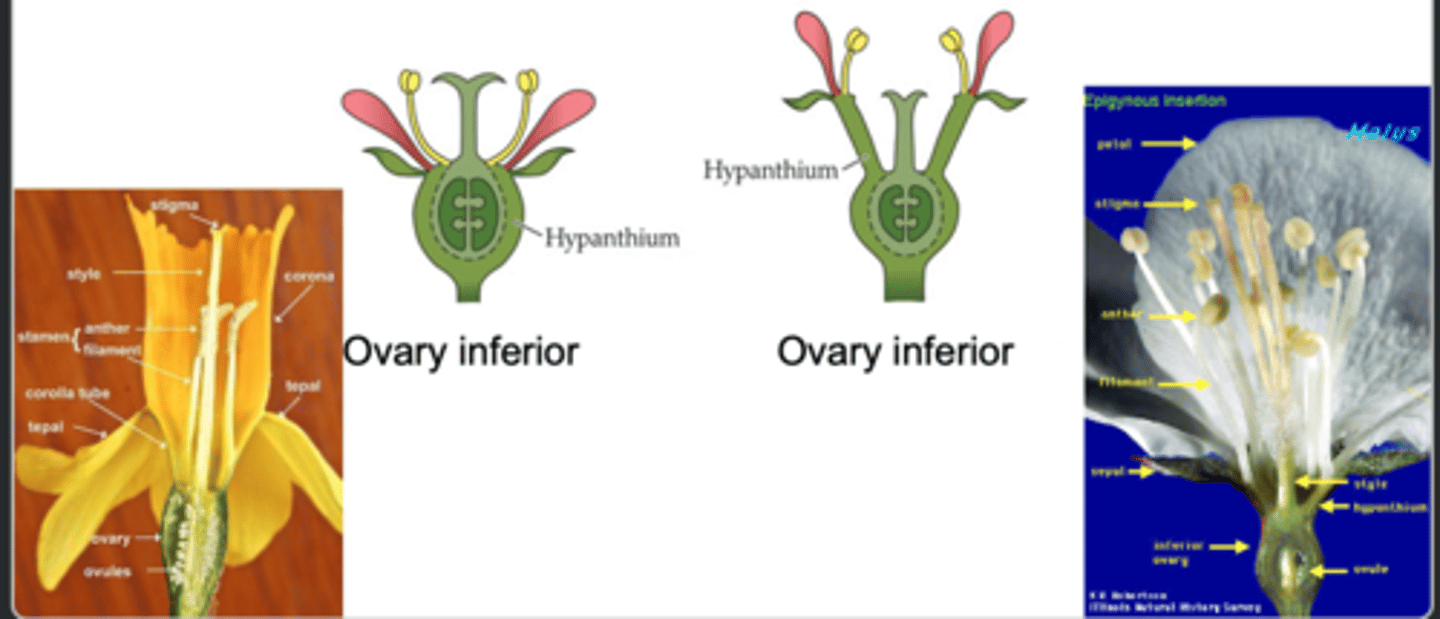
fruits
mature ovaries that consist of an ovary wall and internal seed
---------------------------
TYPES:
- Dry fruits
- Fleshy fruits
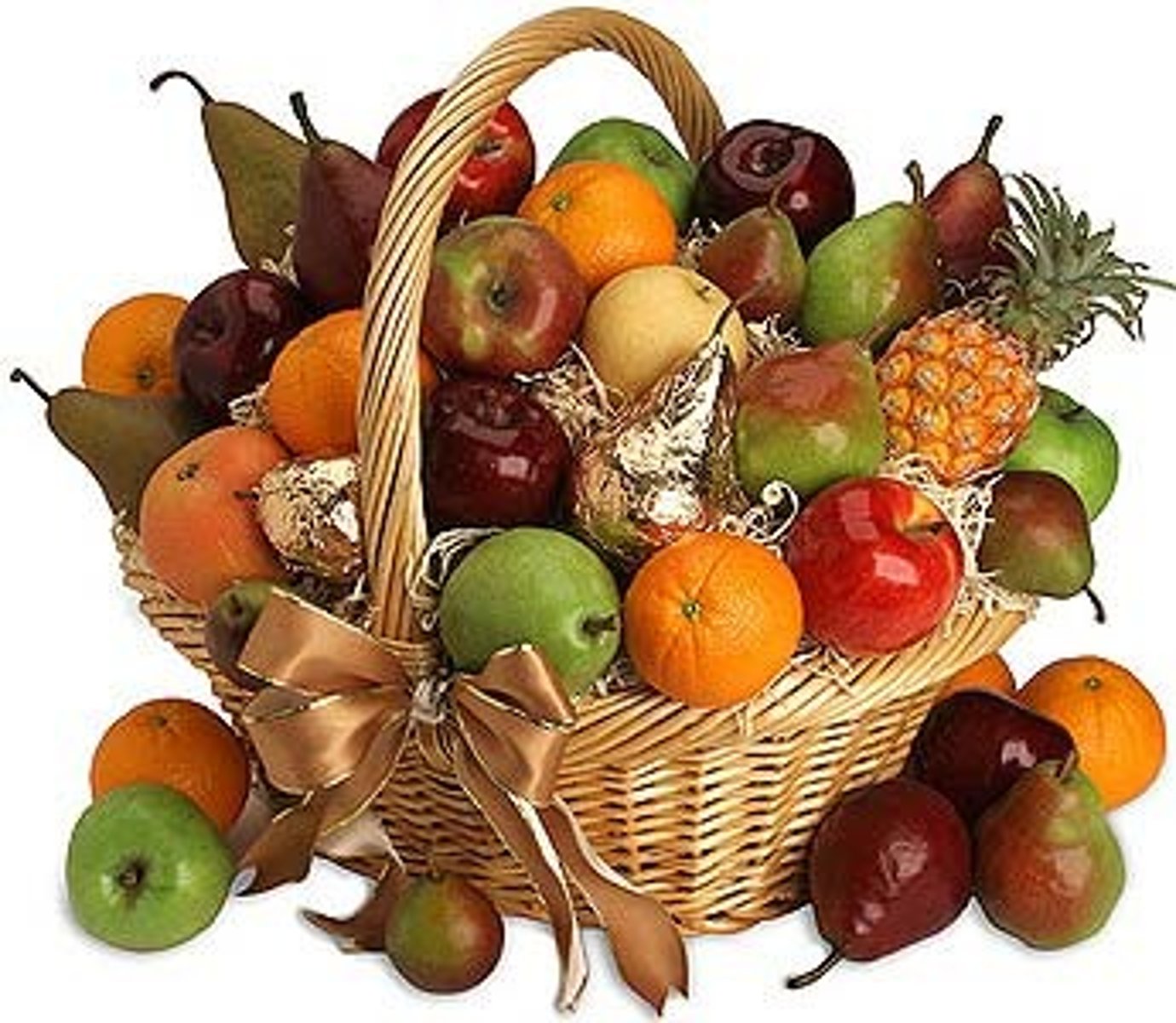
Dry fruits
dry at maturity
- outer wall will either split open to release the seeds or will stay closed
---------------------------
EXAMPLE
- Legumes
- nuts
- acorns
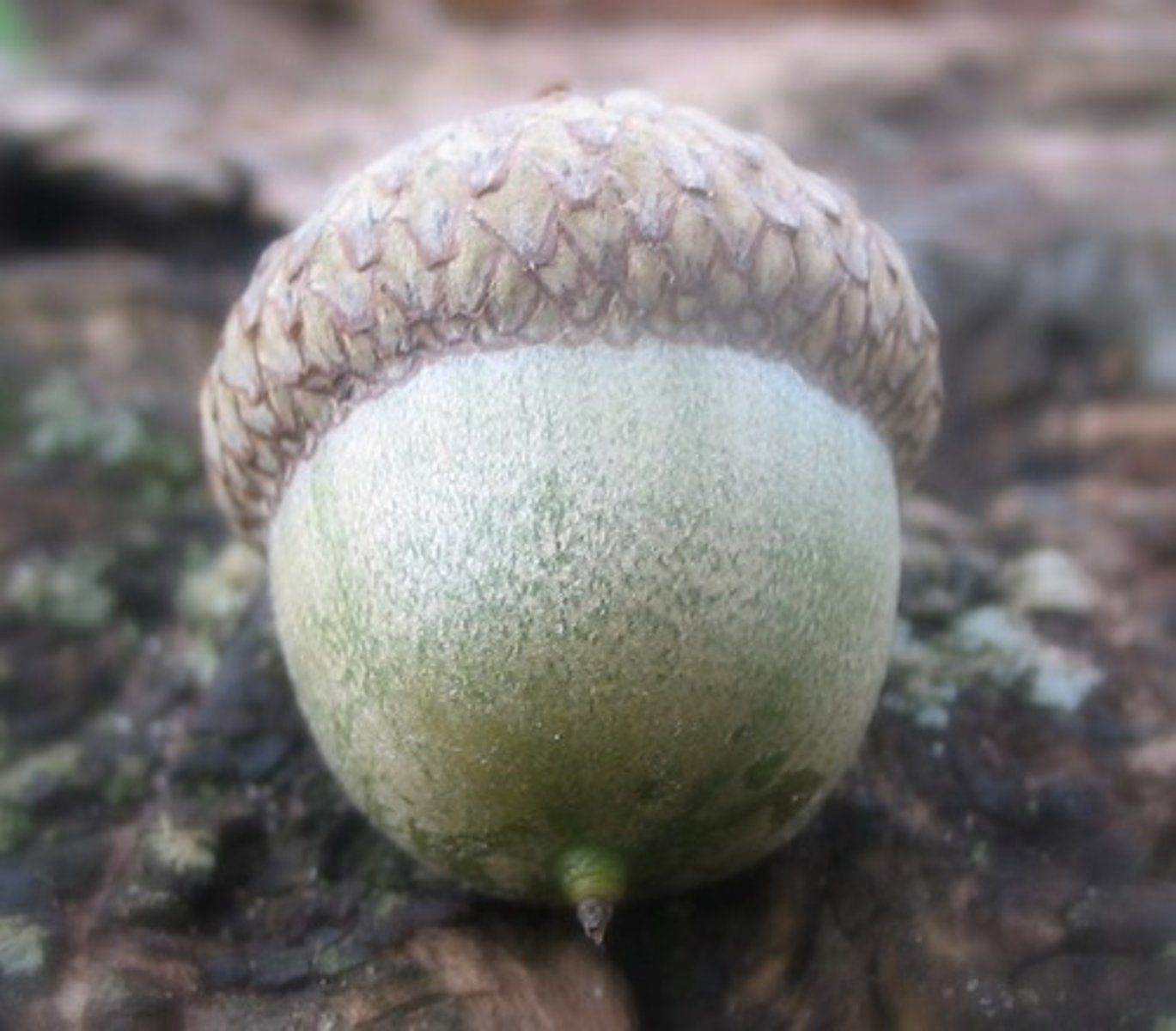
fleshy fruits
have a thick, juicy wall that does not crack open
- is more adapted to animal dispersal
---------------------------
EXAMPLE
- Berries
- avacados
- bananas
- drupes
- peaches
- plums
- almonds
- pomes
- apples
- pears
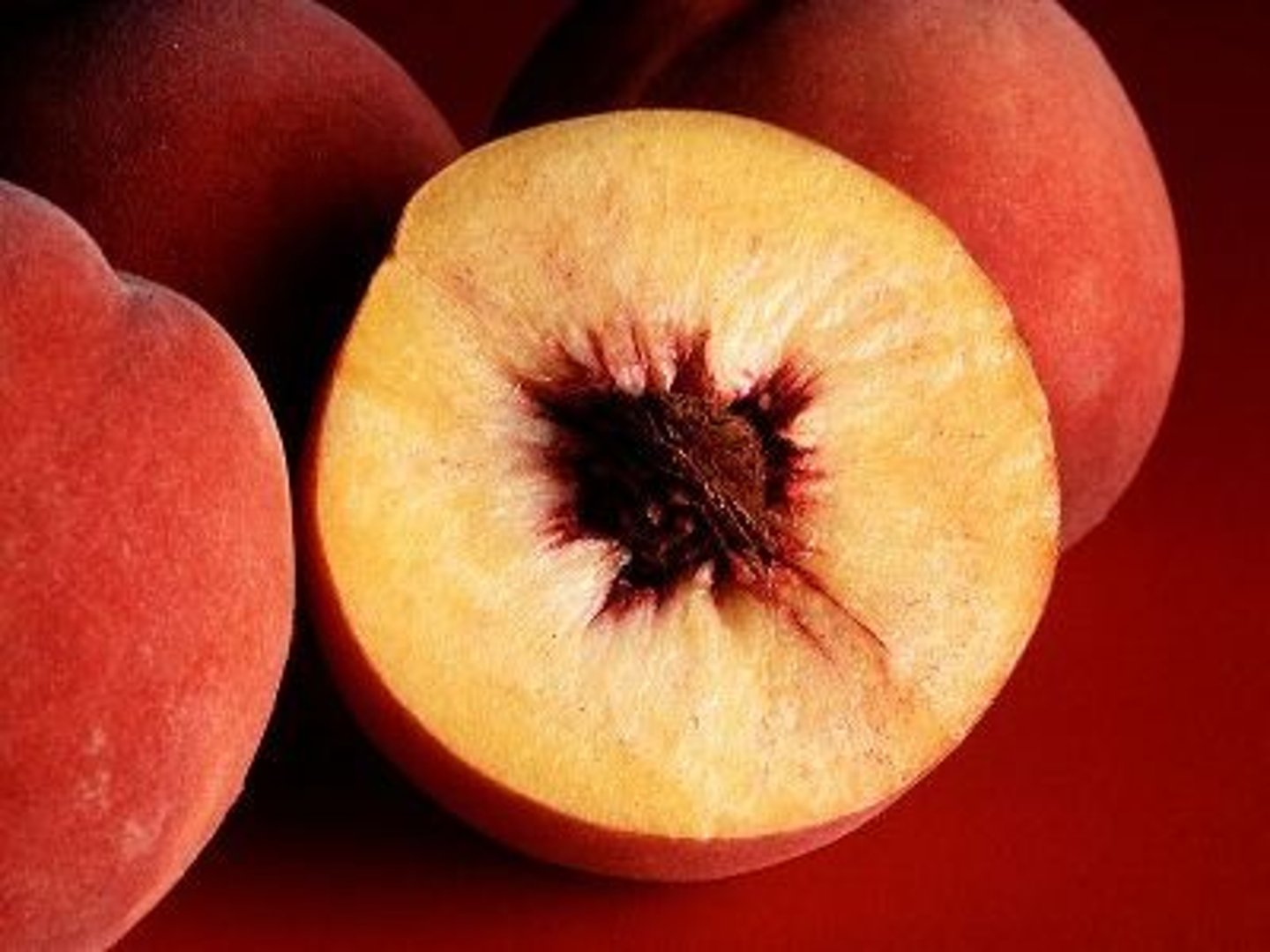
winter deciduous
leaves are lost in response to low temperatures
- minimize energy loss
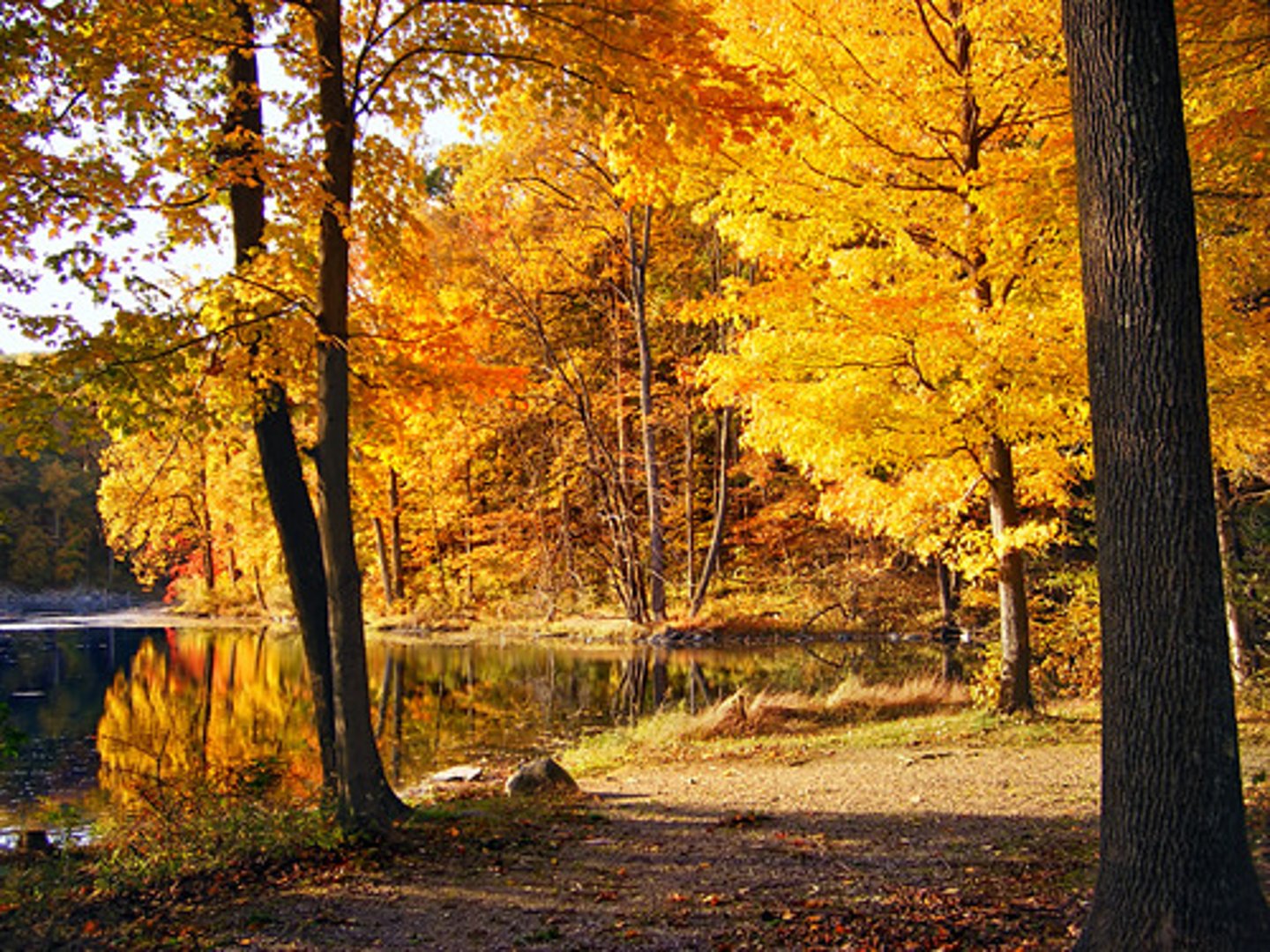
summer deciduous
Leaves are lost in responce to high temperatures
- minimize energy loss
---------------------------
EXAMPLE:
- California Buckeye
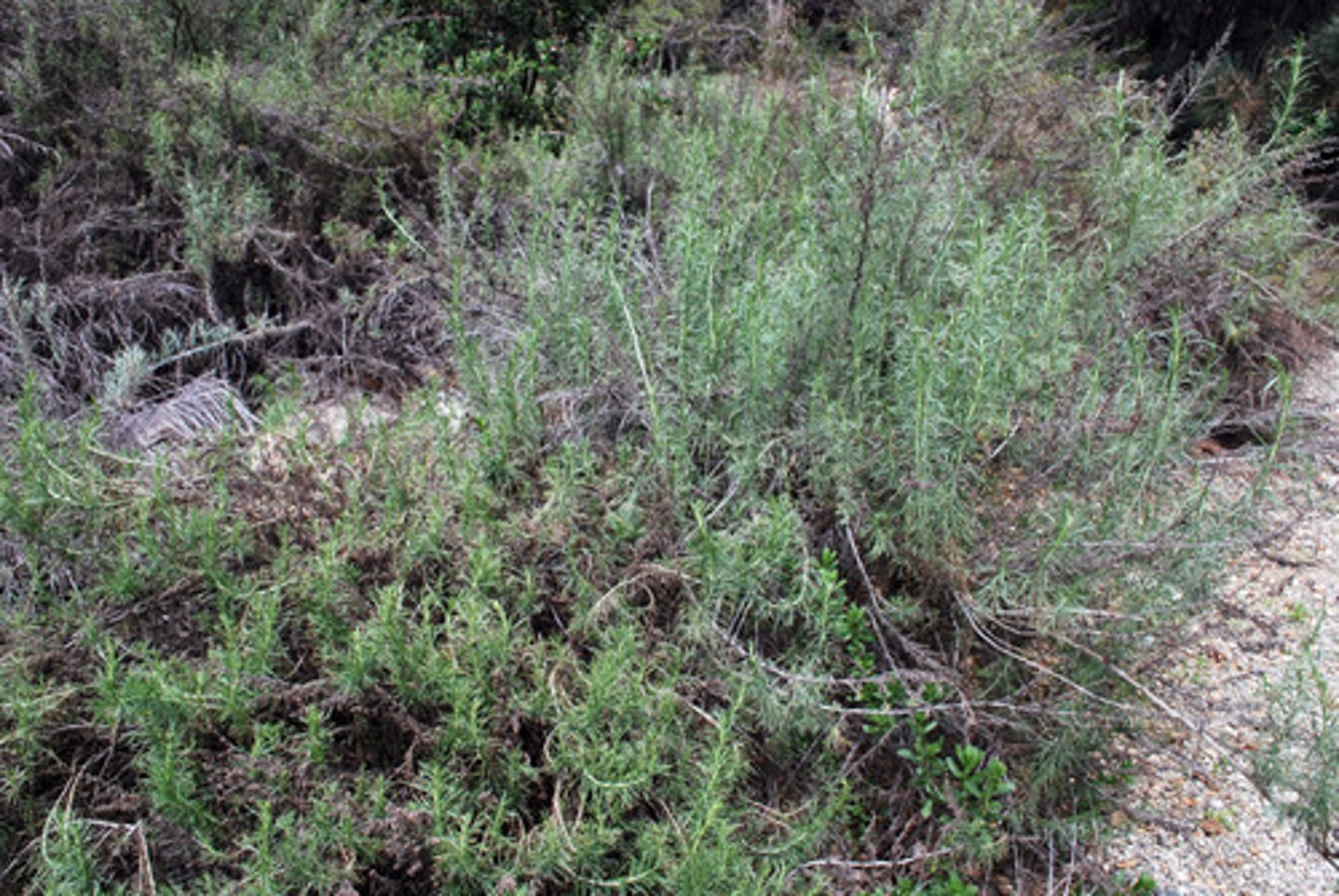
Evergreen
plants that keep their leaves all year but periodically shed old leaves
- are gymnosperms
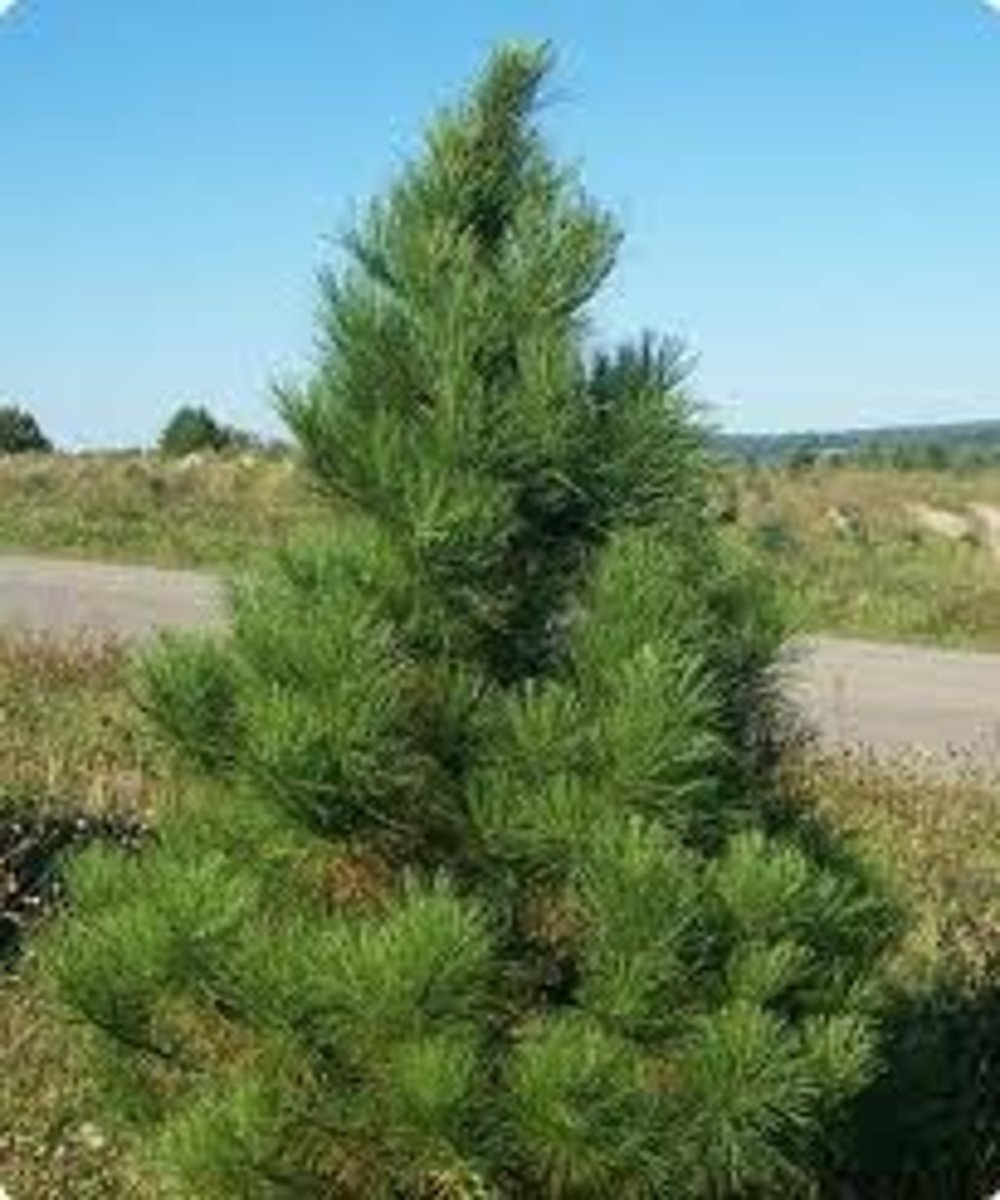
petiole leaves
part of a leaf connecting to the stem
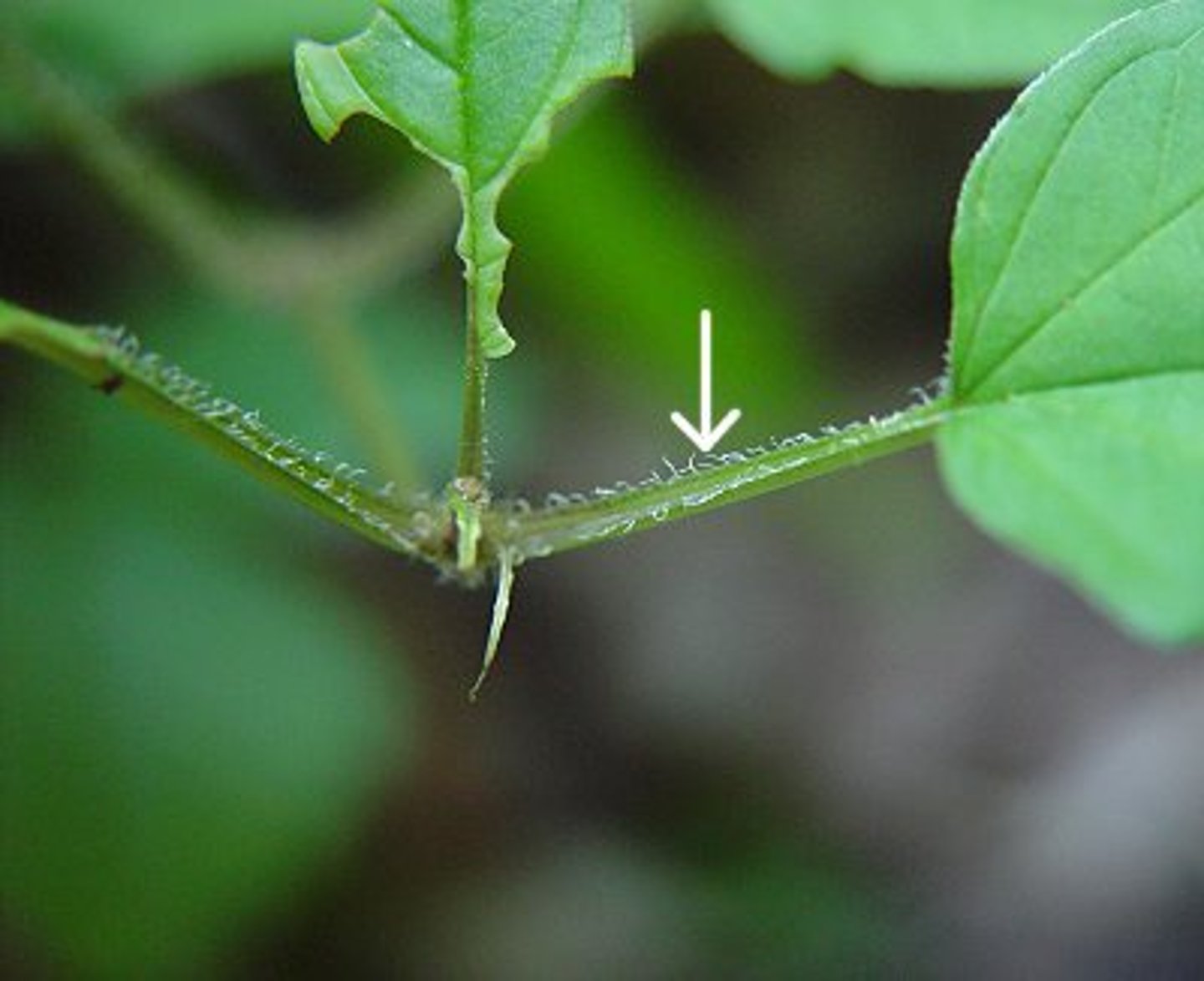
sessile leaves
leaves that lack a petiole
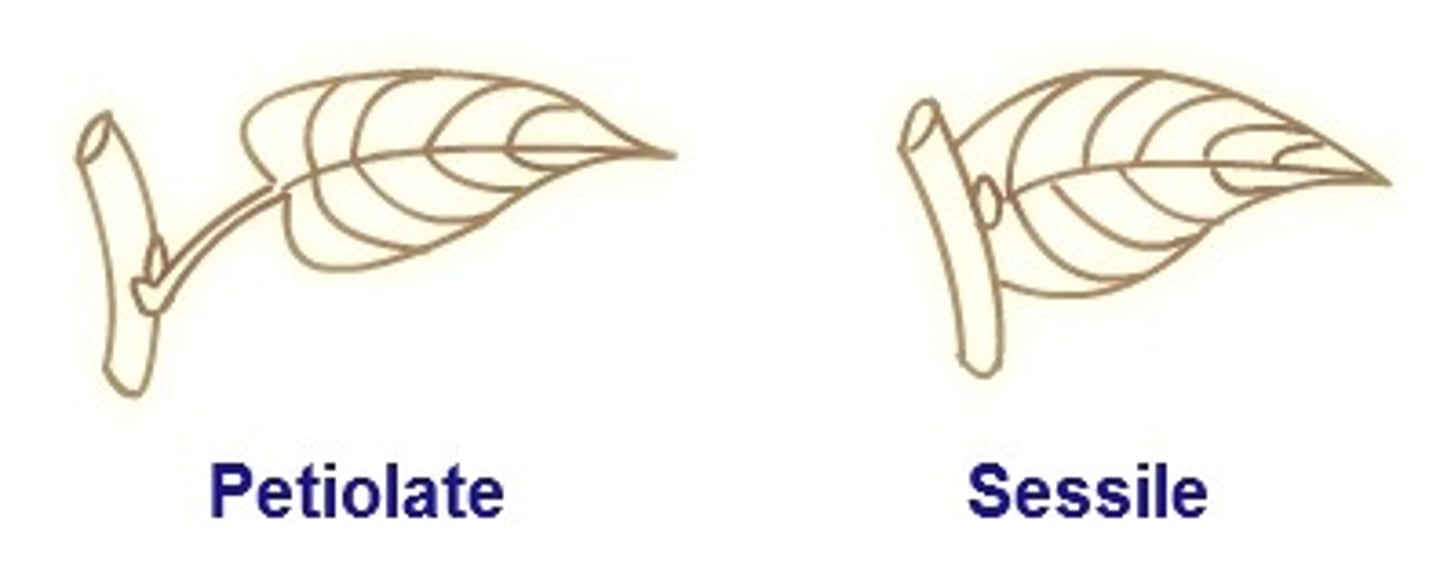
Leave veins
- vascular tissues that run throughout the leaf
---------------------------
TYPES:
- parallel
- pinnate
- palmate
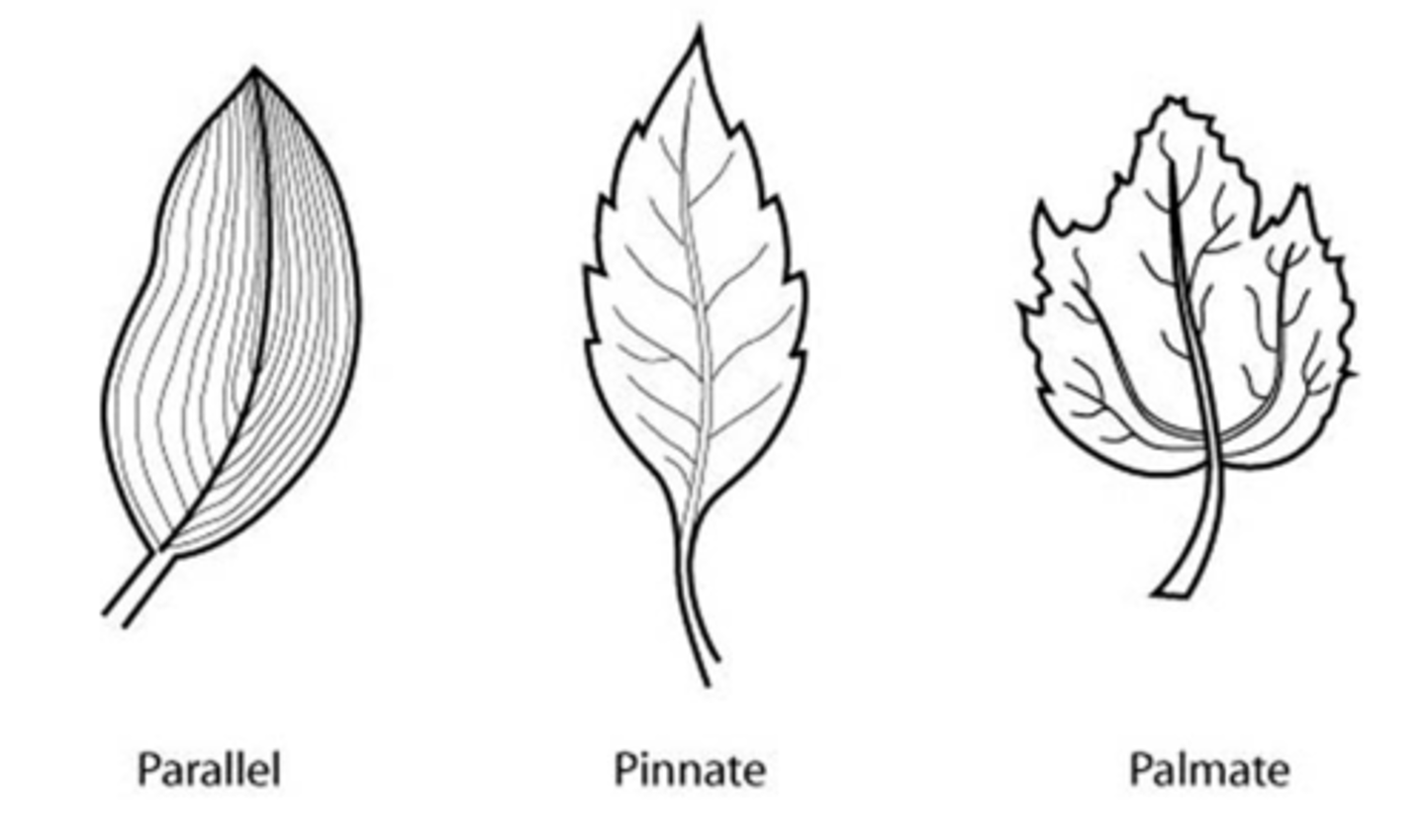
parrallel venation
all veins run parallel to each other
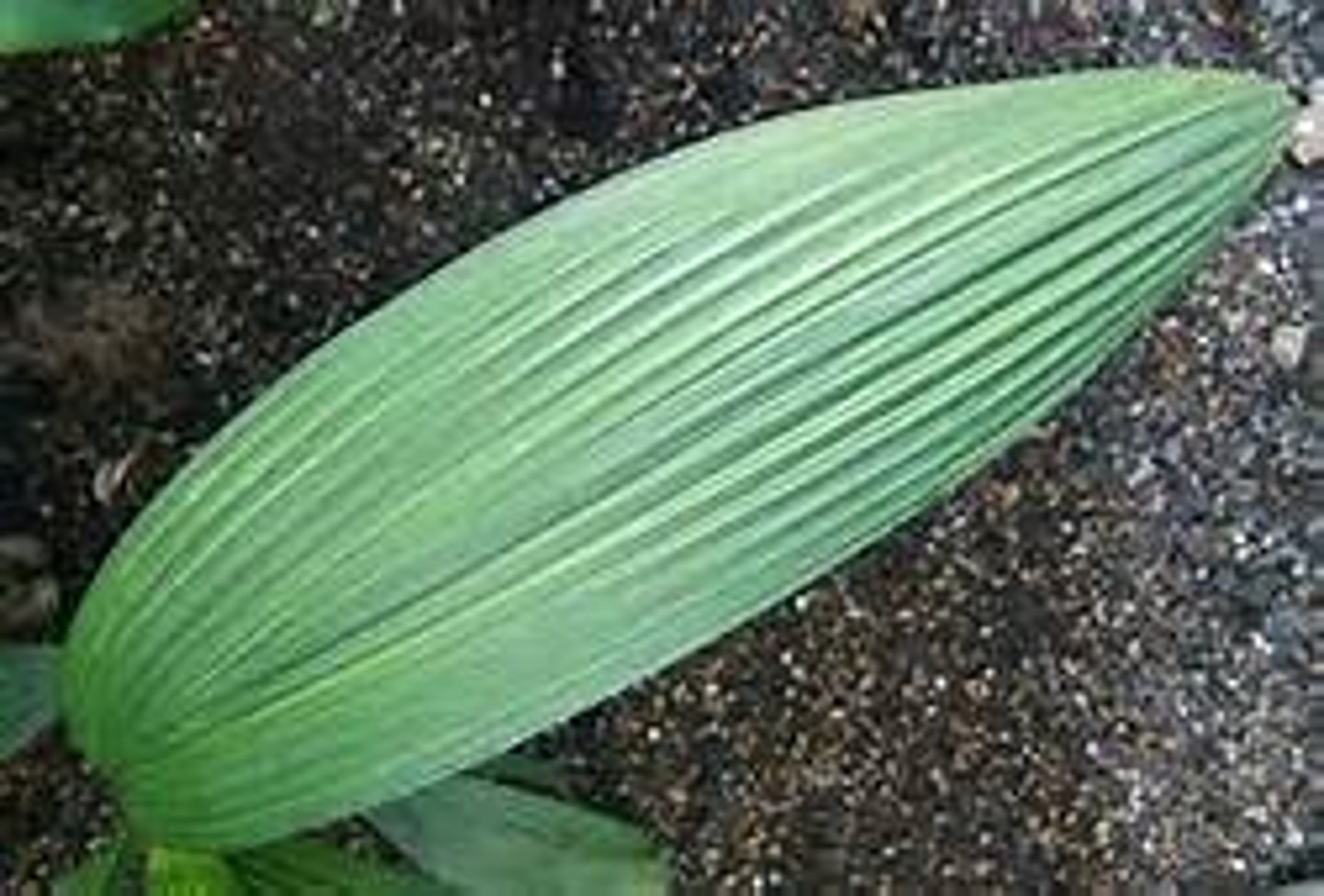
Pinnate venation
a midrib runs down the center of the blade
- smaller veins arise from it
---------------------------
Is the most Common
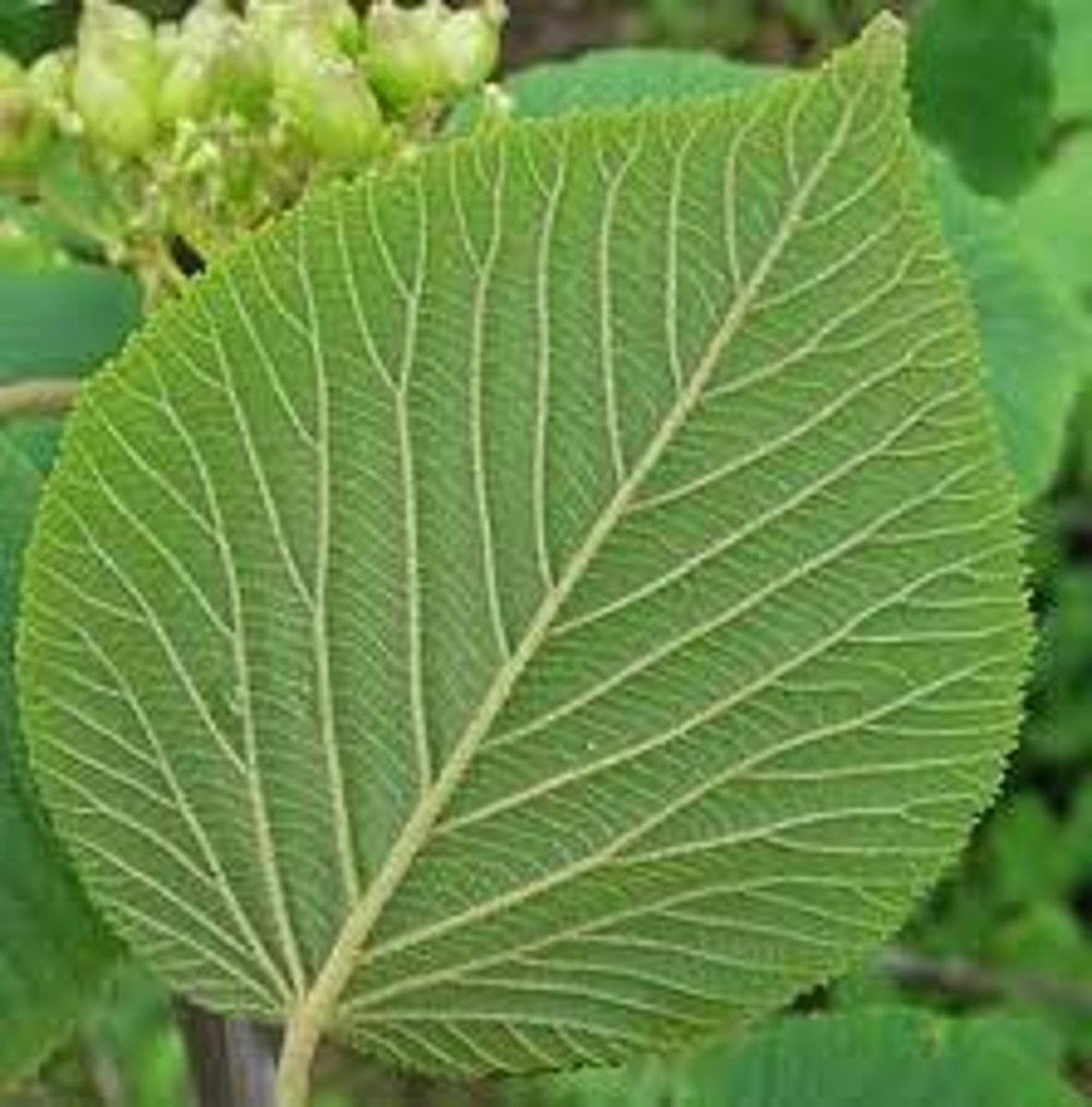
palmate venation
large veins branch out at the base of the blade
- looks like several midribs
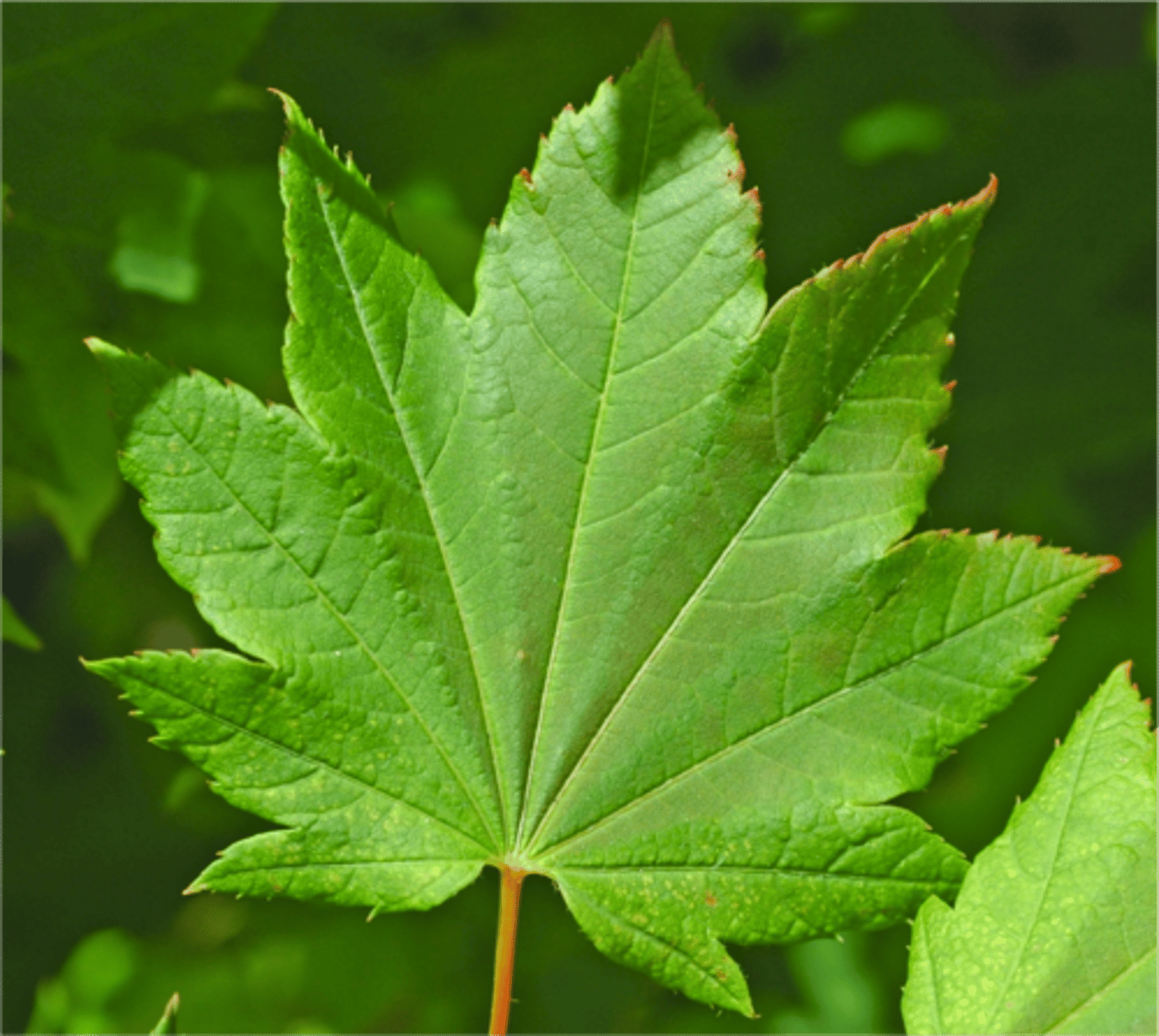
simple leaves
- doesn't have leaflets
- leave blade is undivided and lobed
- is a simple leaf
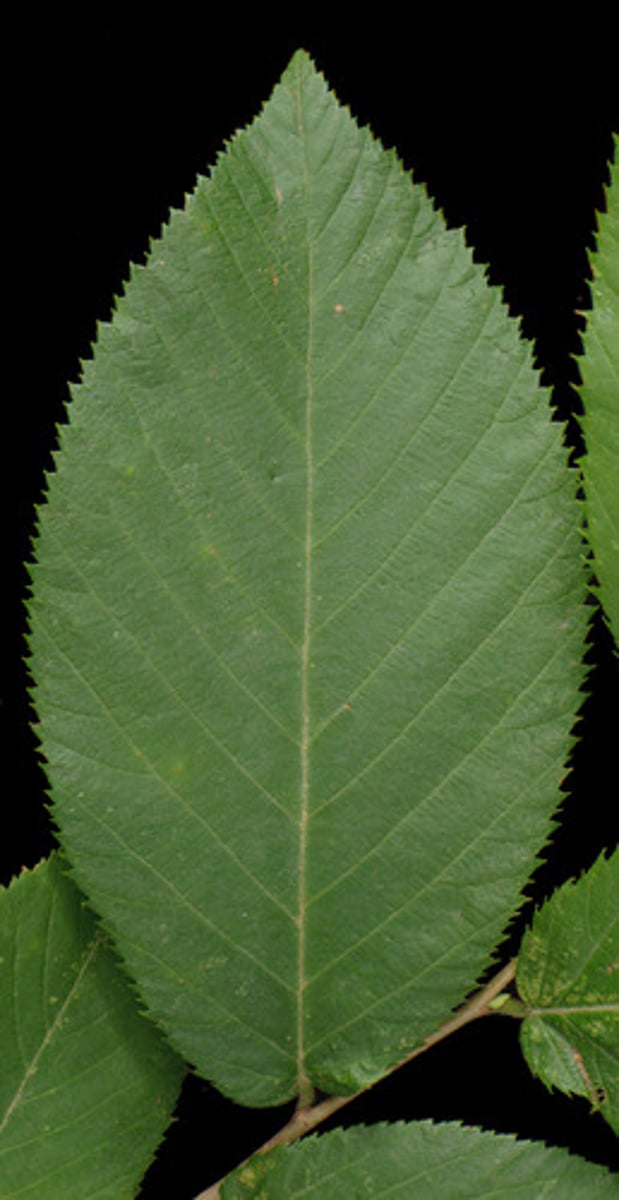
compound leaves
- has leaflets
- rise form the division of the leave blade
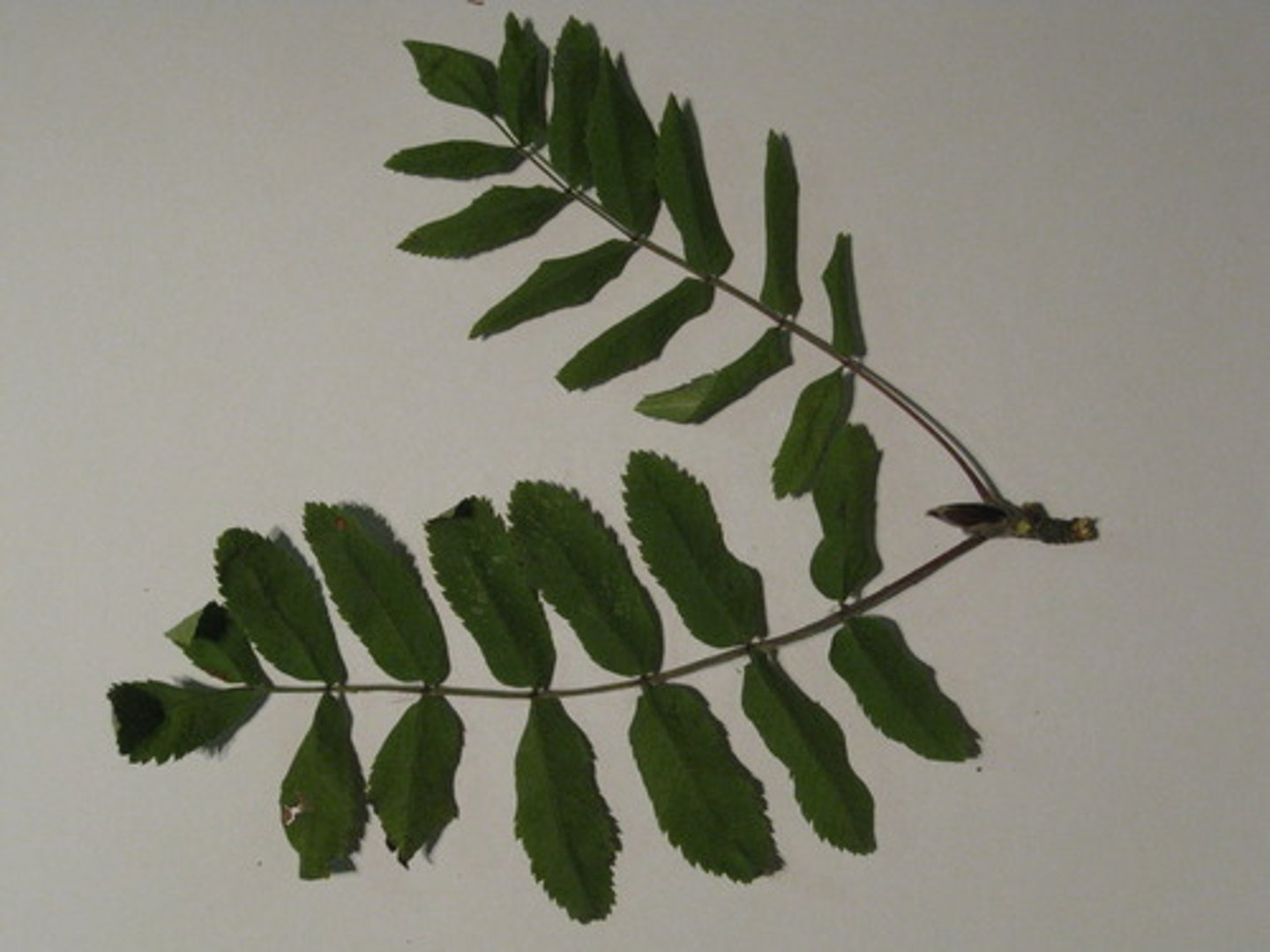
pinnately compound
Compound leaves with a rachis
------------------
FEATURES:
- has 1° rachis
- has 1° leaflet
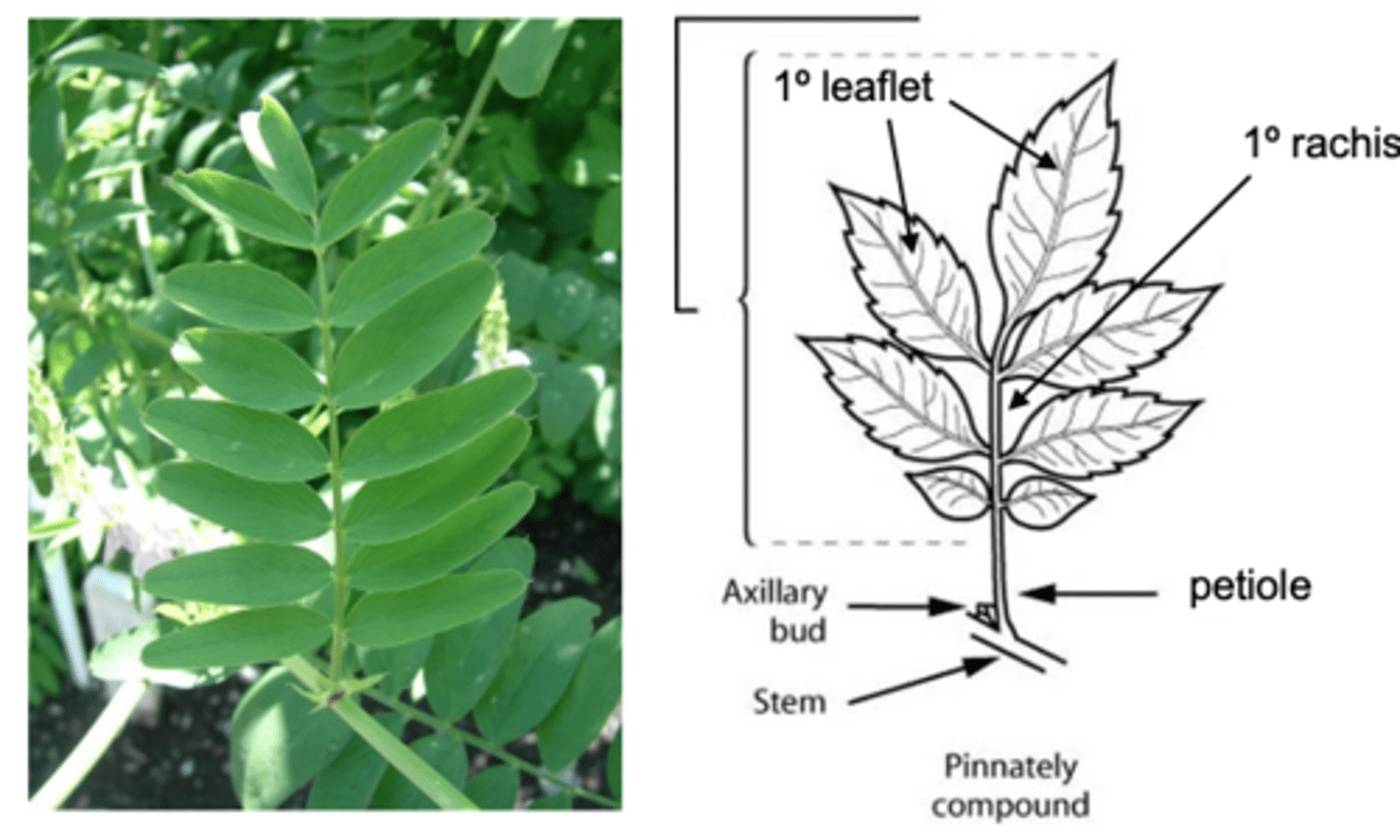
Rachis (pinnately compound)
midrib of a pinnately compound leaf
- arises from leaflets
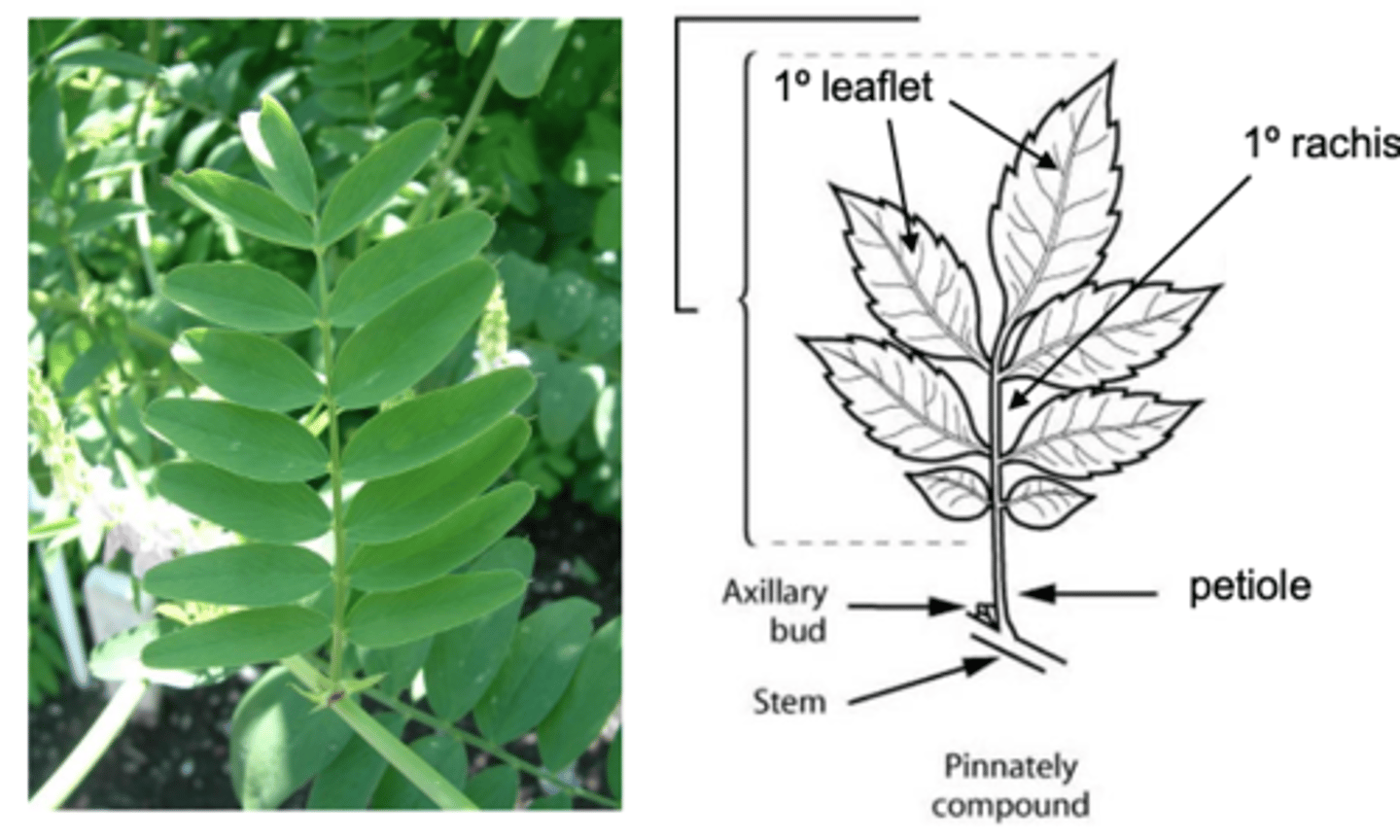
palmately compound leaf
no rachis is visible
------------------
FEATURES:
- has 1° leaflet
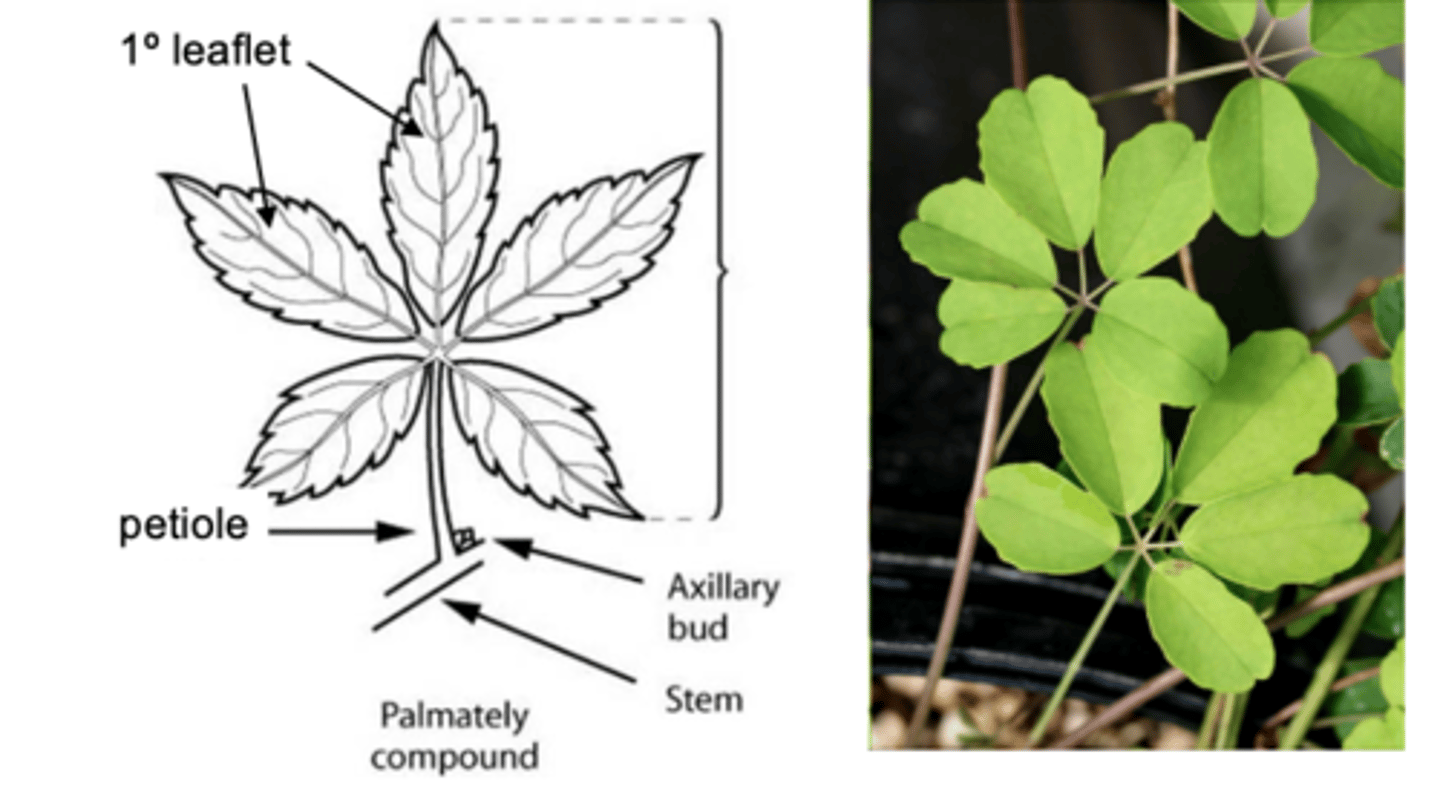
twice pinnately compound
leaflets can further divided into leaflets, where the midrib of the original leaflet is now the rachis
------------------
FEATURES
- has 1° and 2° rachis
- has 1° and 2° leaflet
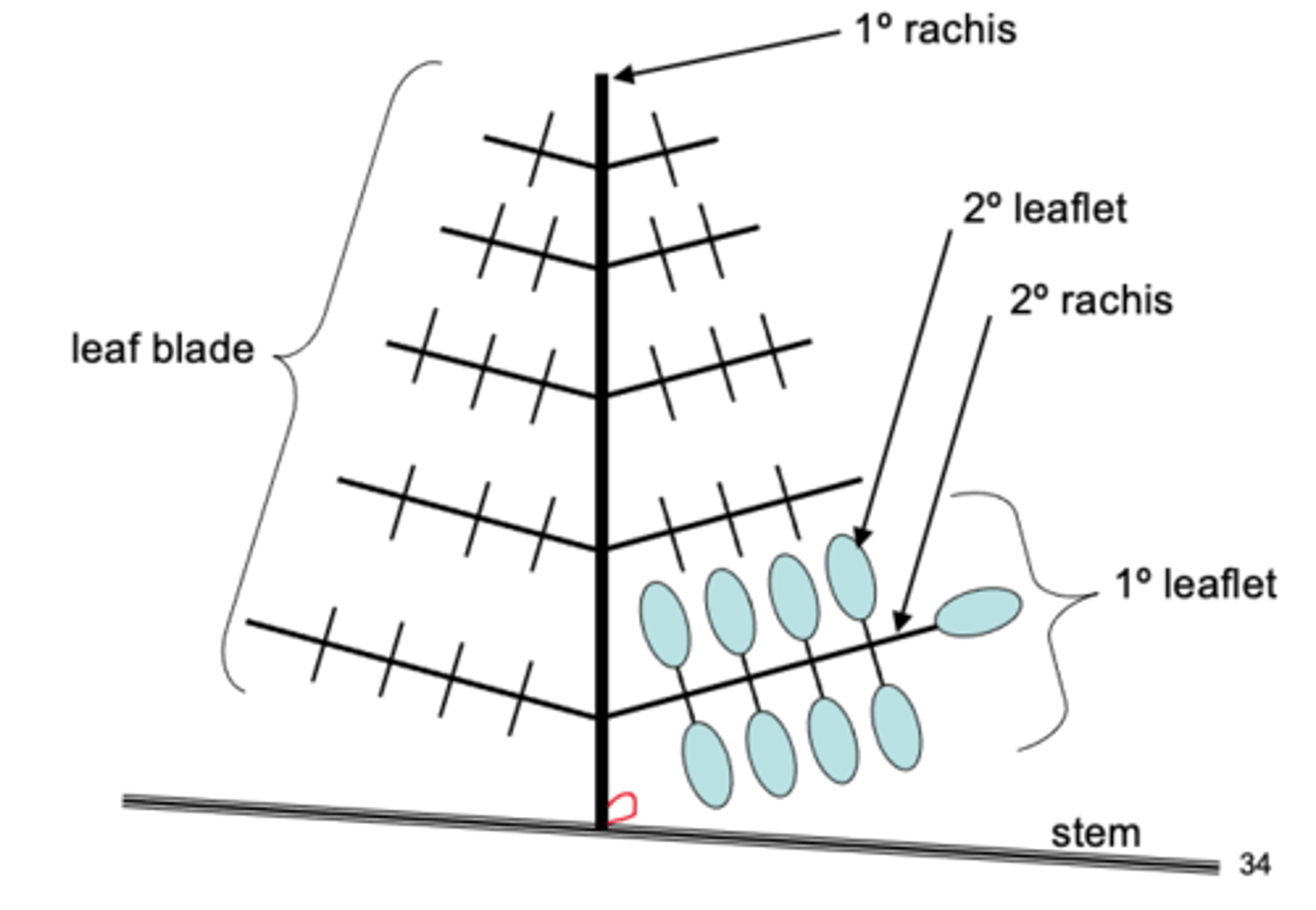
leaf arrangement
refers to the arrangement of leave on the stem
alternate arrangement of leaves
1 leaf per node
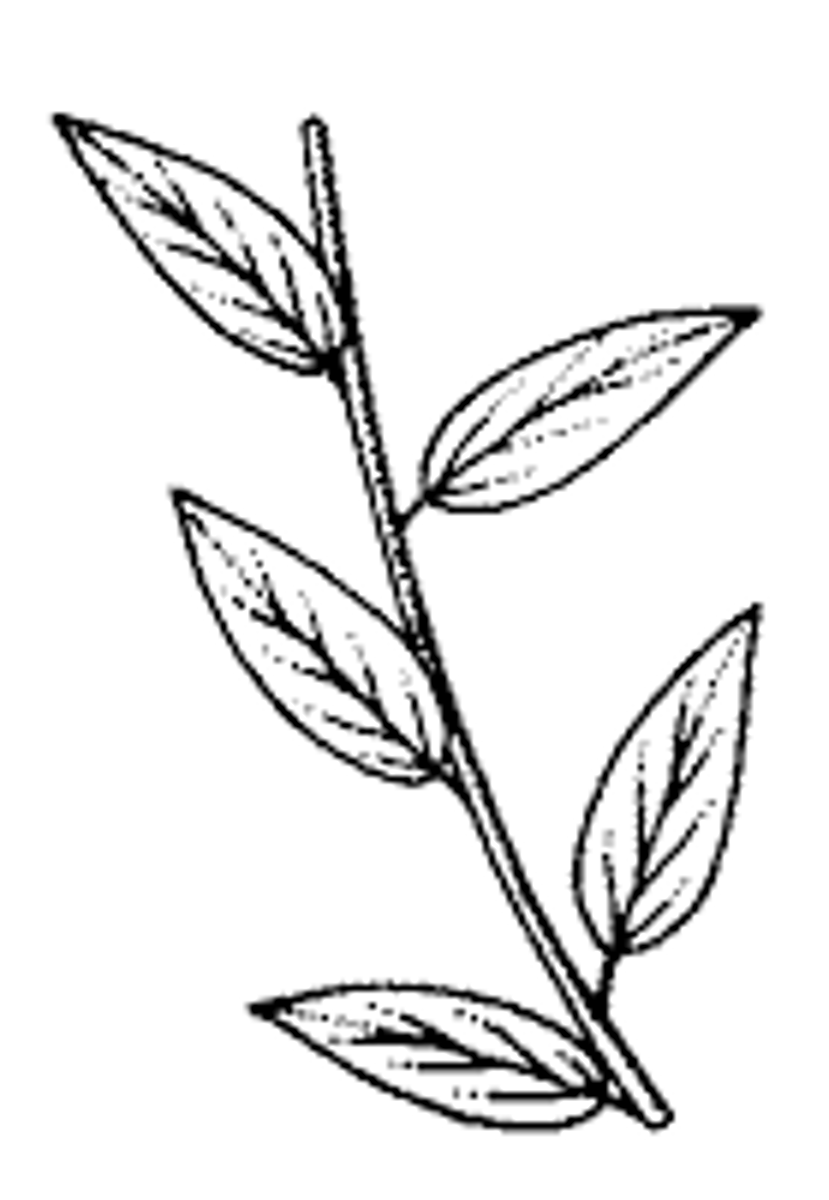
opposite arrangement of leaves
2 leaves per node across from each other
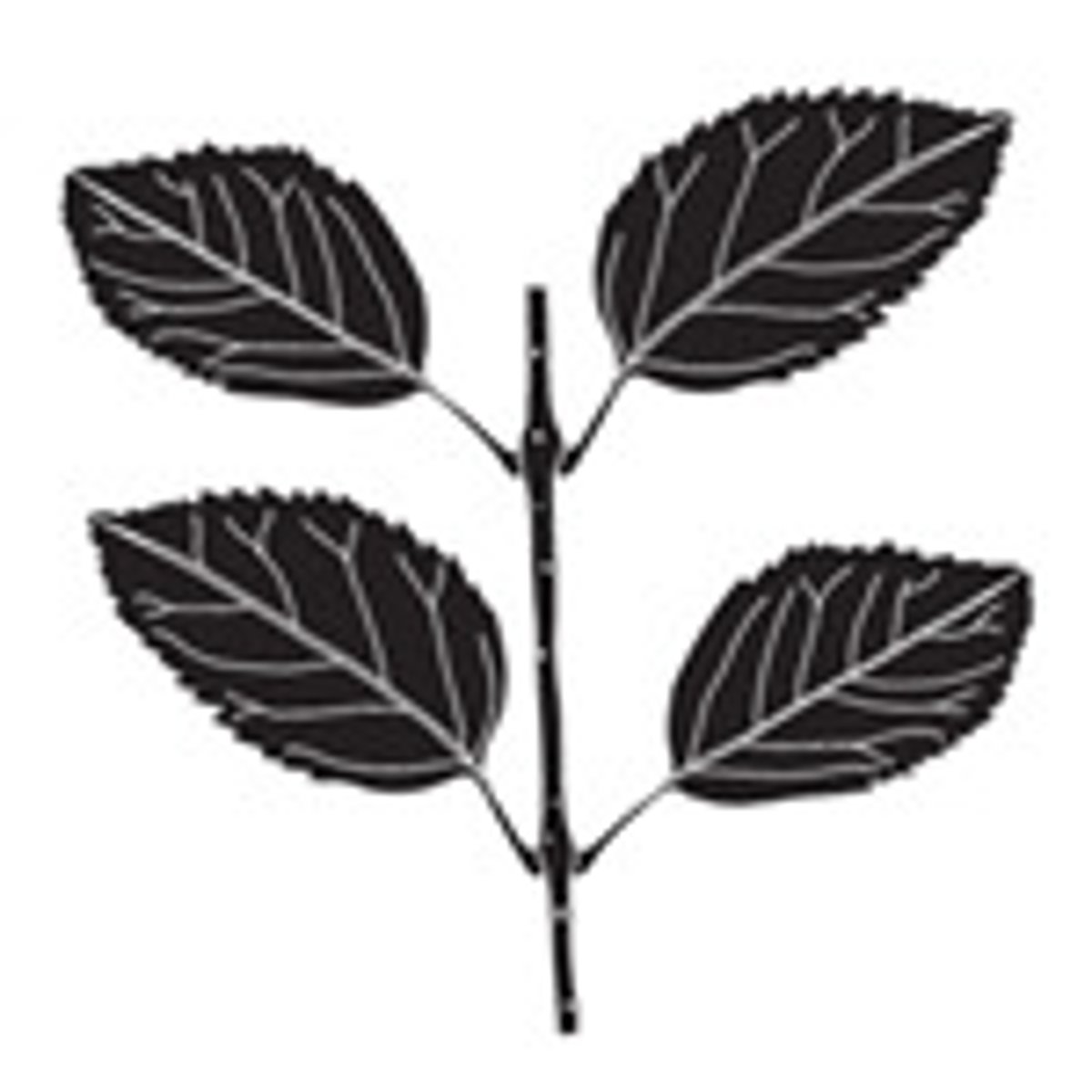
Whorled arrangement of leaves
3 or more leaves per node
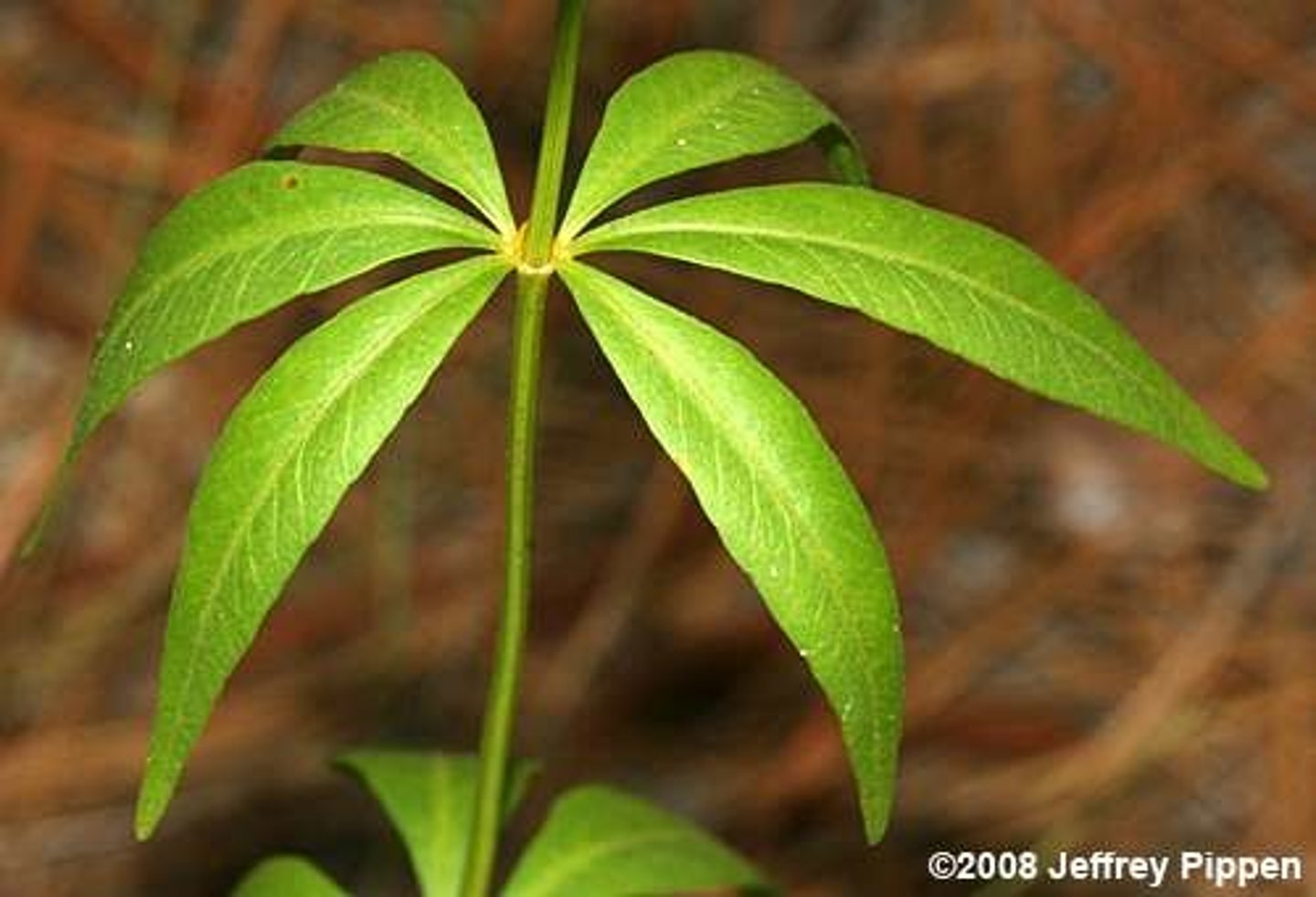
leaf ranking
refers to the arrangement of leaves on the stem, but viewed from the top of the stem, looking down
------------------
if you look down the tip of a shoot, you can see how the leaves are arranged around the stem
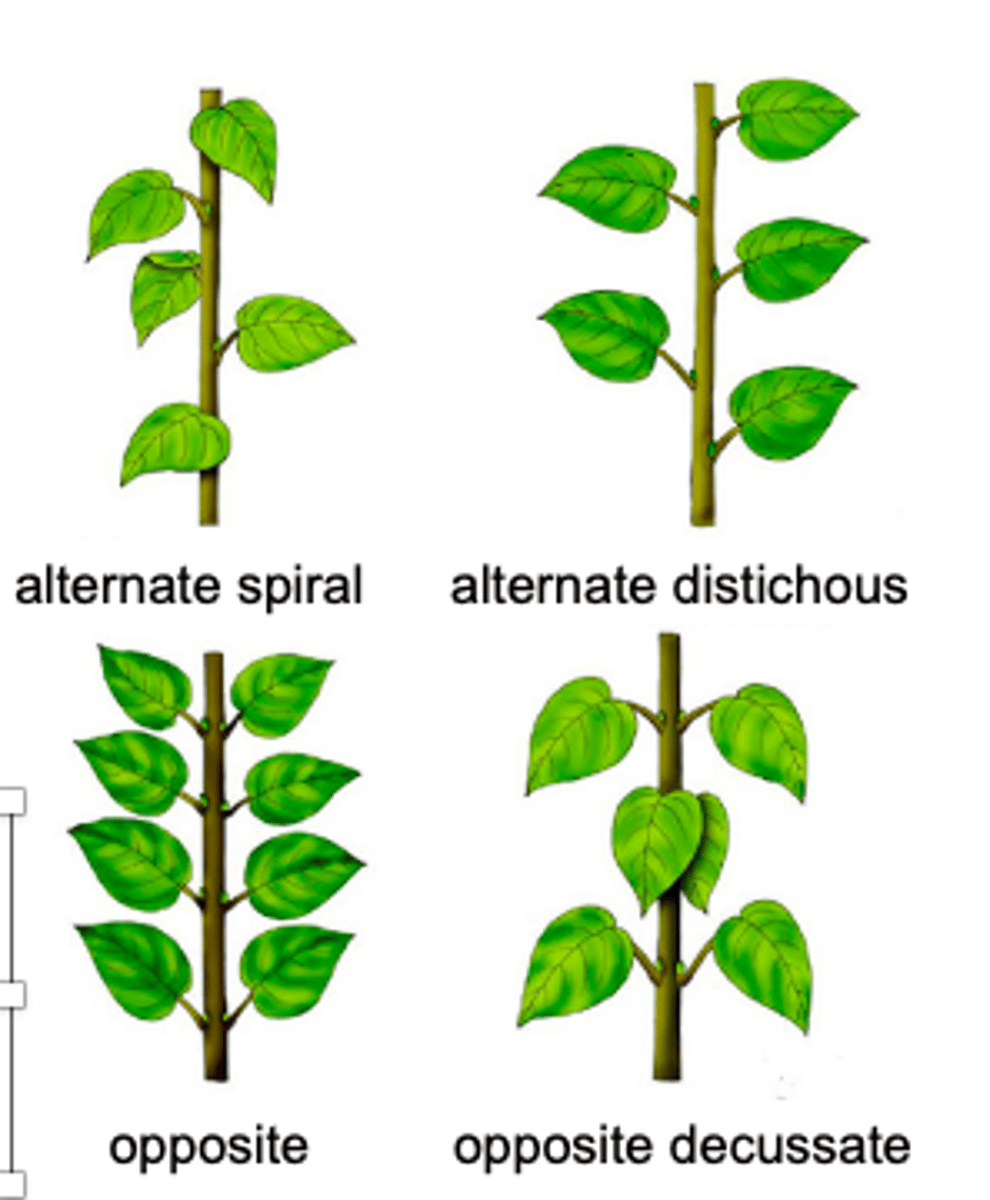
alternate spiral
shoot resembles a spiral staircase
------------------
MOST COMMON
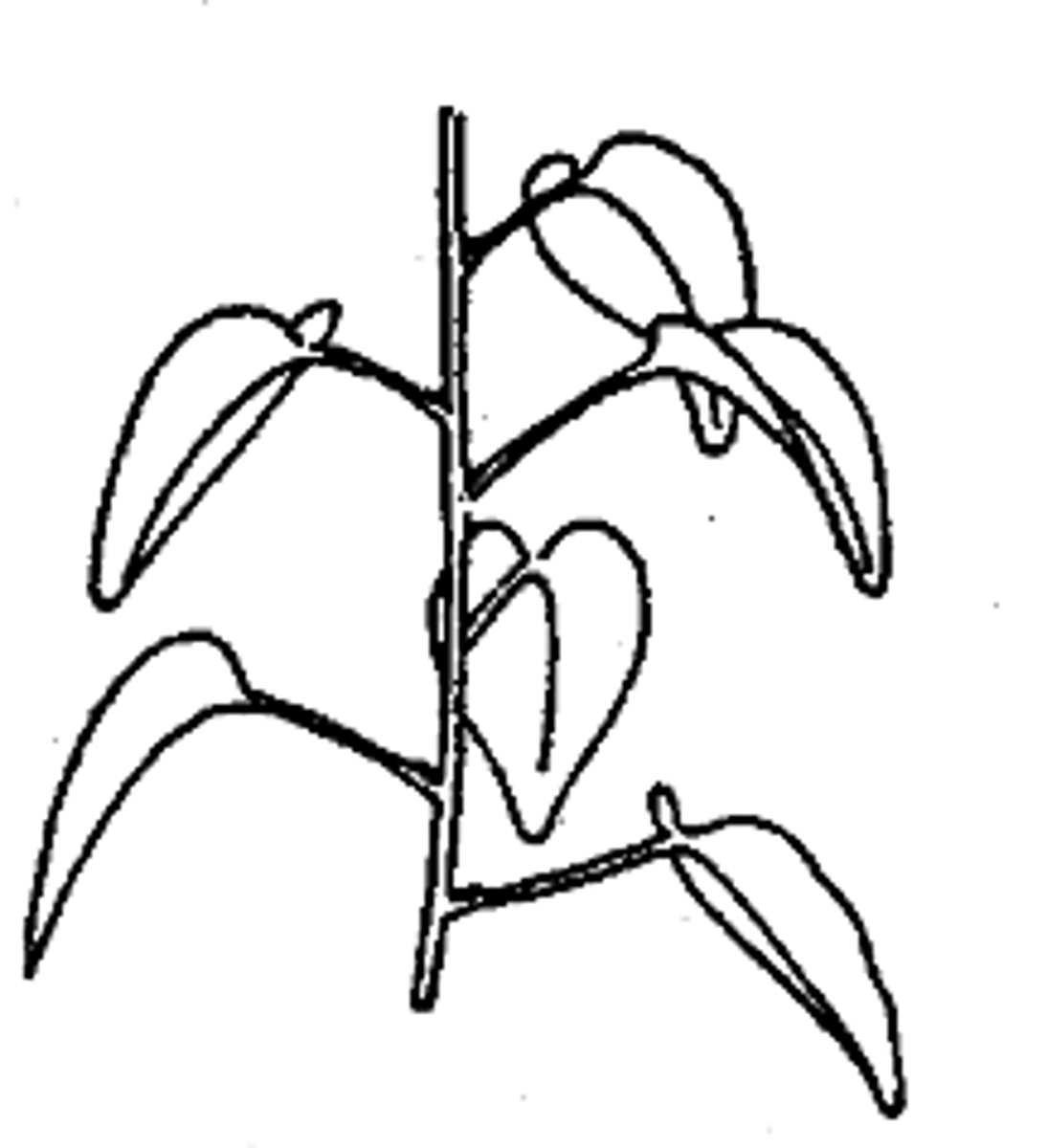
Distichous
where the leaves lay flat like a fan
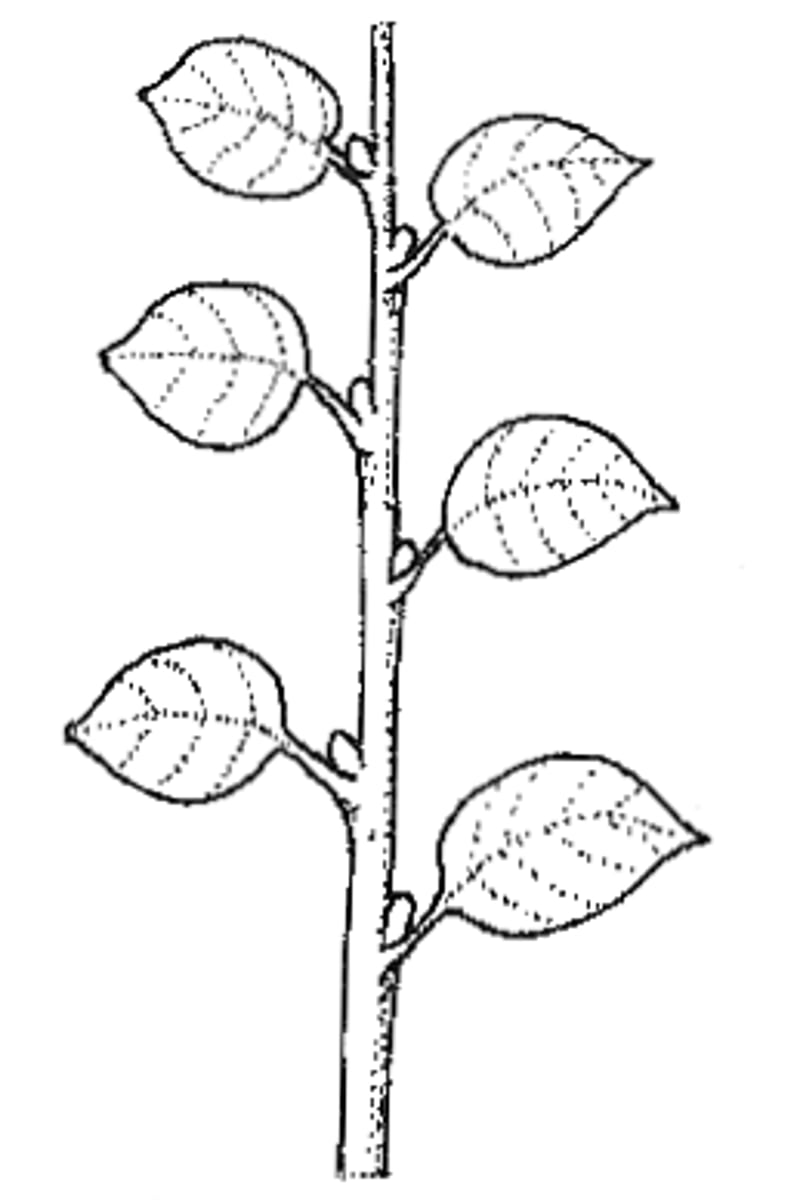
Decussate
leaves at a node are perpendicular to the leaves on the next node
------------------
Usually seen in opposite leaves
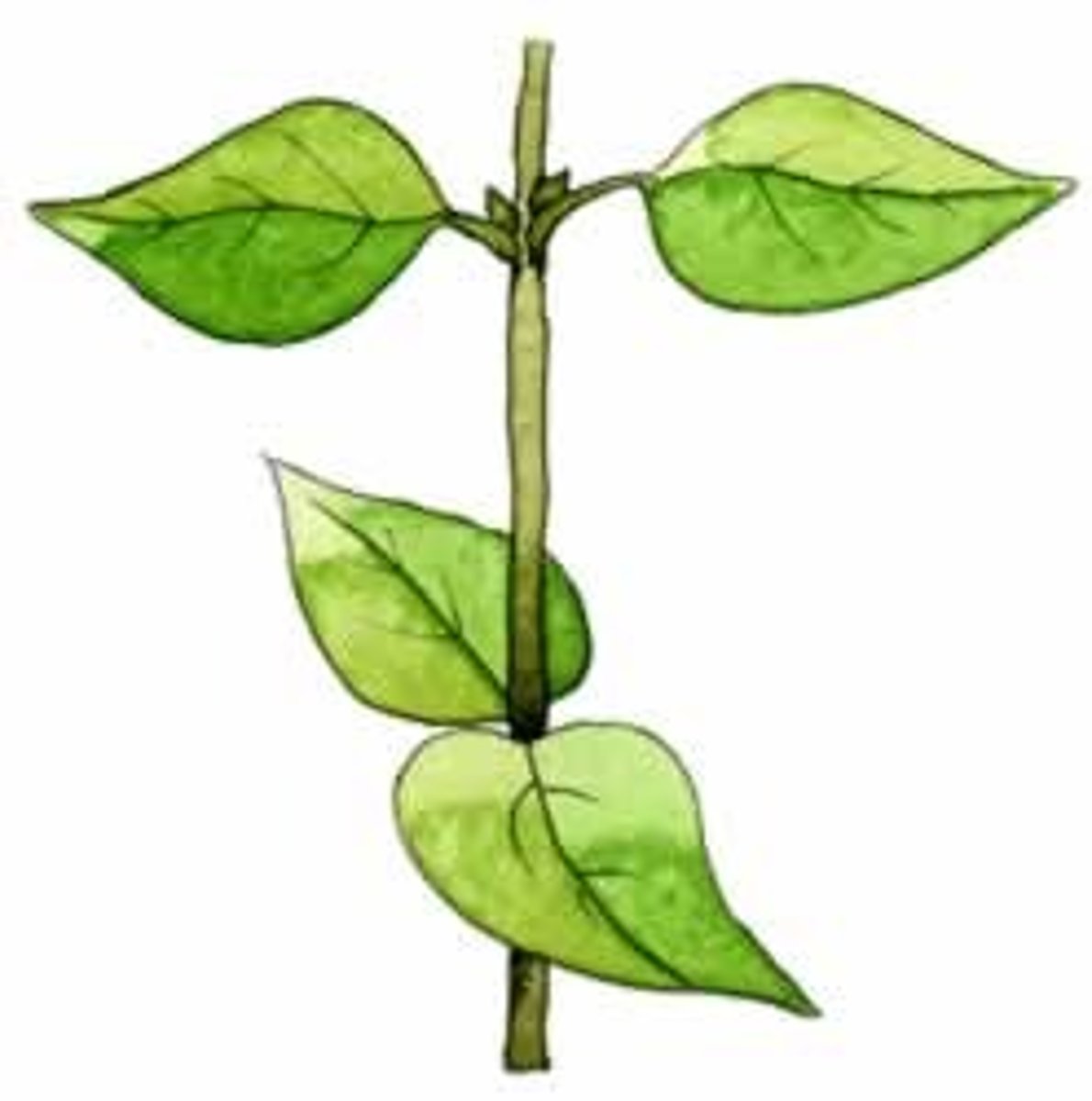
margins
refer to the edge of the leaf
- entire
- dentate
- lobed
- serrate
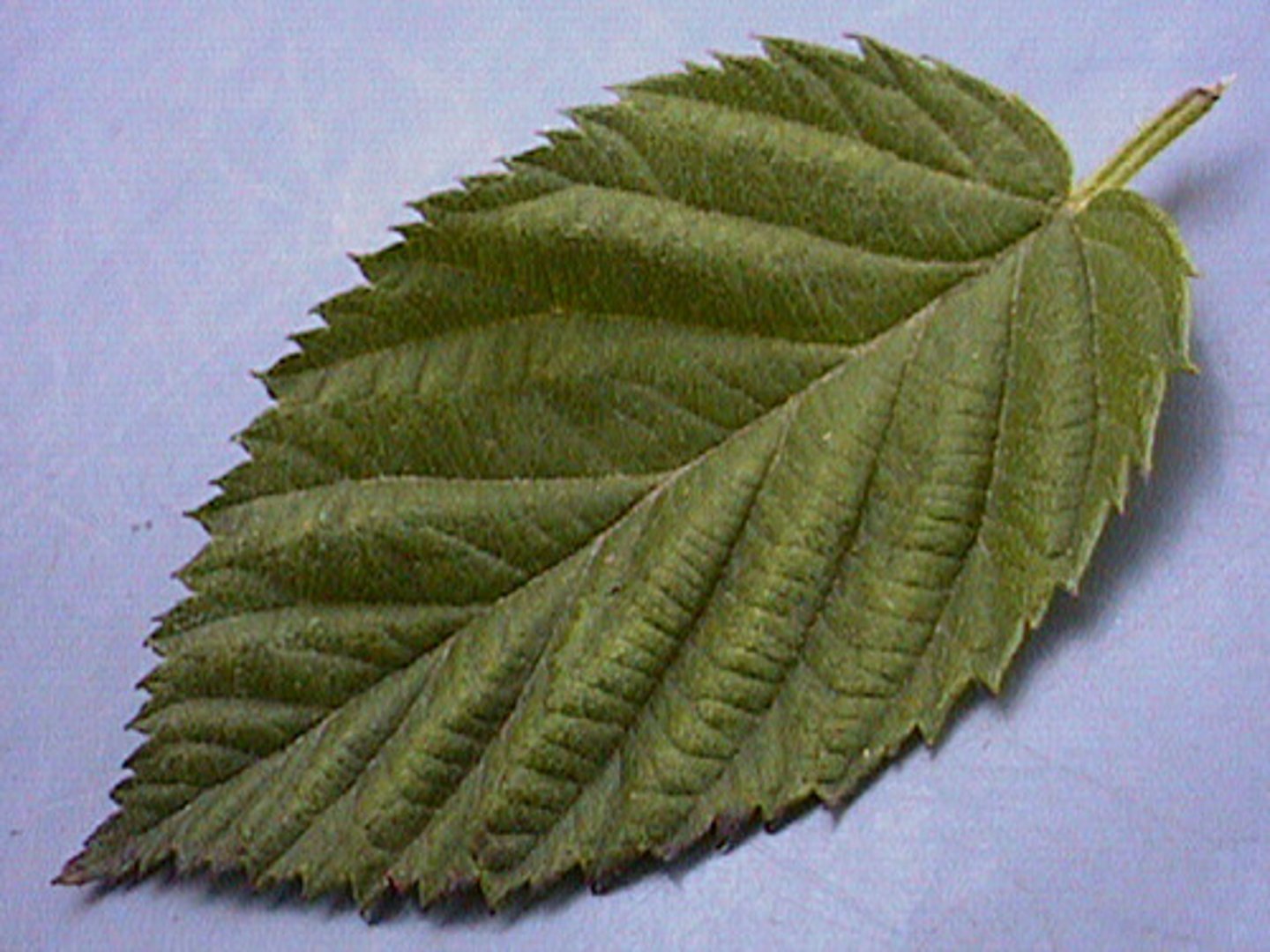
entire margin
- smooth
- no bumps
- no sharp edges
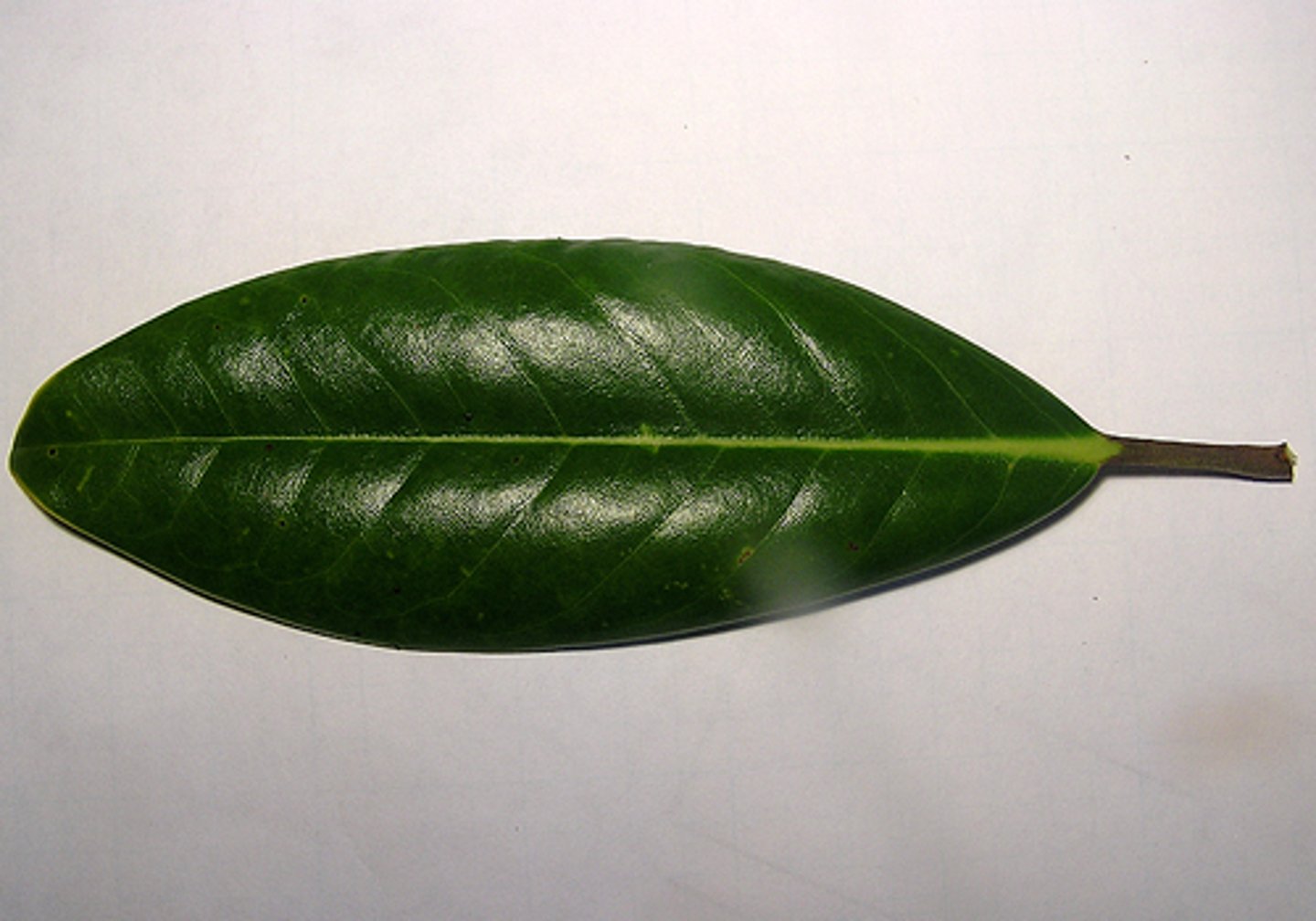
dentate margin
- teeth along its edge that point outward rather than just towards the apex
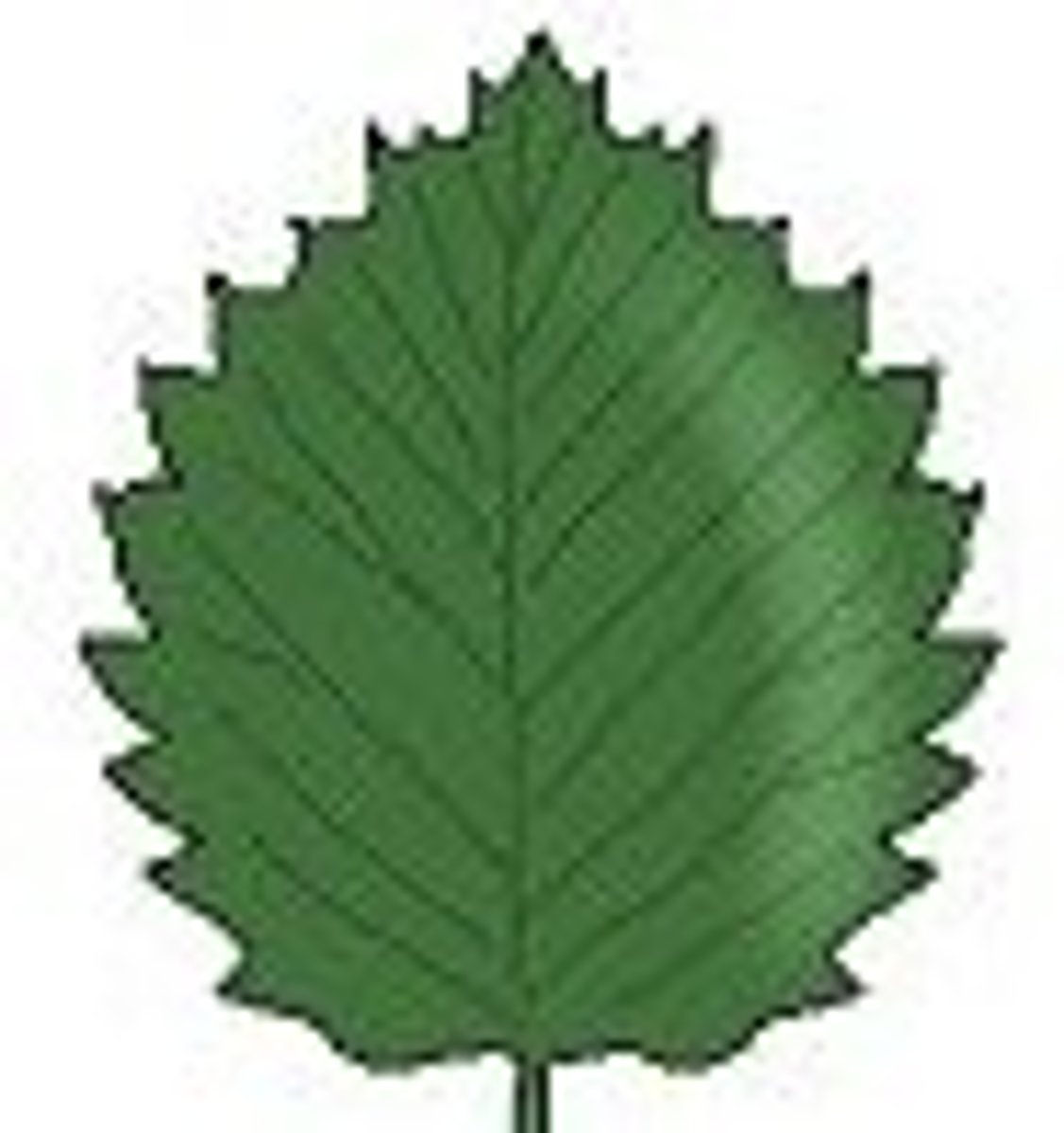
lobed margin
A leaf that has deep indentations around the edge, creating lobes
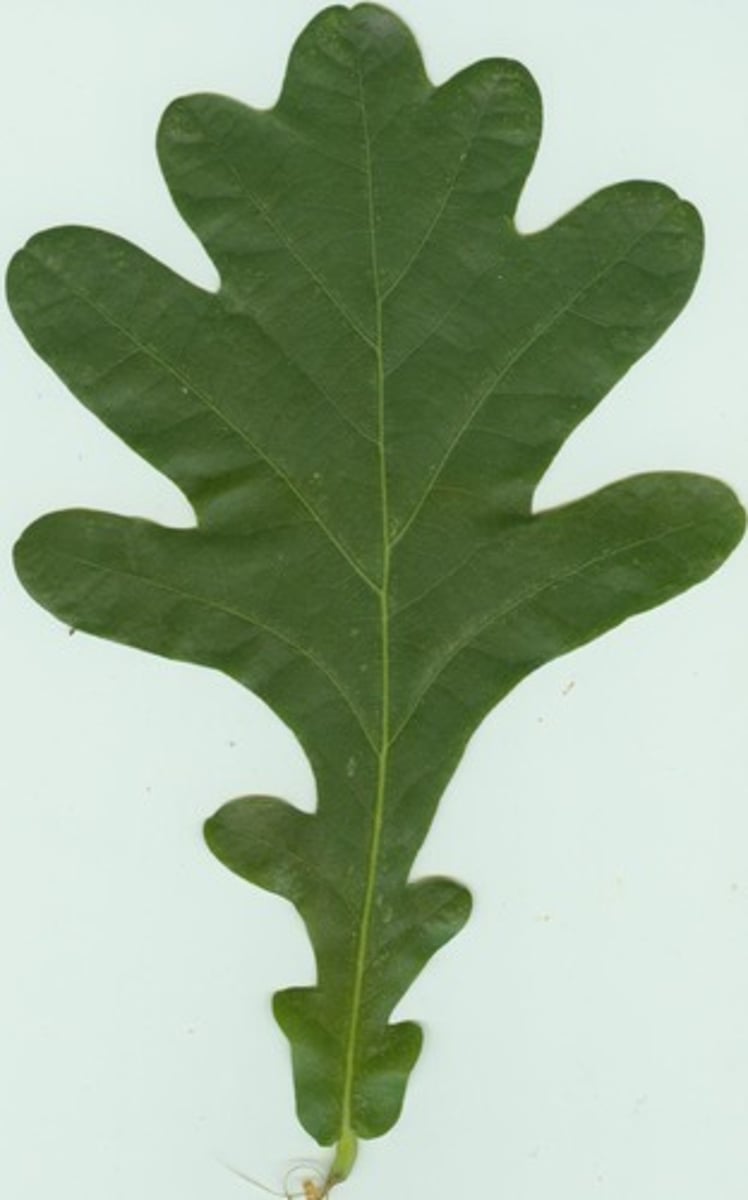
serrate
Having a jagged, saw-toothed edge
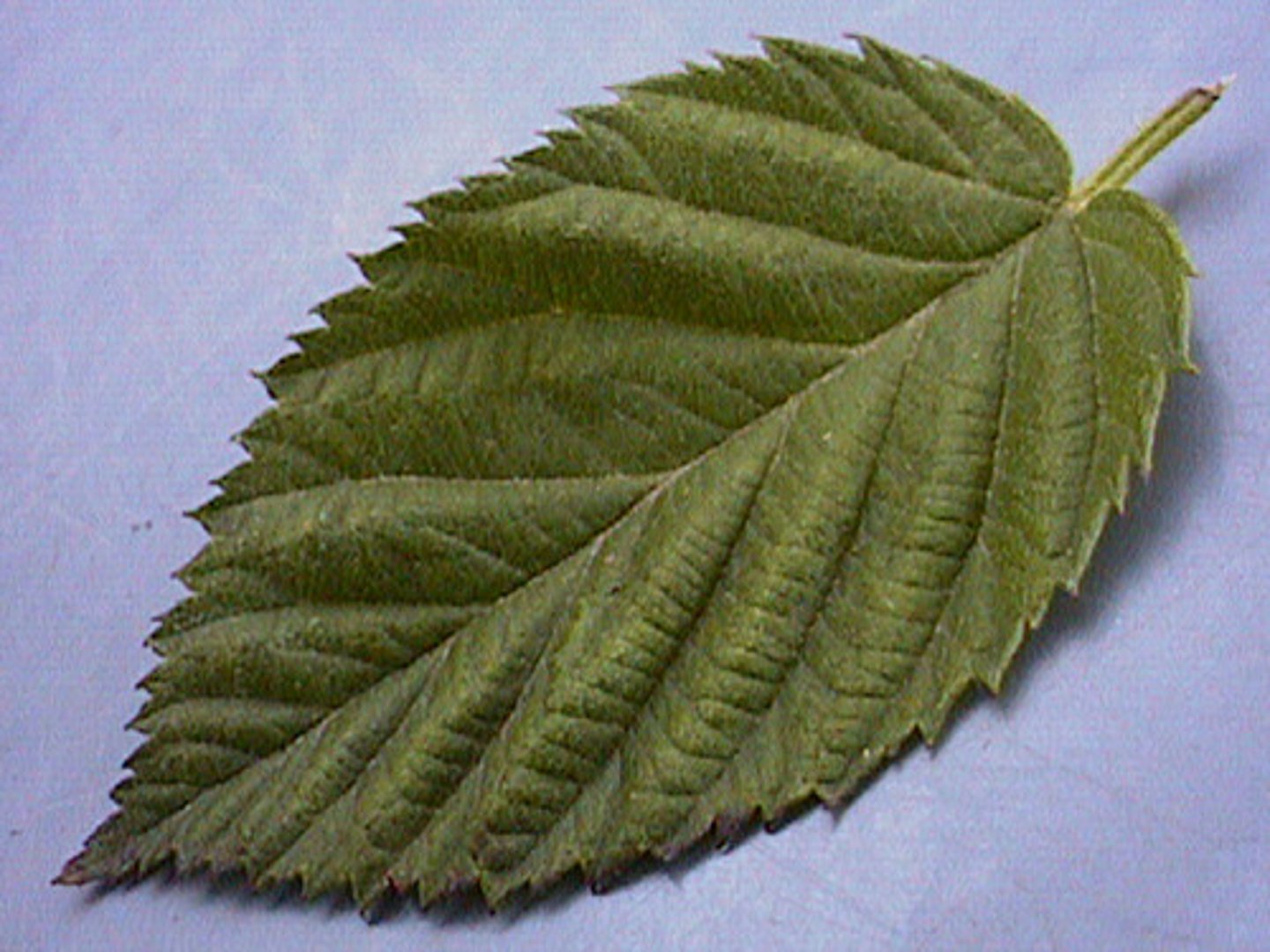
leaf bases
can be asymmetrical
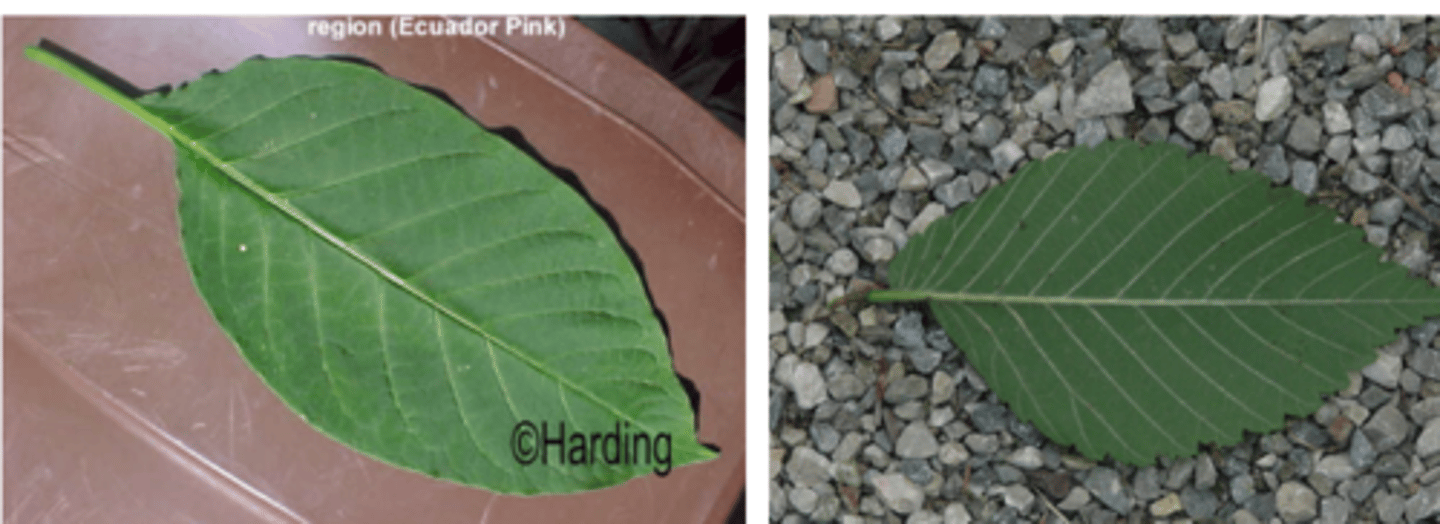
Stipules
appendages sometime present to either side of the base of the petiole (leaf stalk)
------------------
Stipules can be fused to the petiole, spine-like, leaf-like, form tendrils, or just appear as narrow hairs, dots or glands.
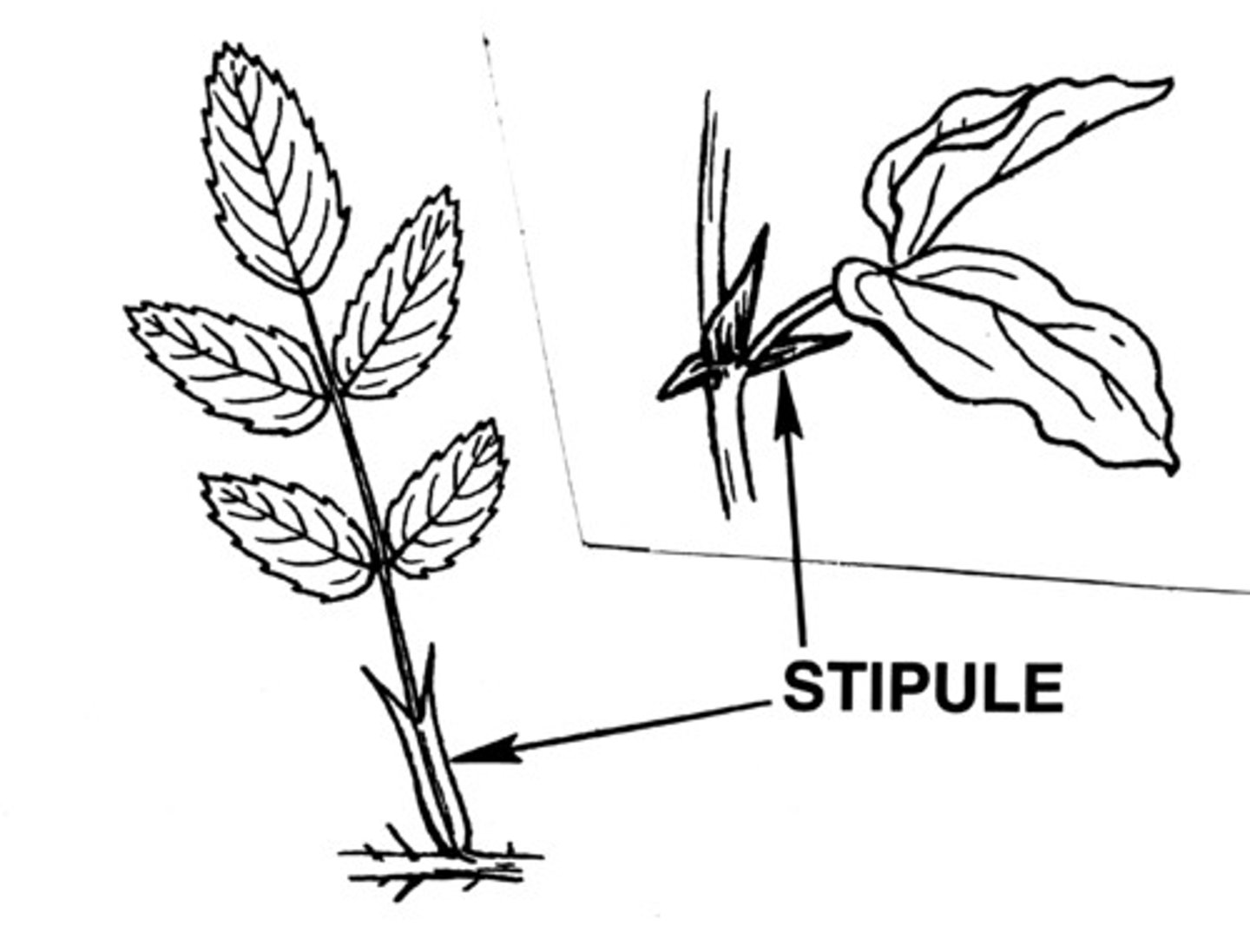
pulvinus
thickened stalk of a leaf and/ or leaflet
- can lose or gain water
- cause the leaf or leaflet to move (nastic movement)
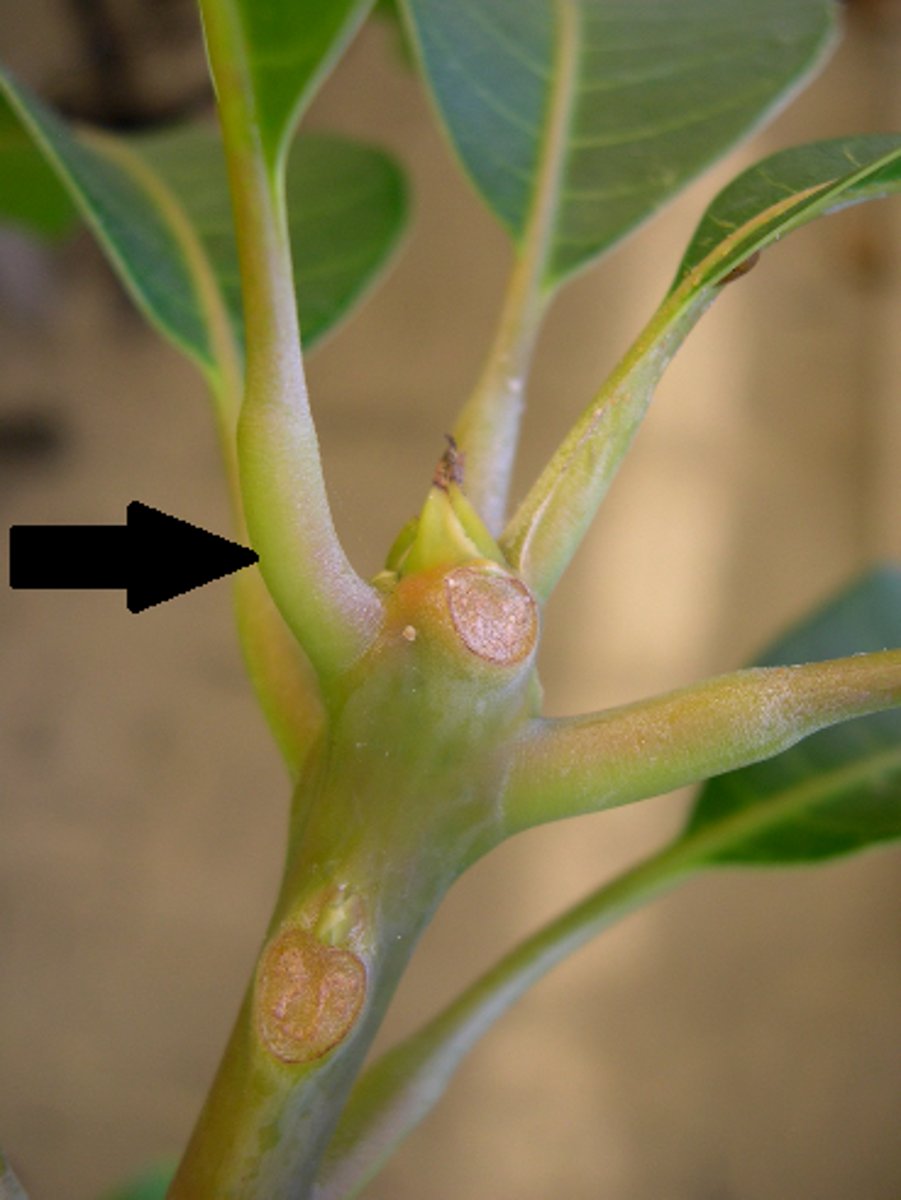
bract
modified leaf associated with a flower or a cluster of flowers
---------------
- tend to be smaller than leaves
- sometimes are a different color and/or texture
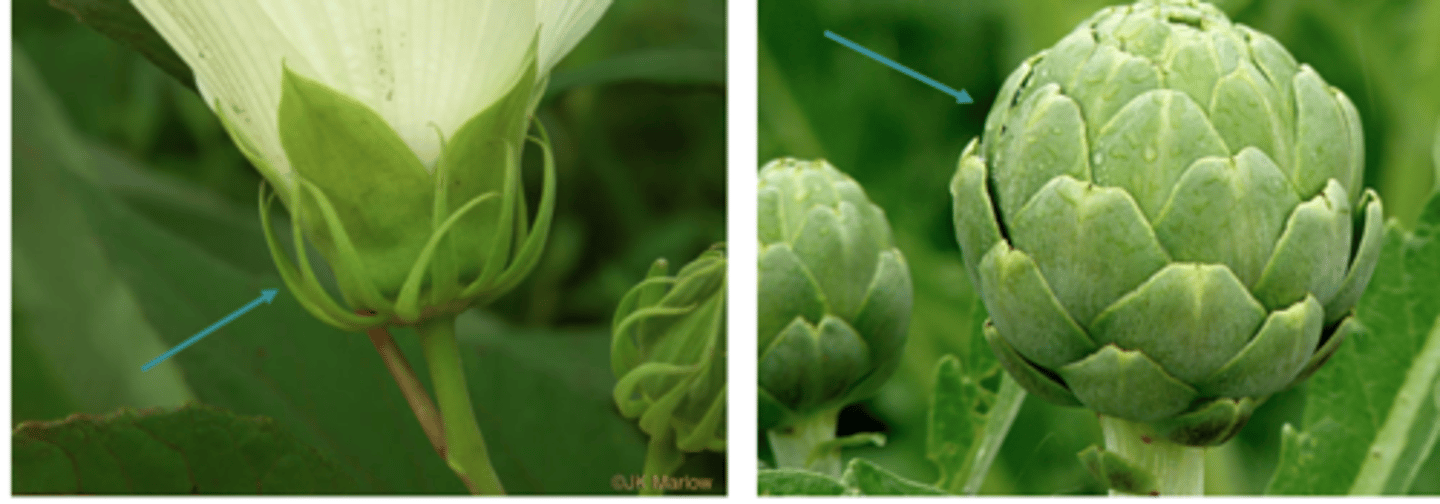
plant defenses
- Prickles
- thorns
- spines
- galls?
prickles
sharp projections of the epidermis
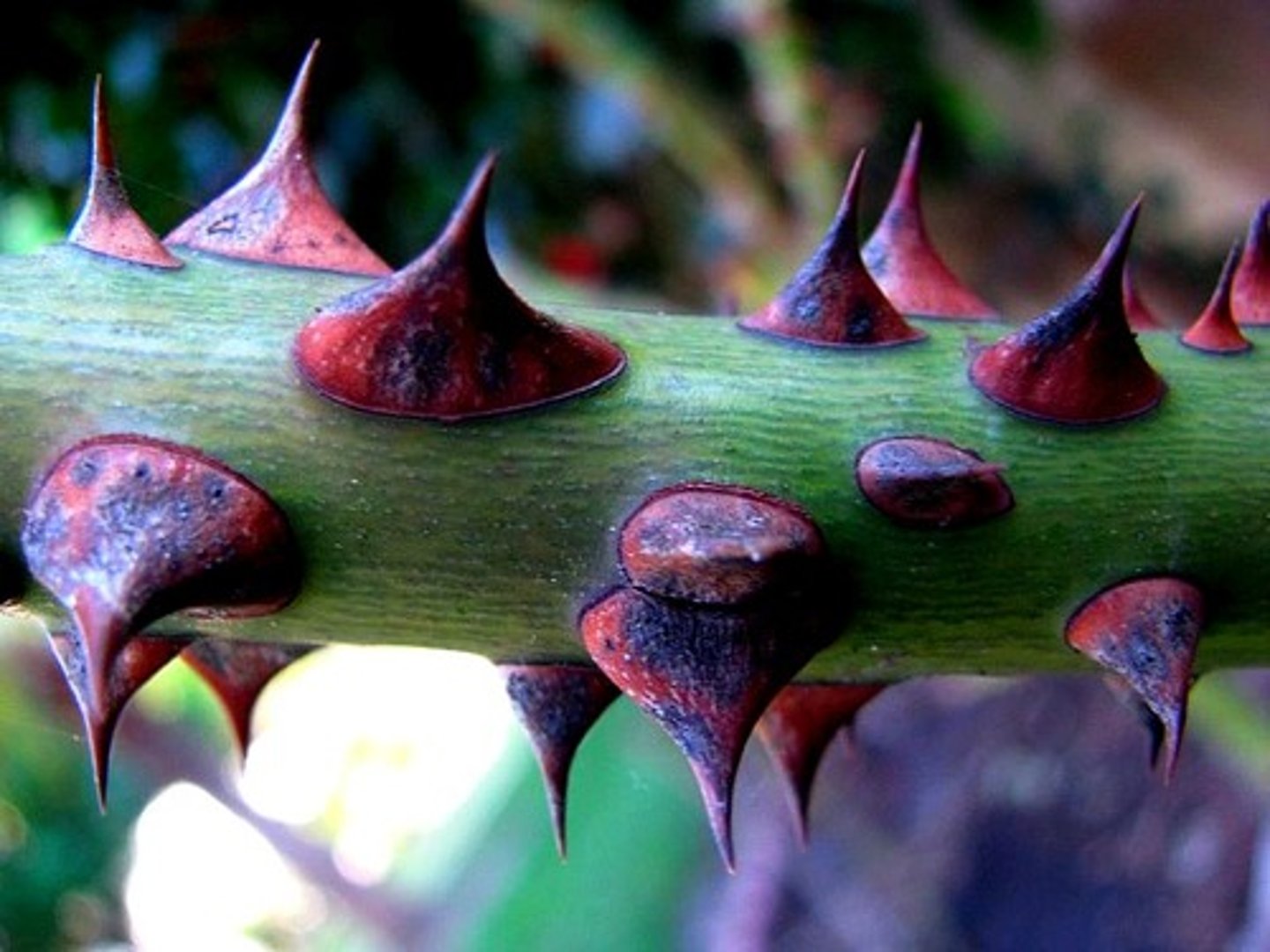
thorns
sharpened shoots
- sometimes bearing small leaves
- found in the leaf axil
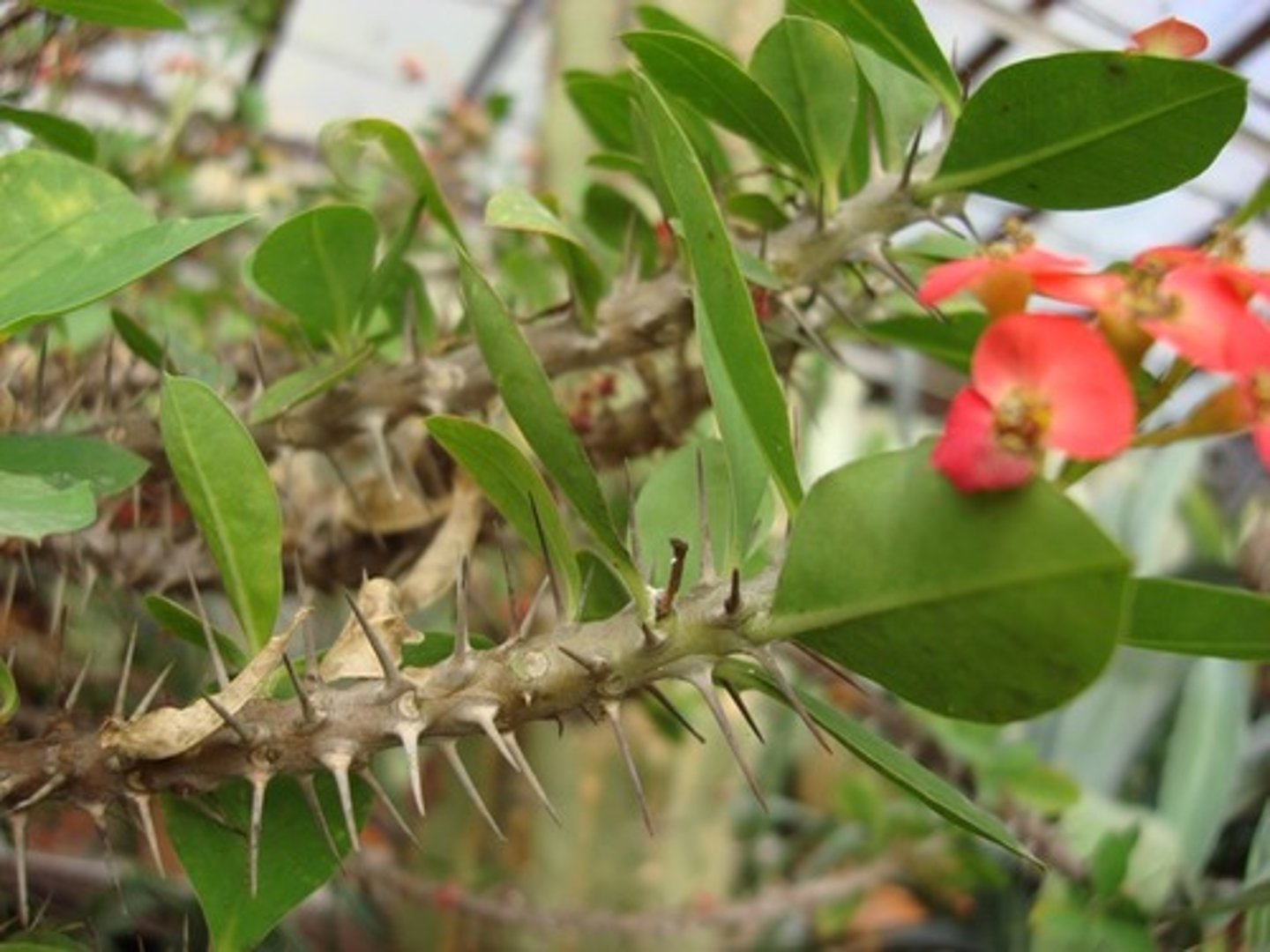
Spines
Modified leaf with vascular bundles.
- Usually for defense against herbivores (e.g., Cactus Spine).
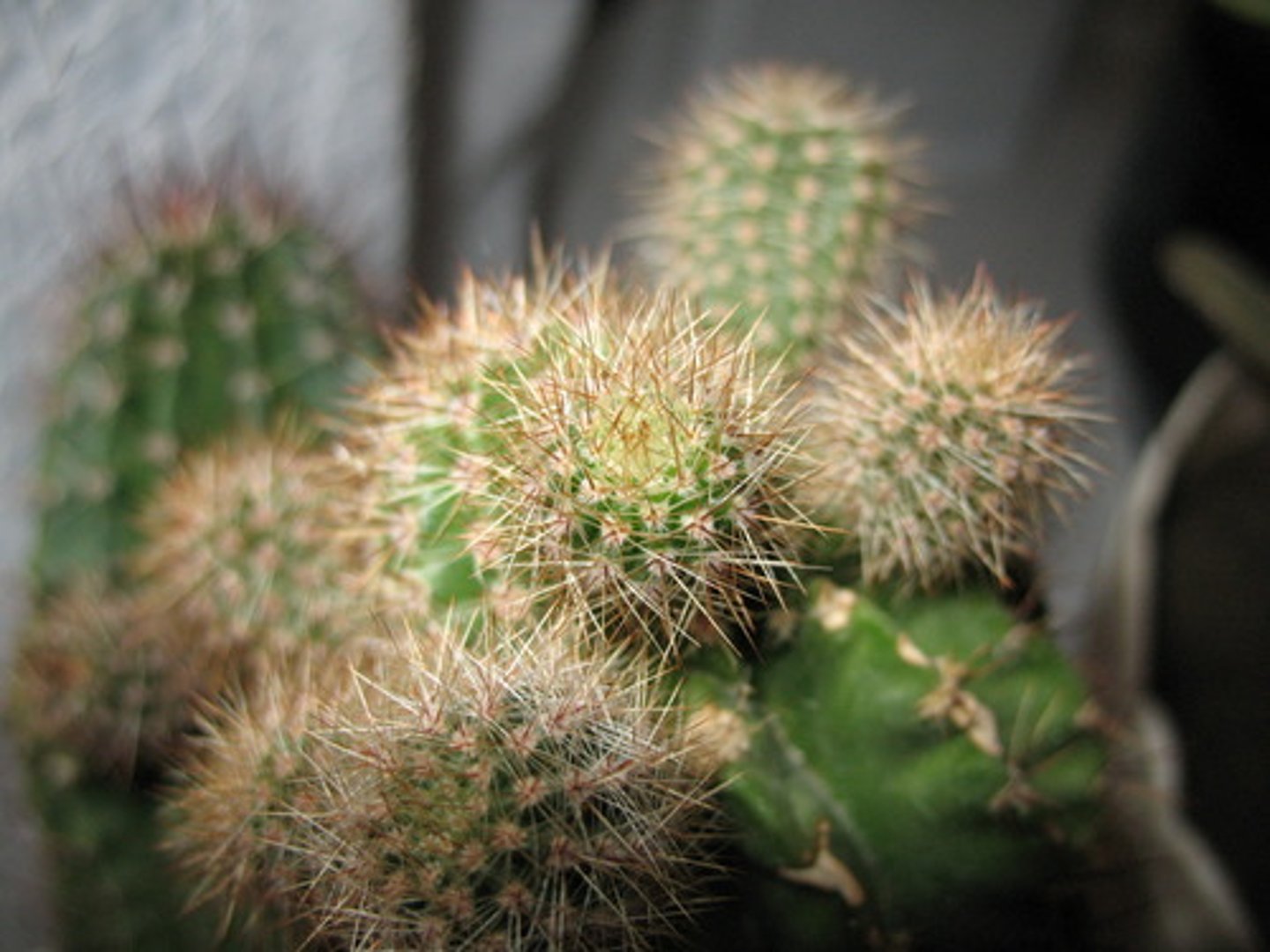
galls
swollen growths on plants created by insects
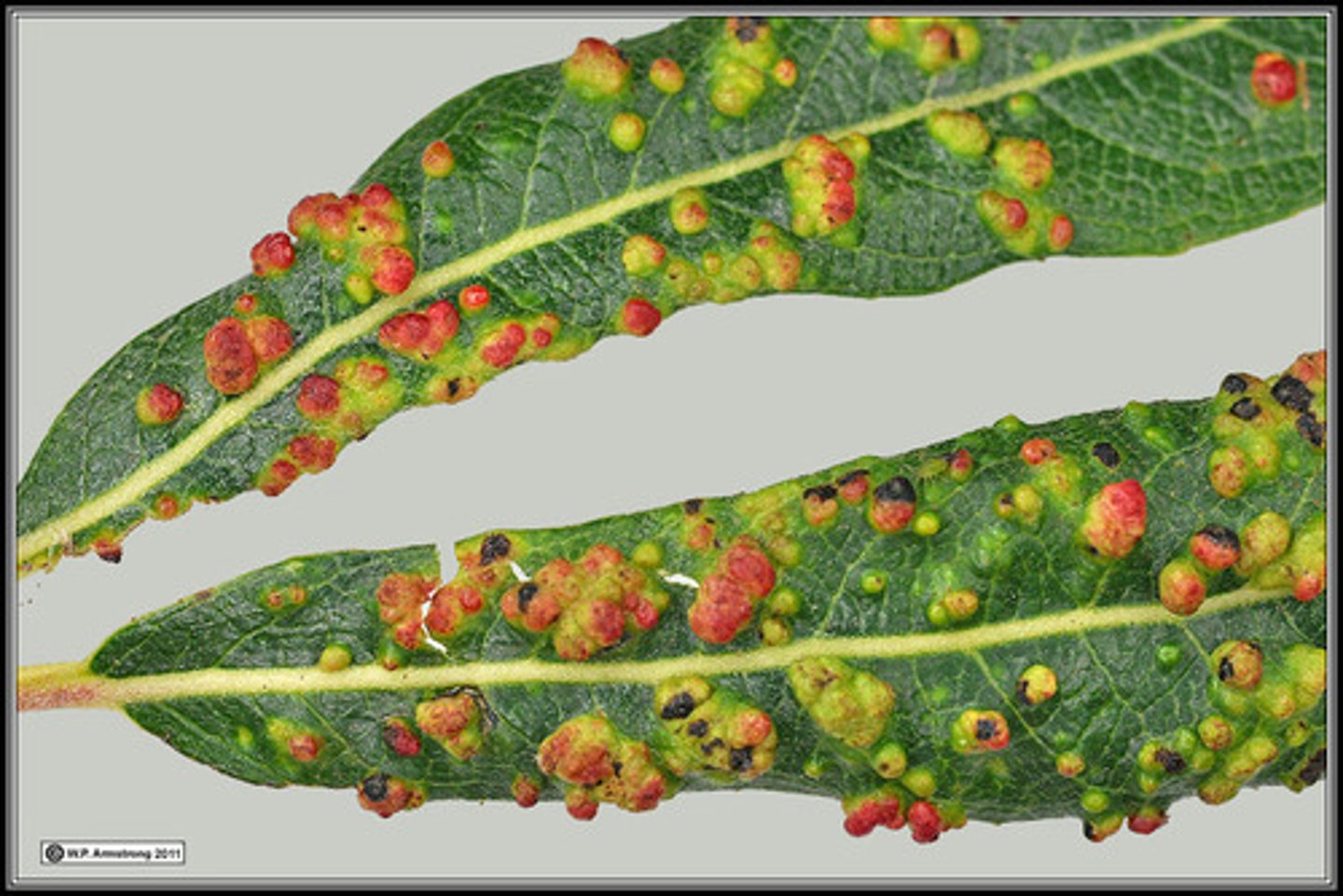
oak galls
appear as large spheres attached to the woody stems
- wasps lay their eggs into young bud tissue leave tissue , and through the bark (allows for the protection of the larvae from parasitoid wasps)
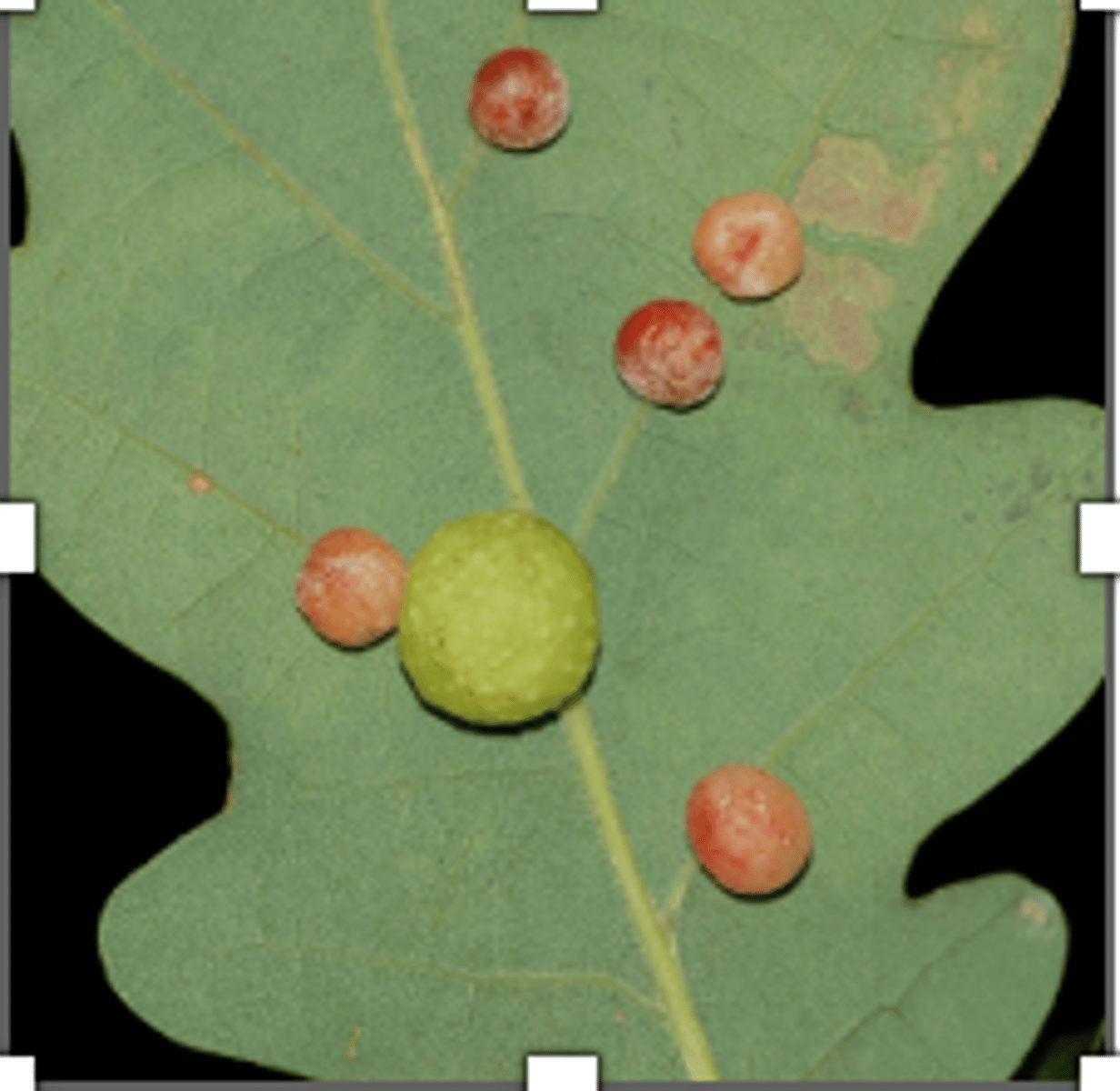
young galls
- soft and fleshy, and when old they are hard and pithy, and exit holes will usually be present (where insects escaped
